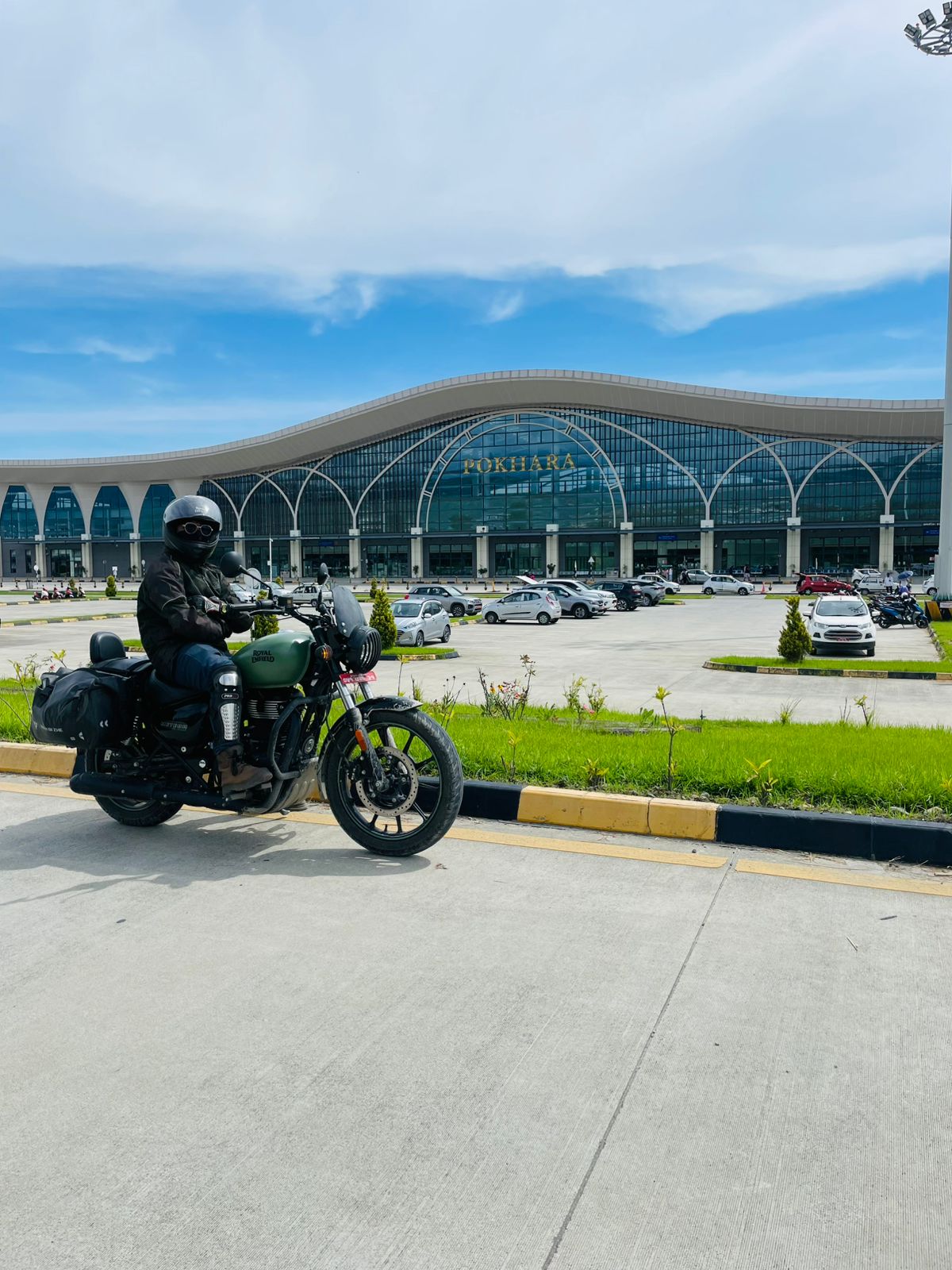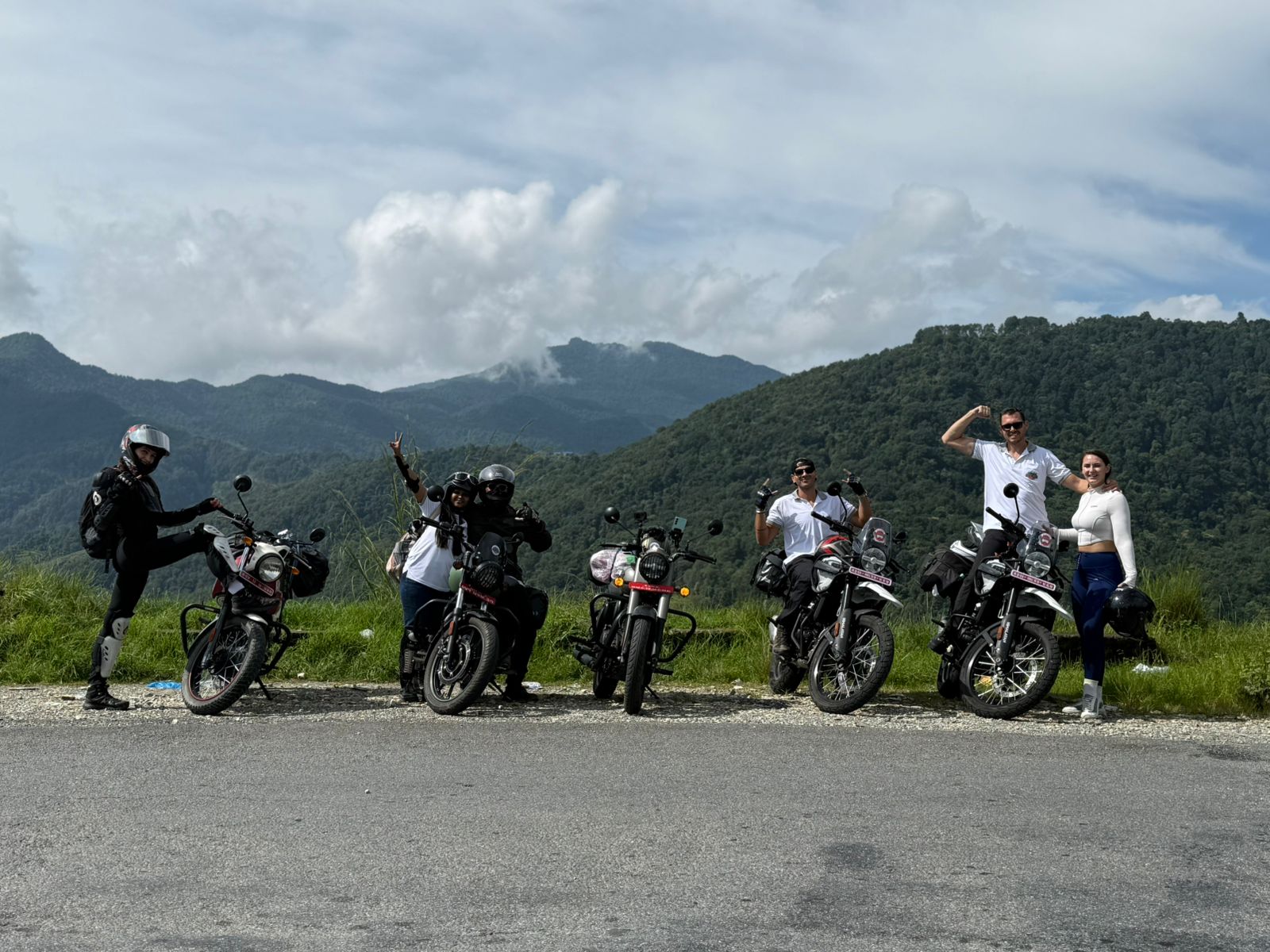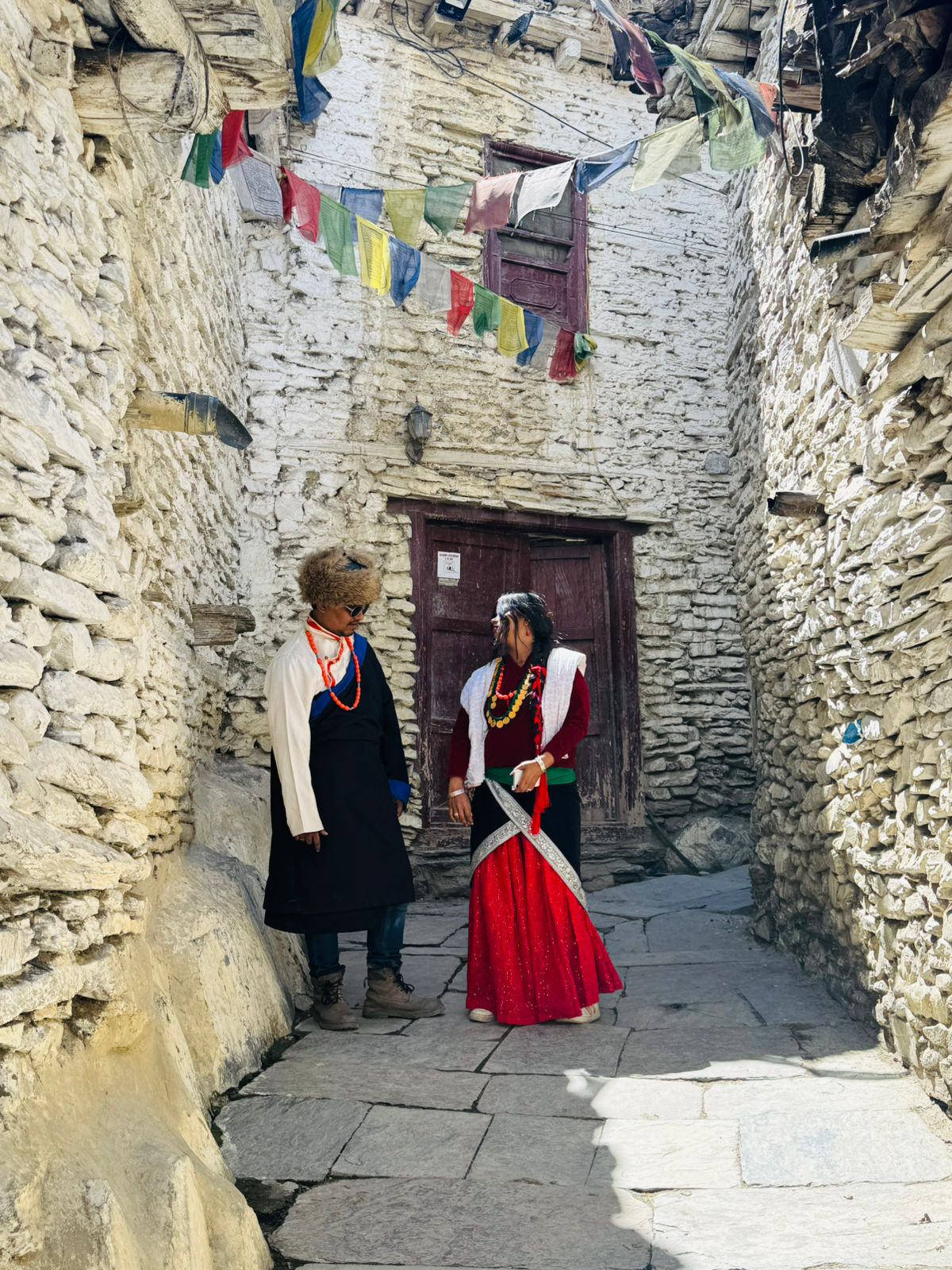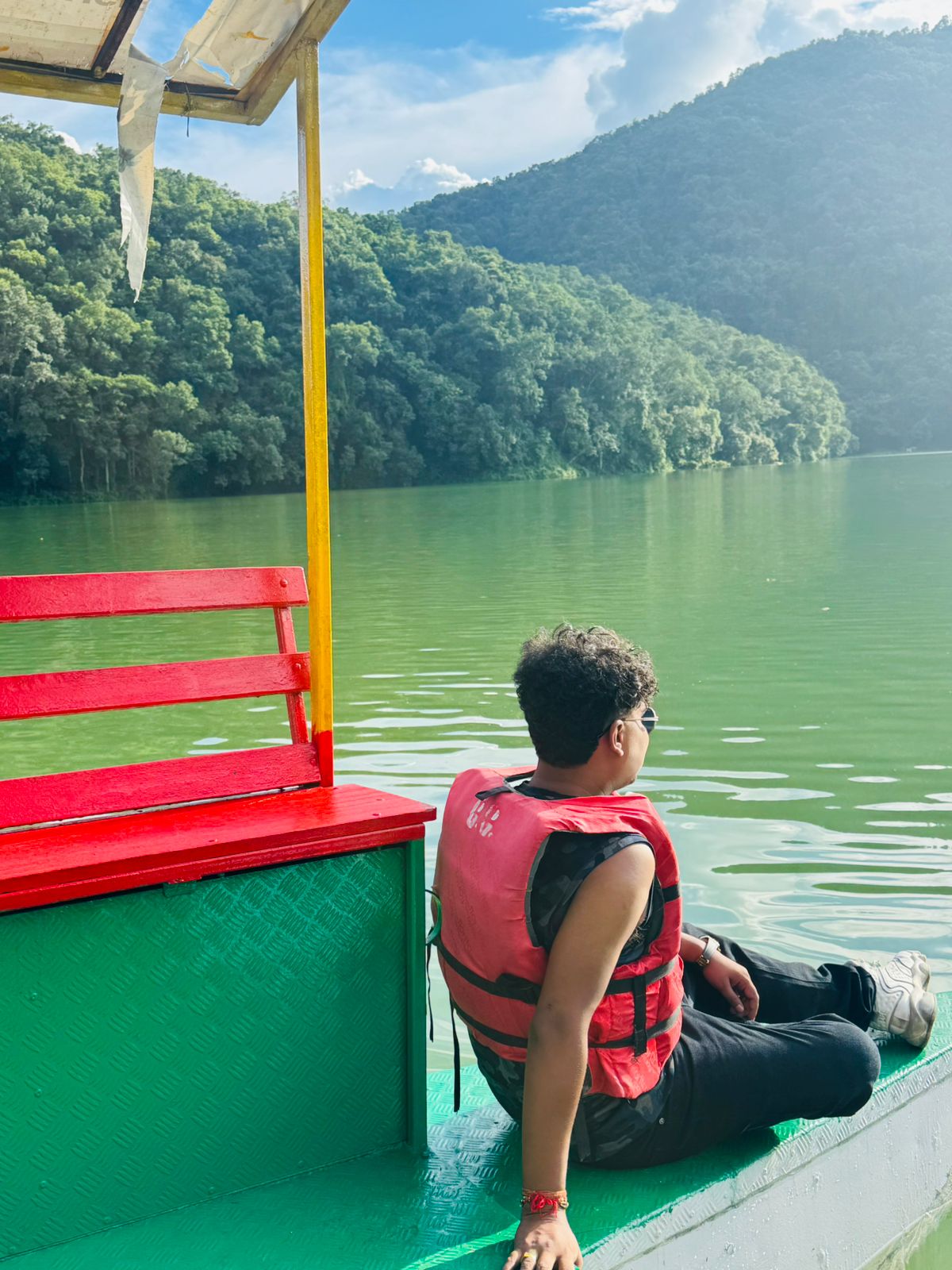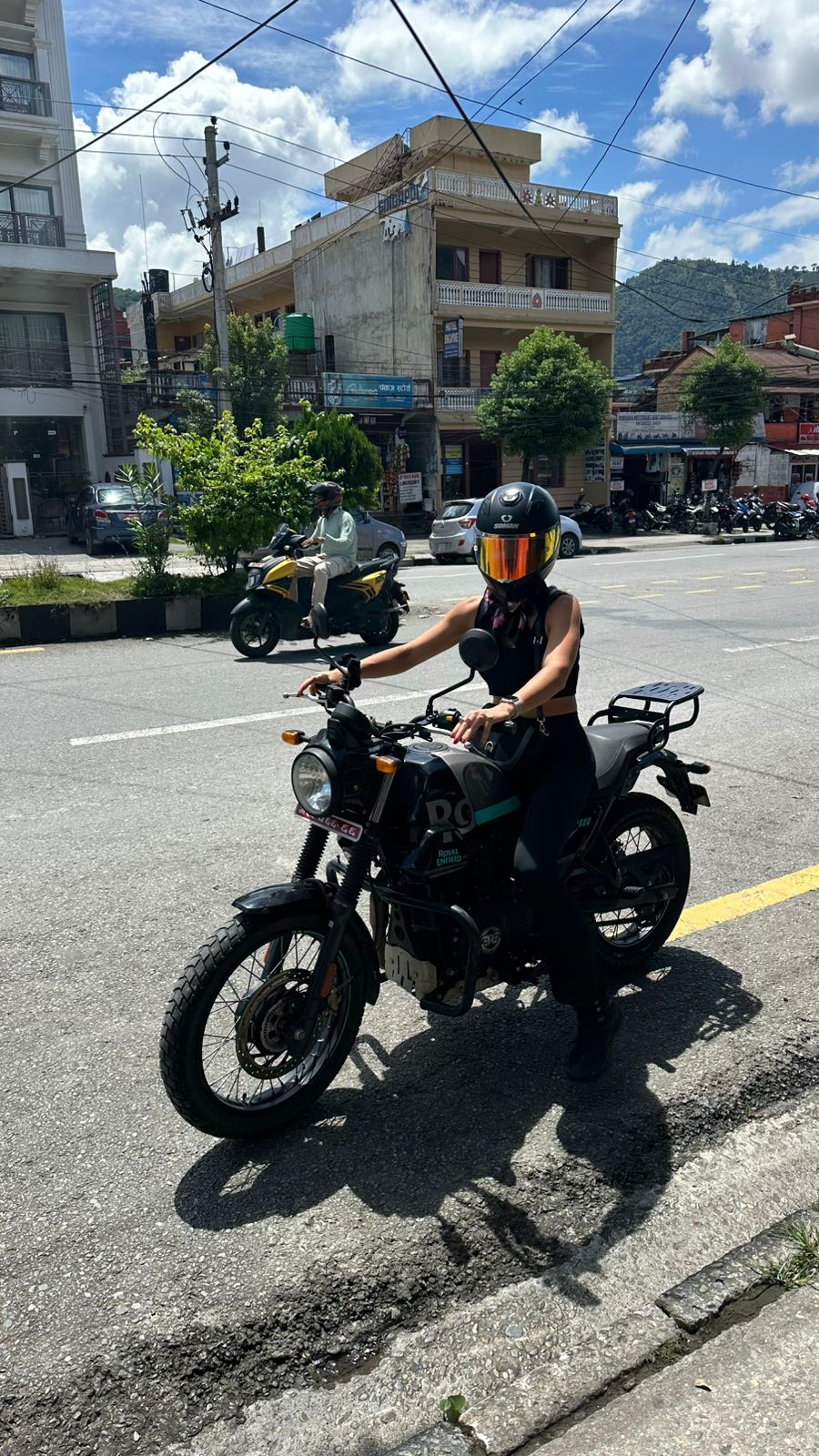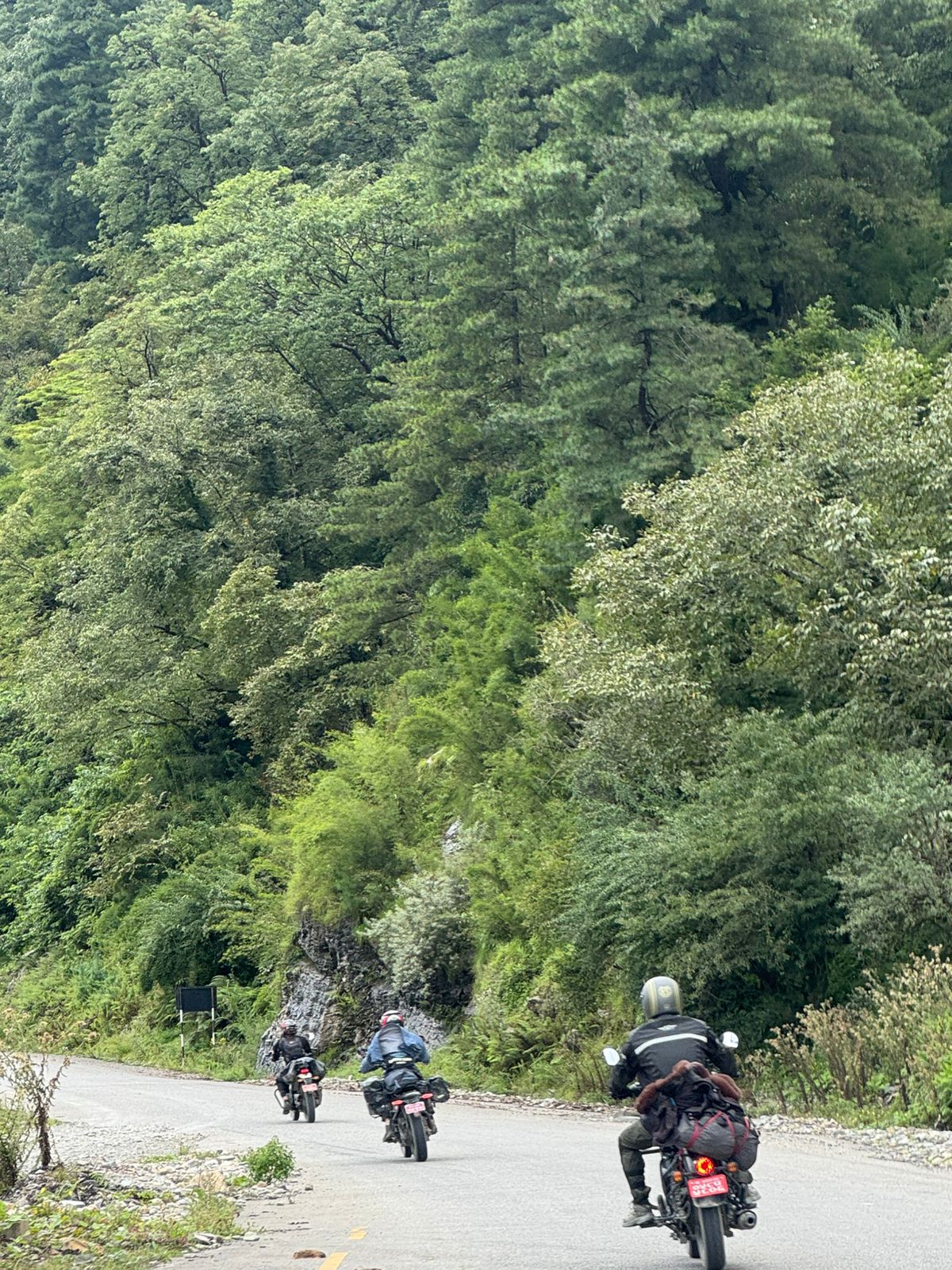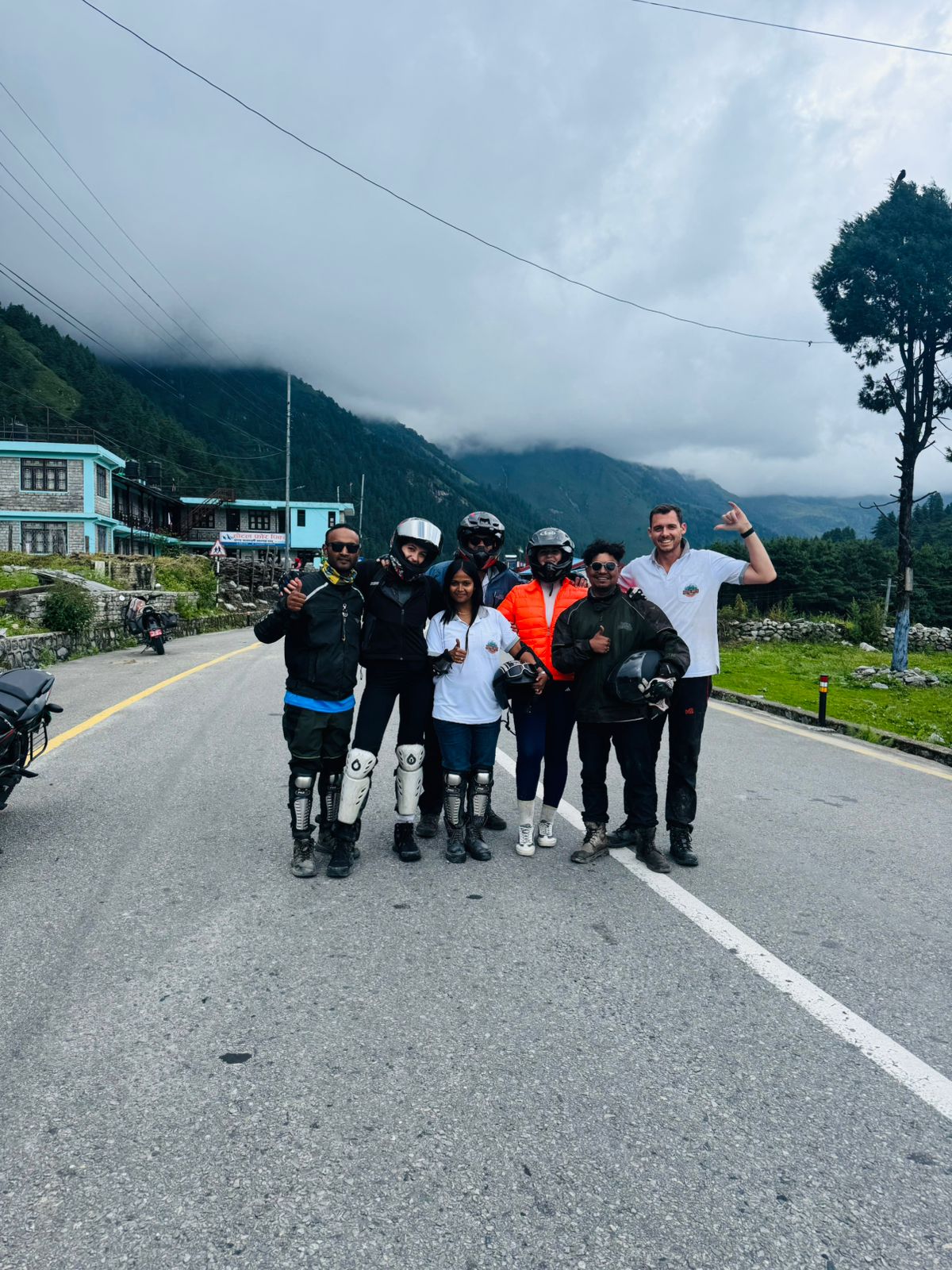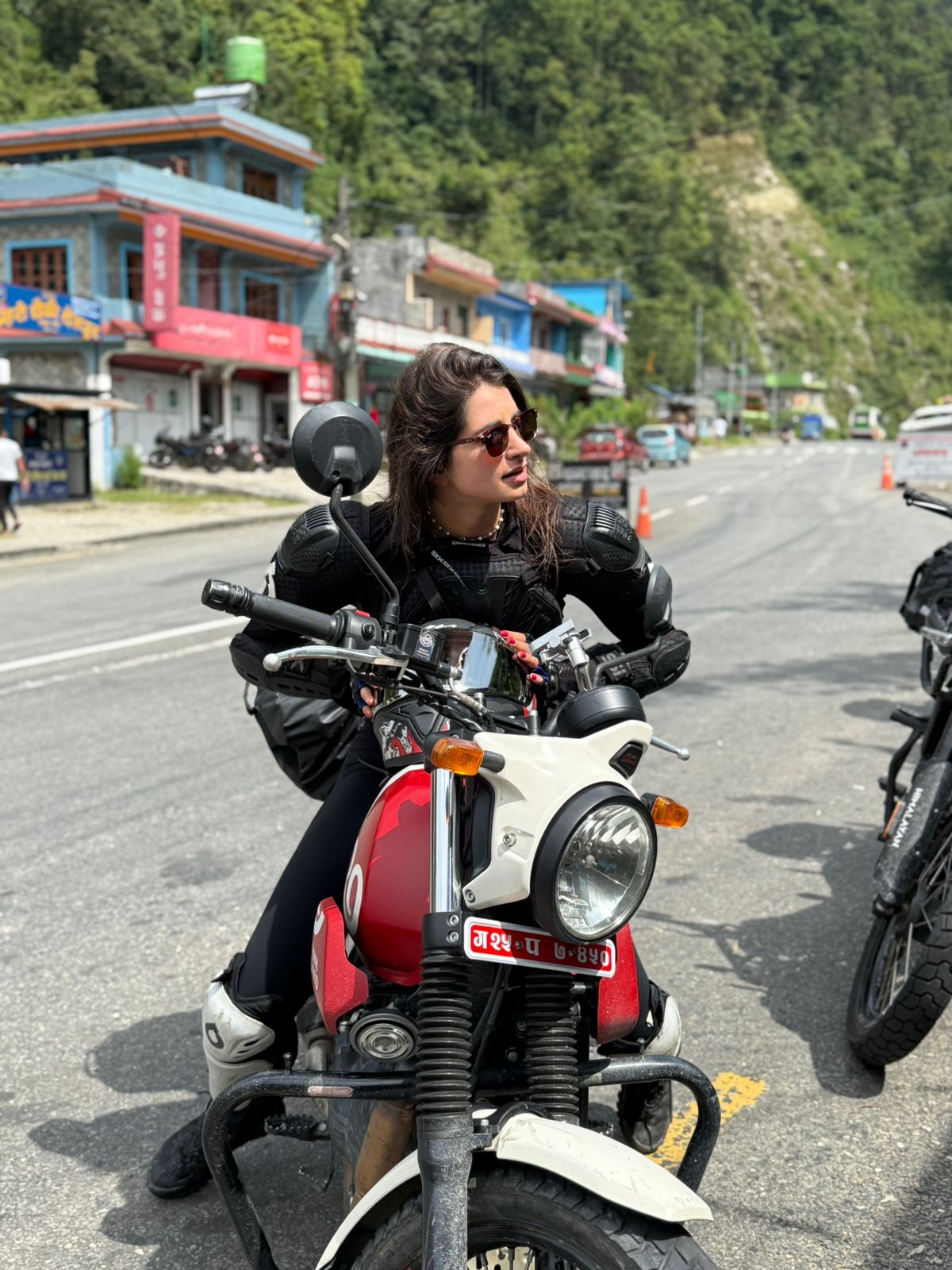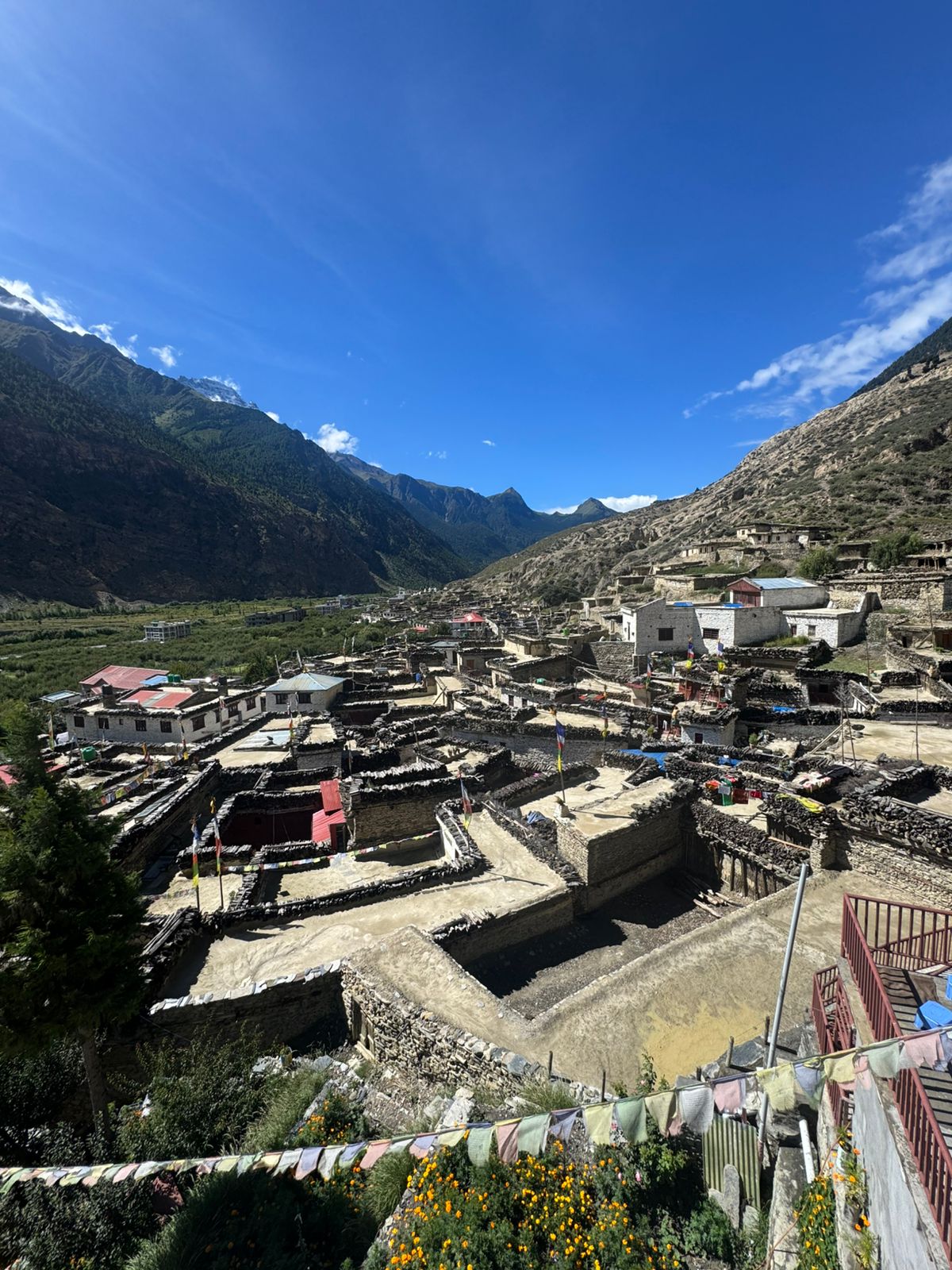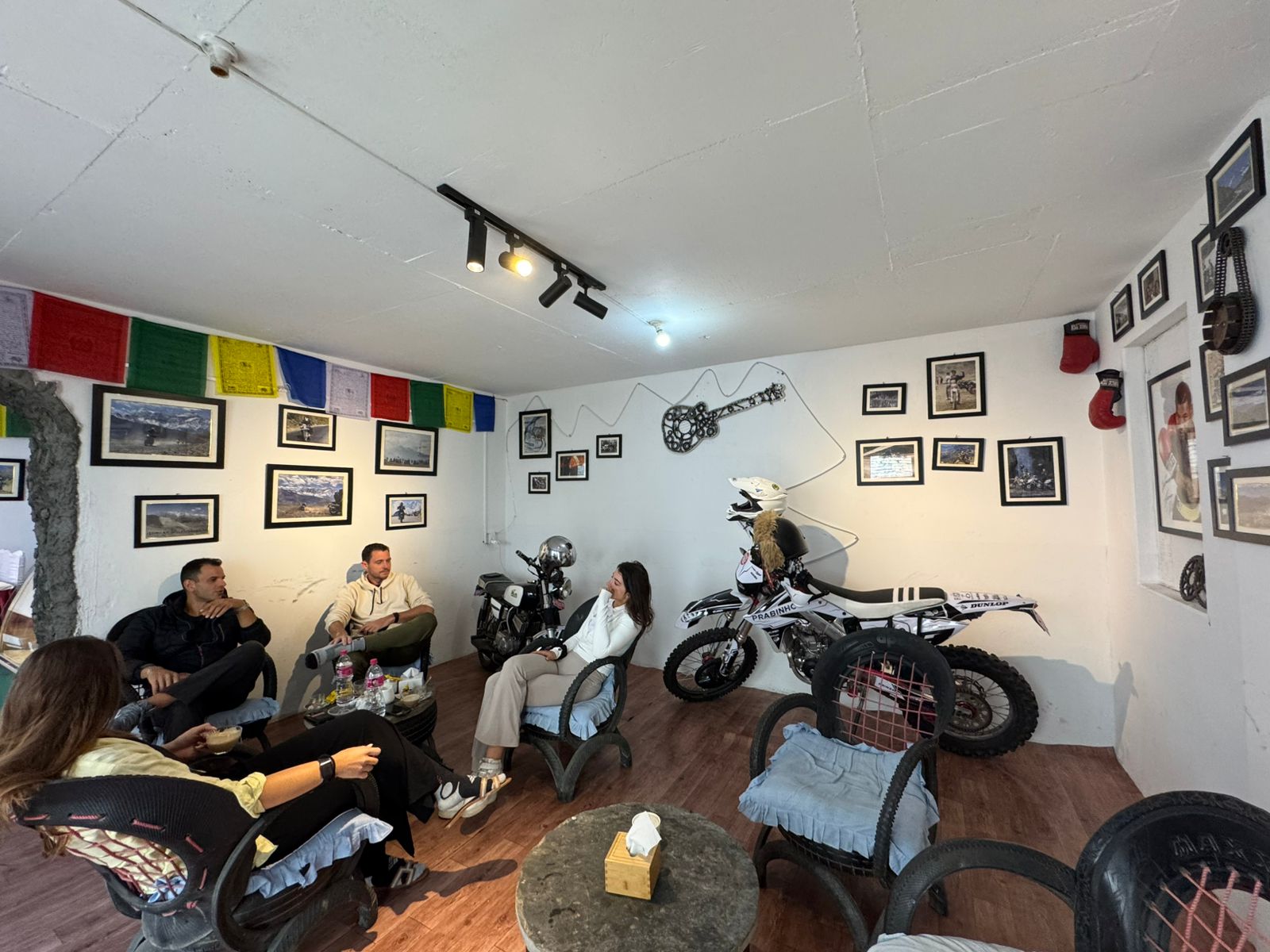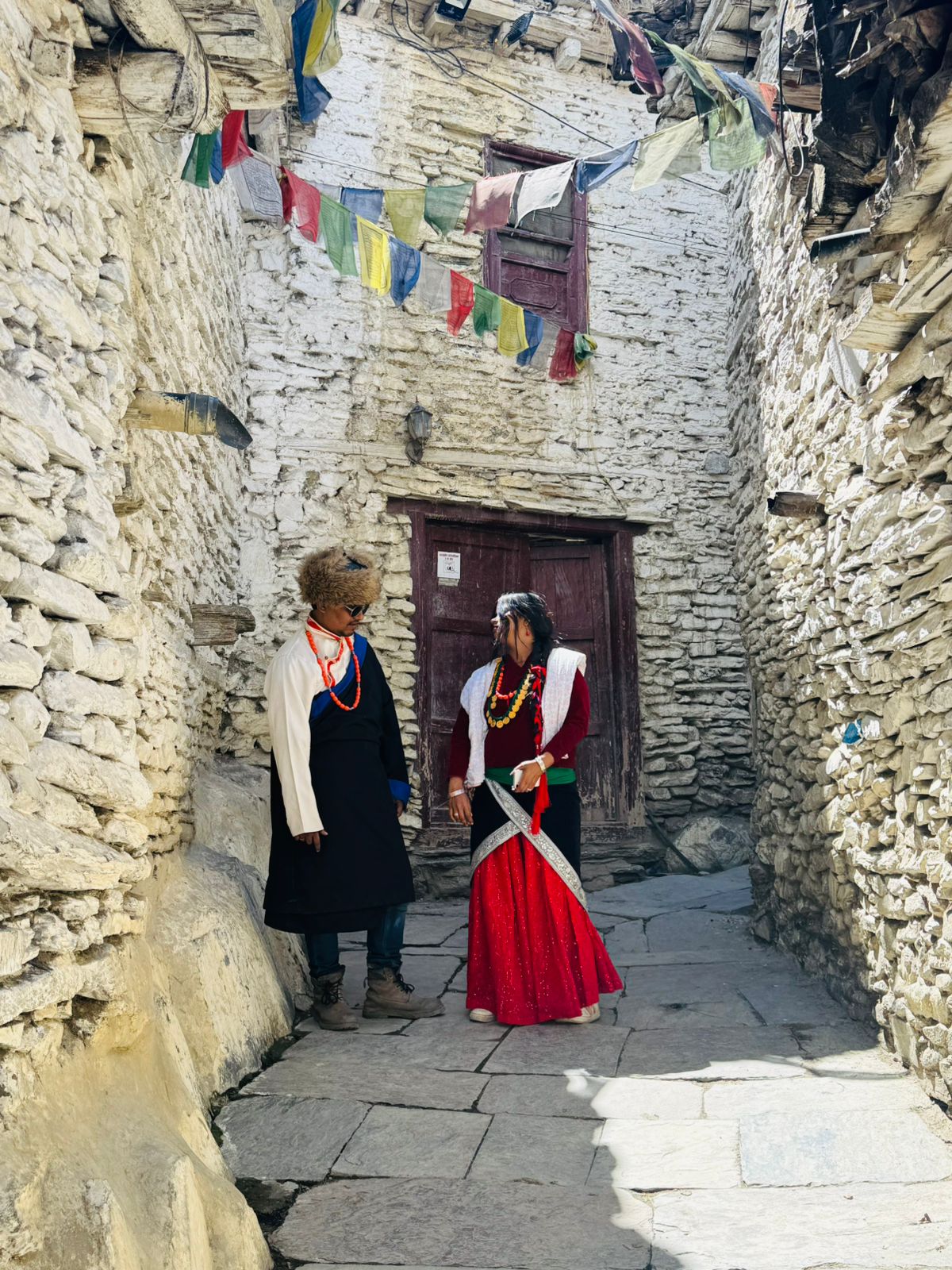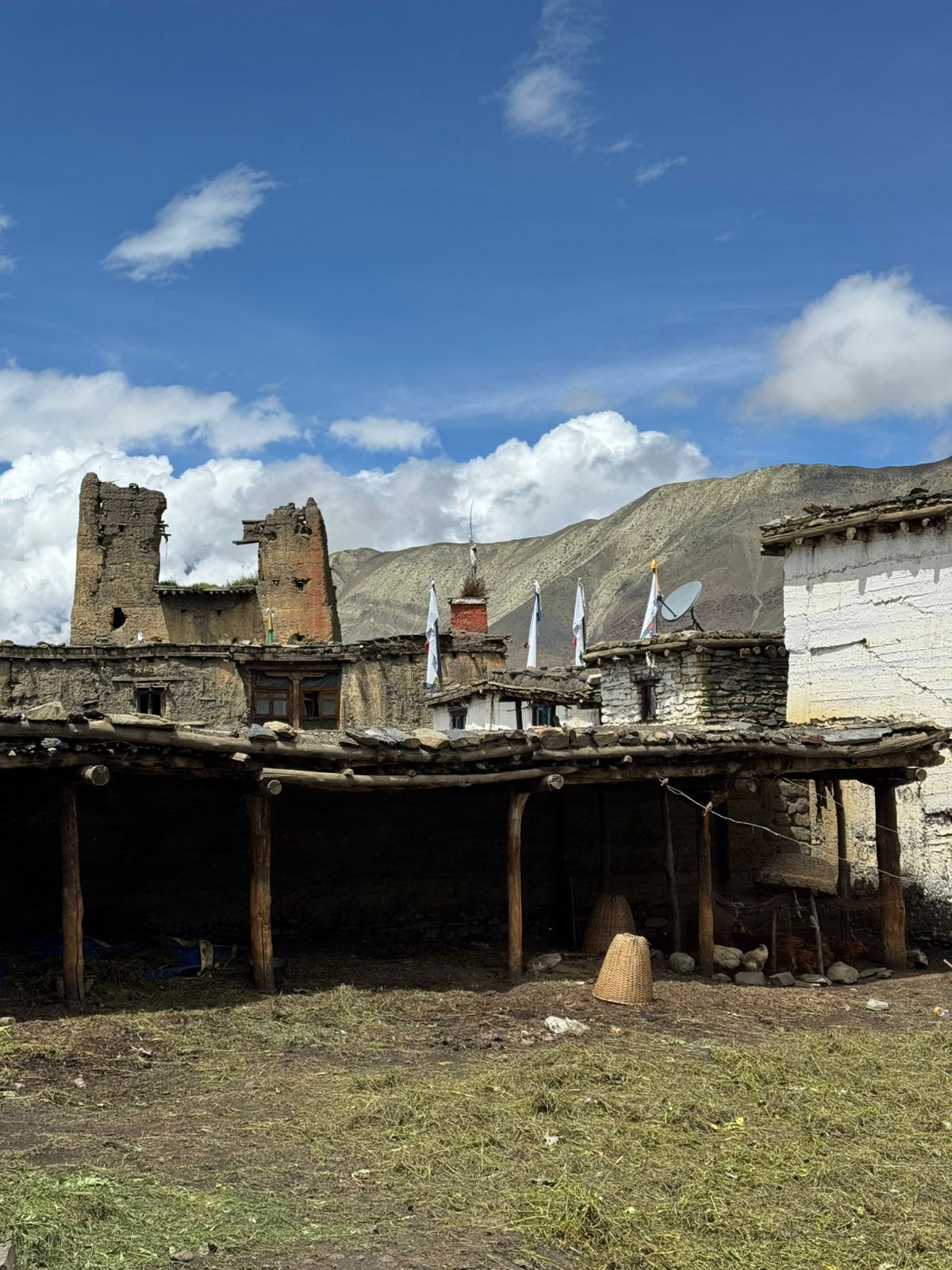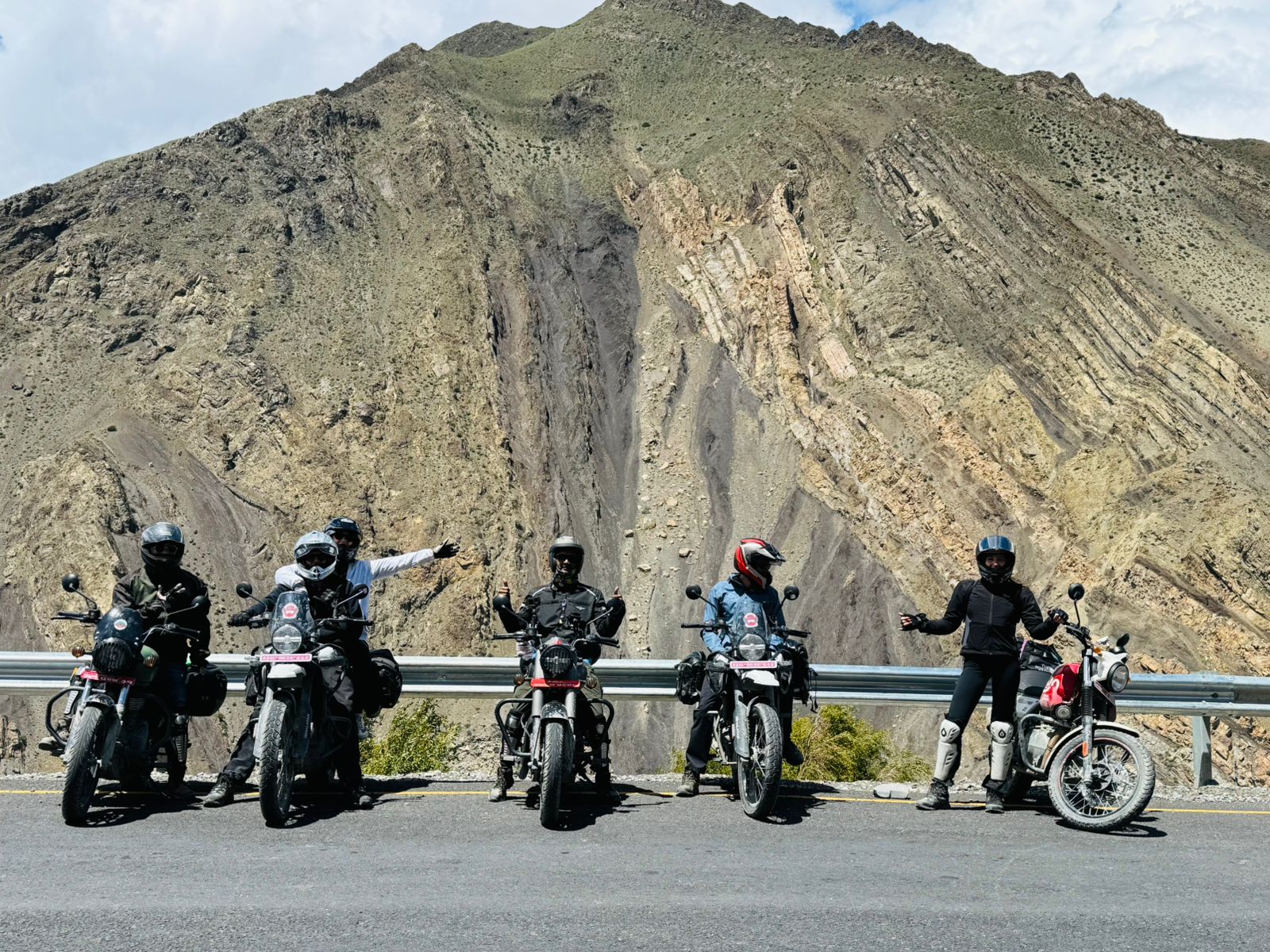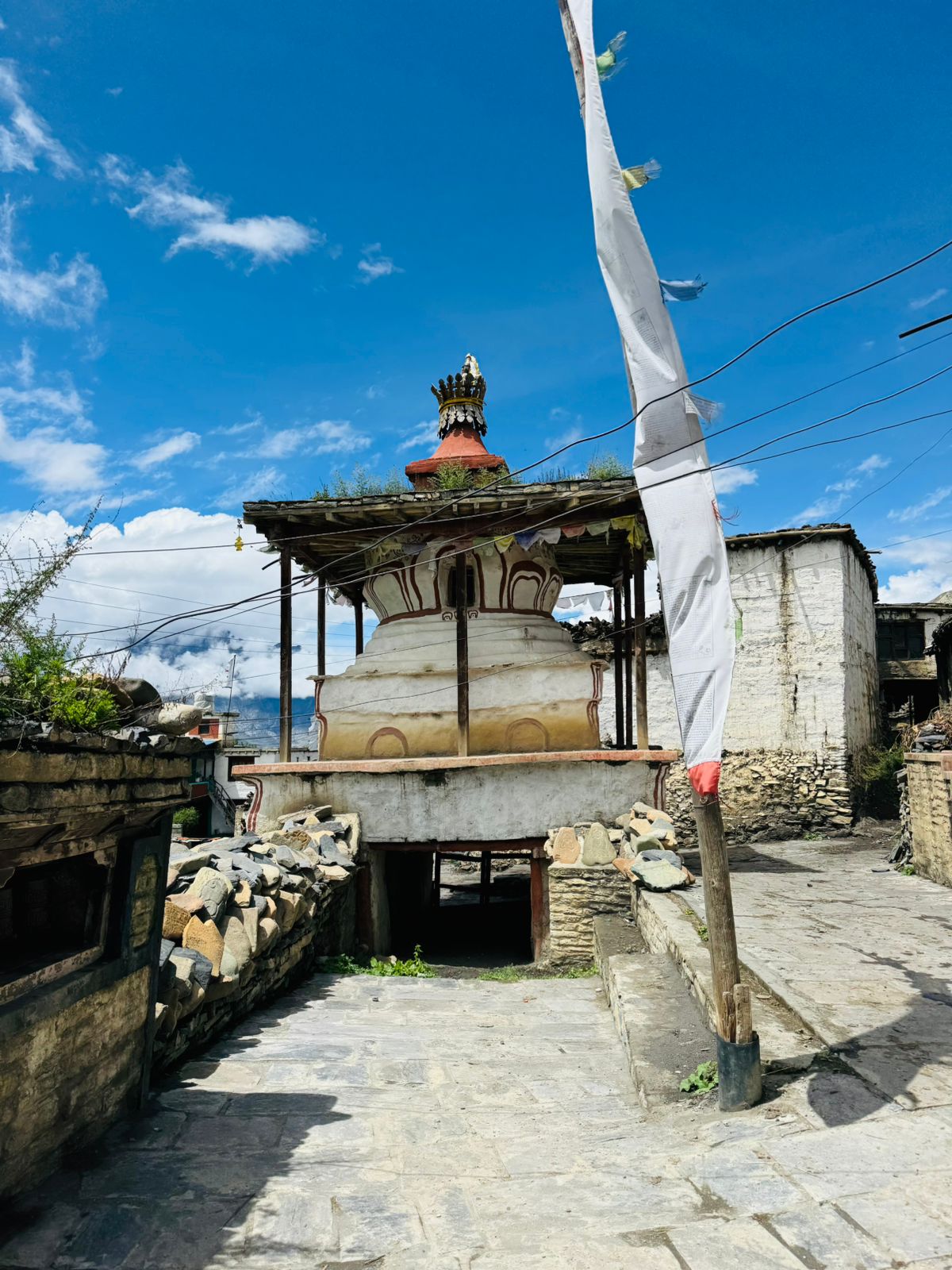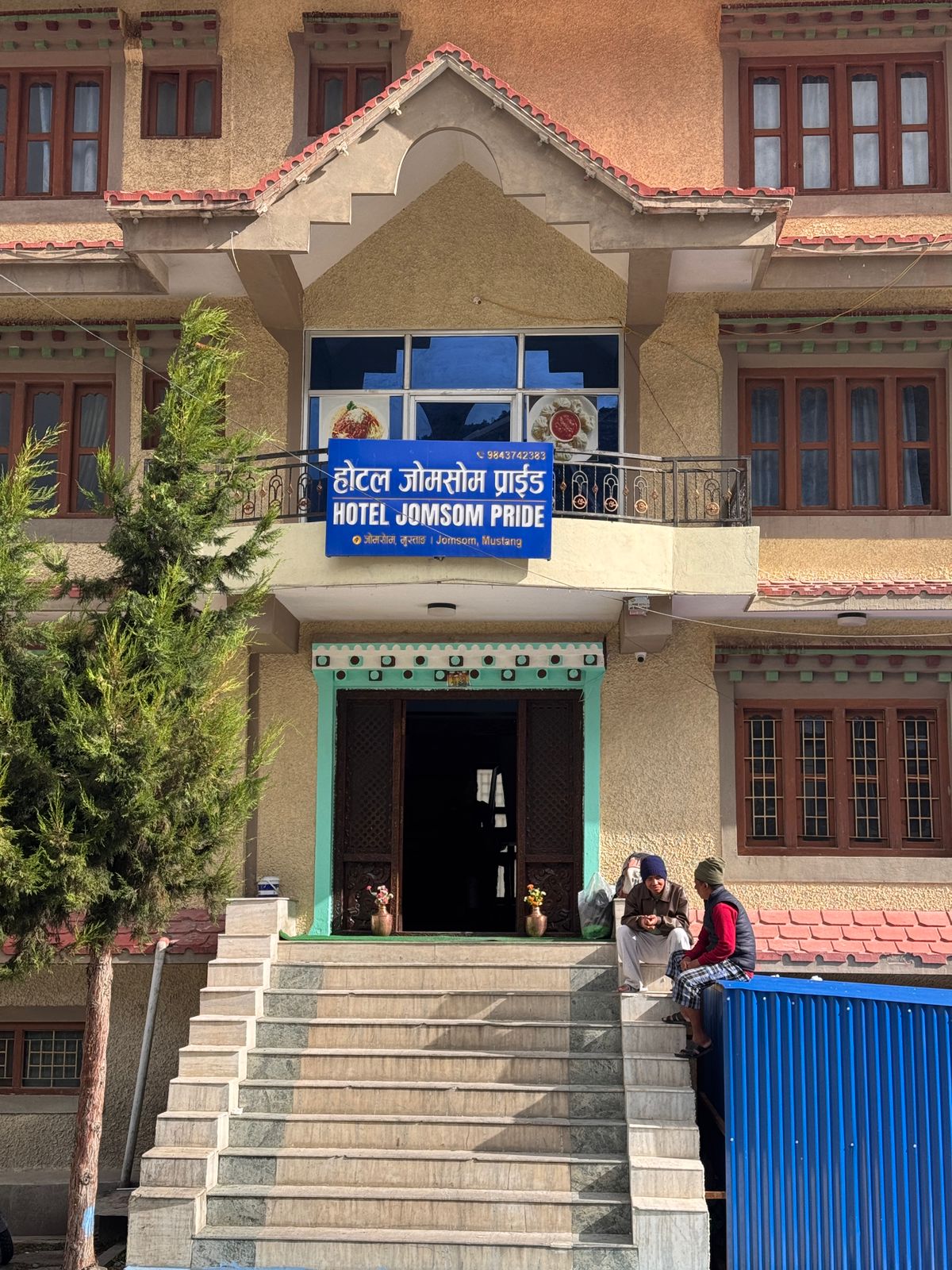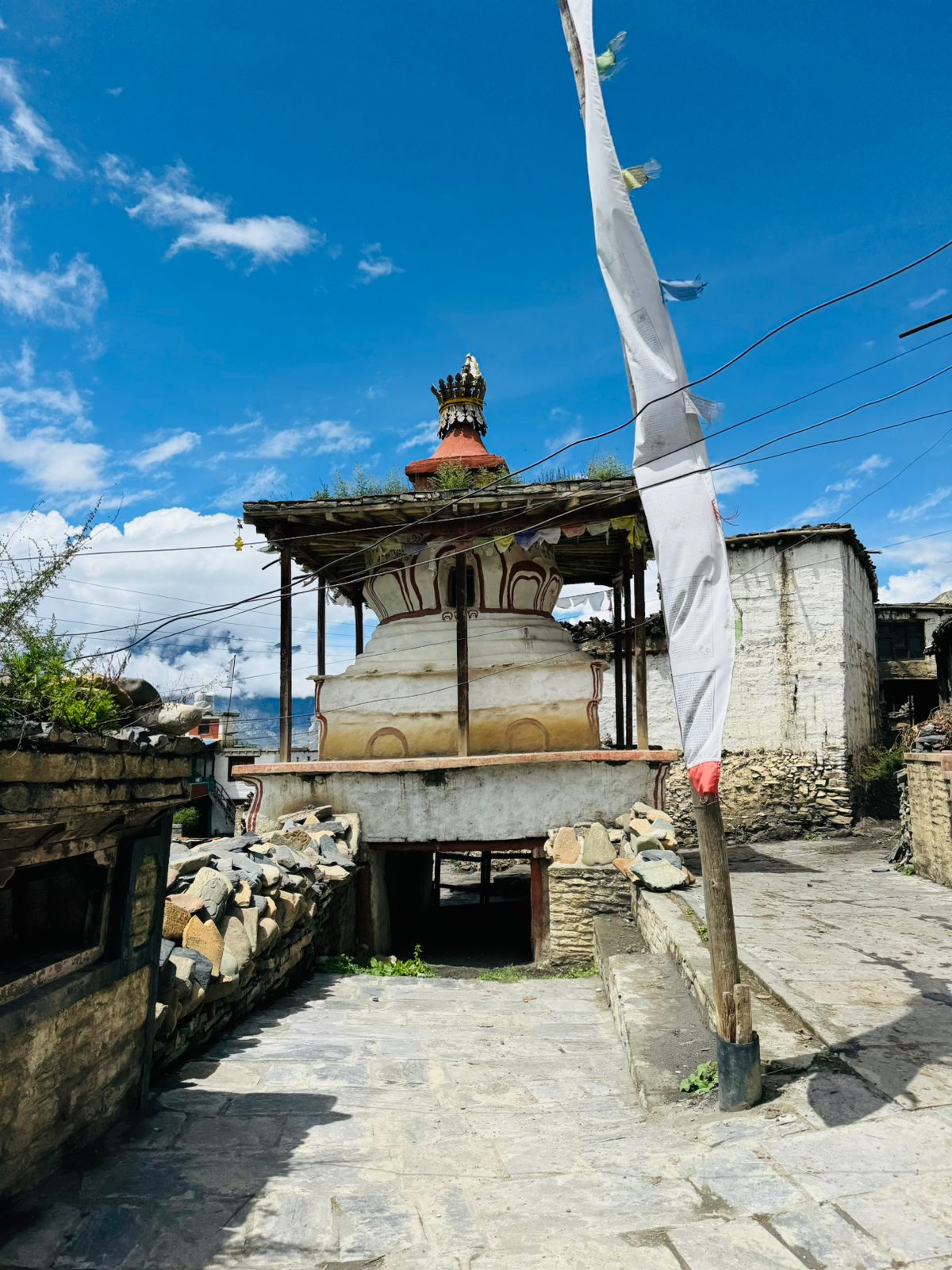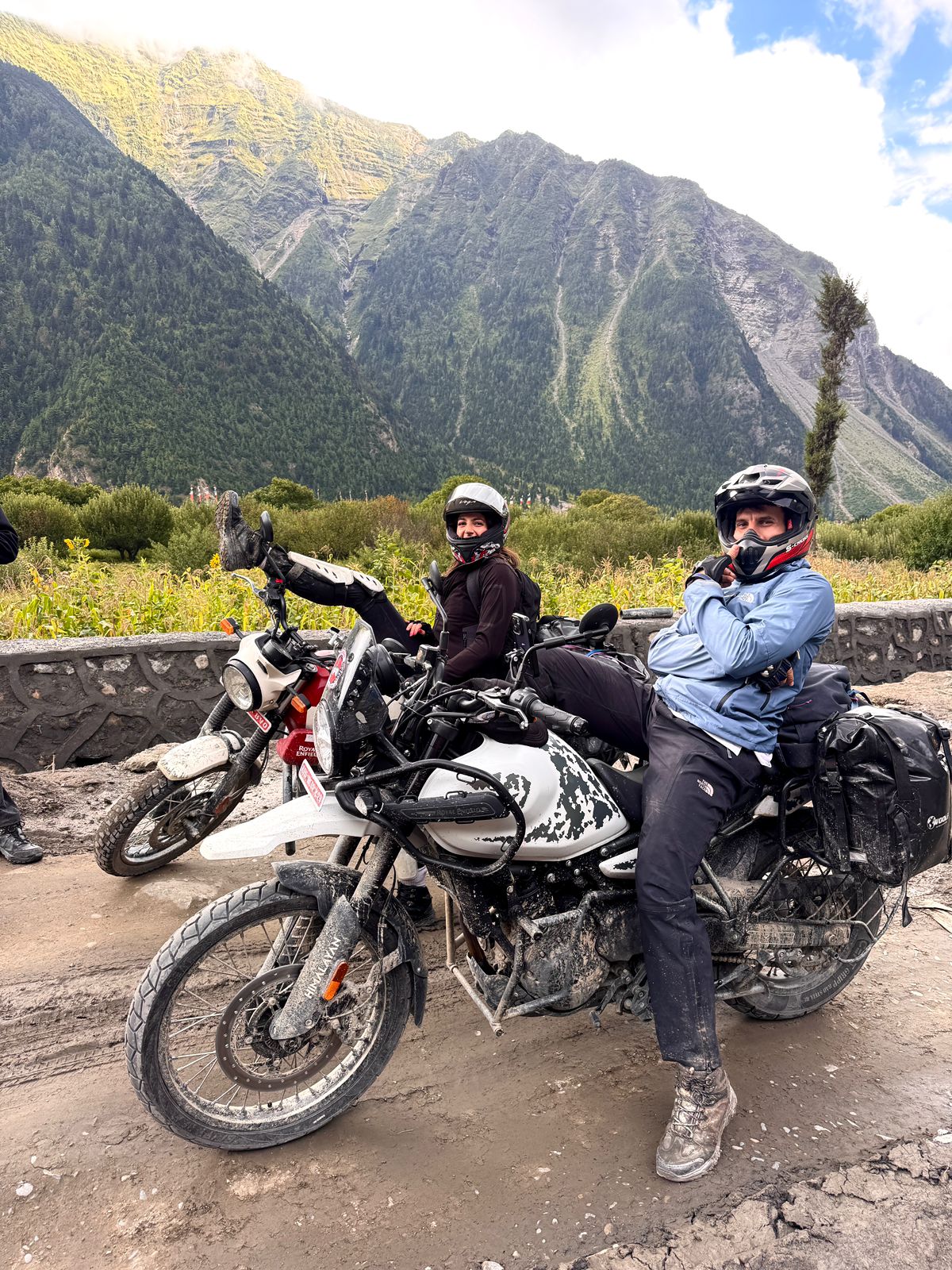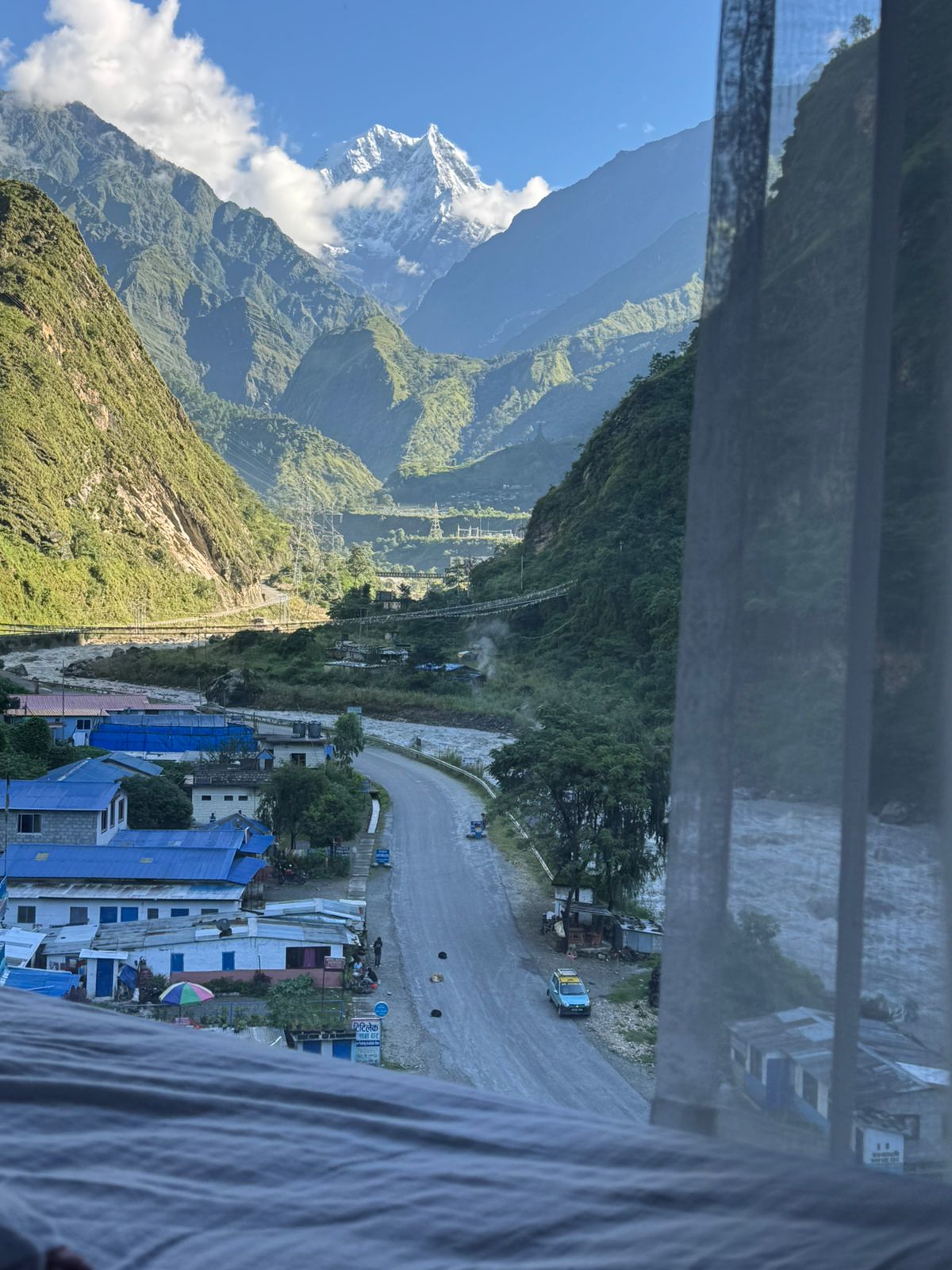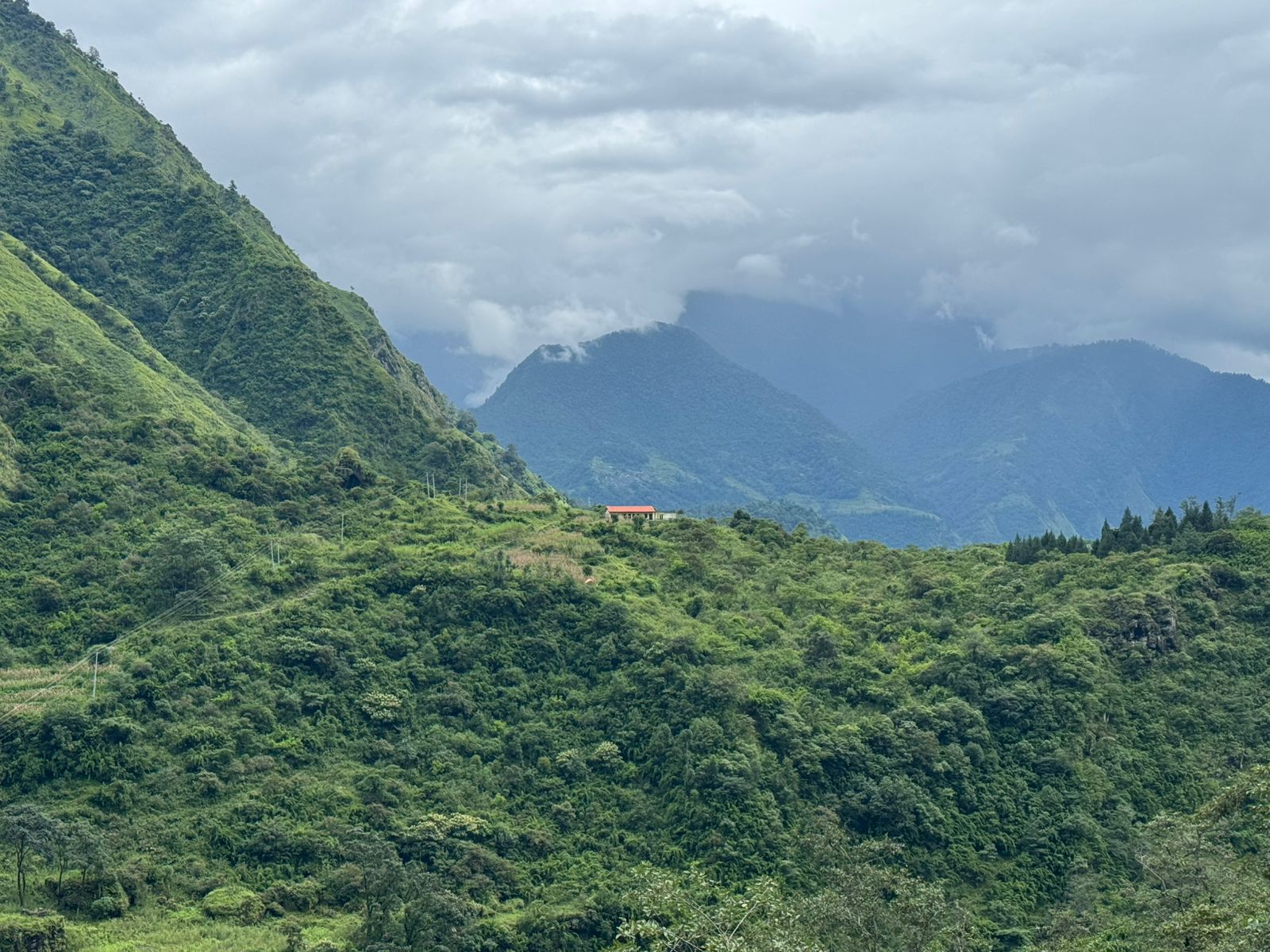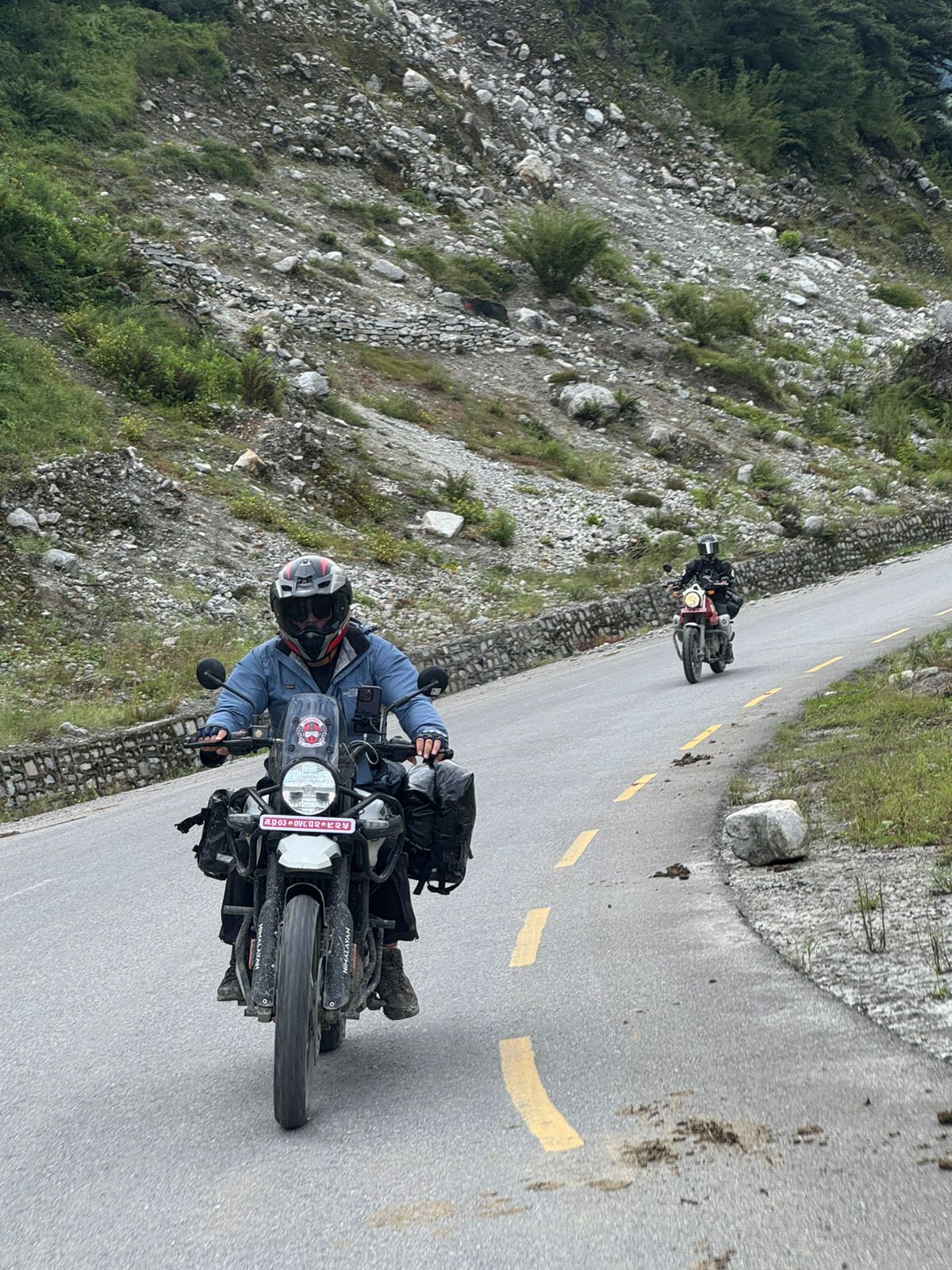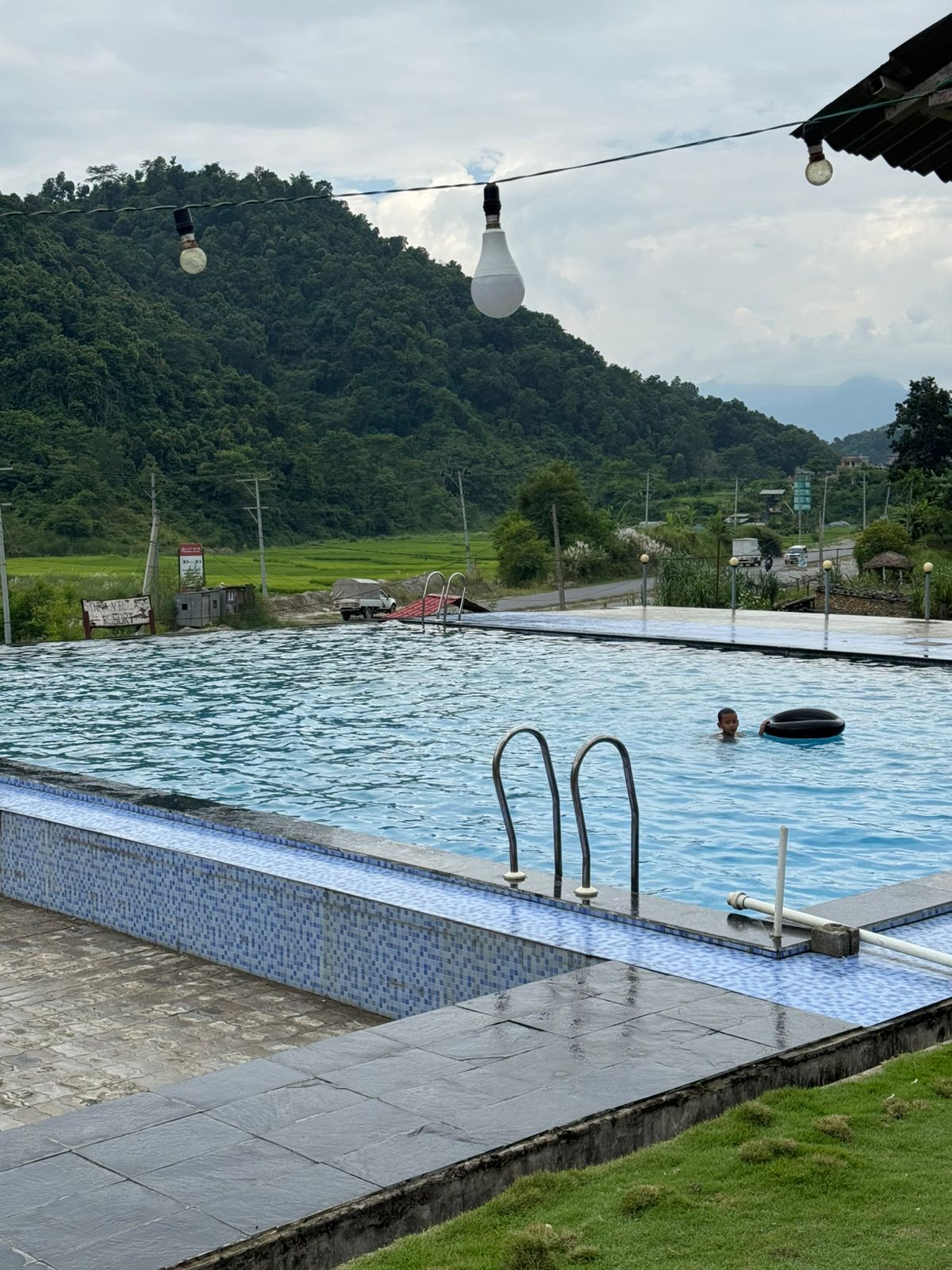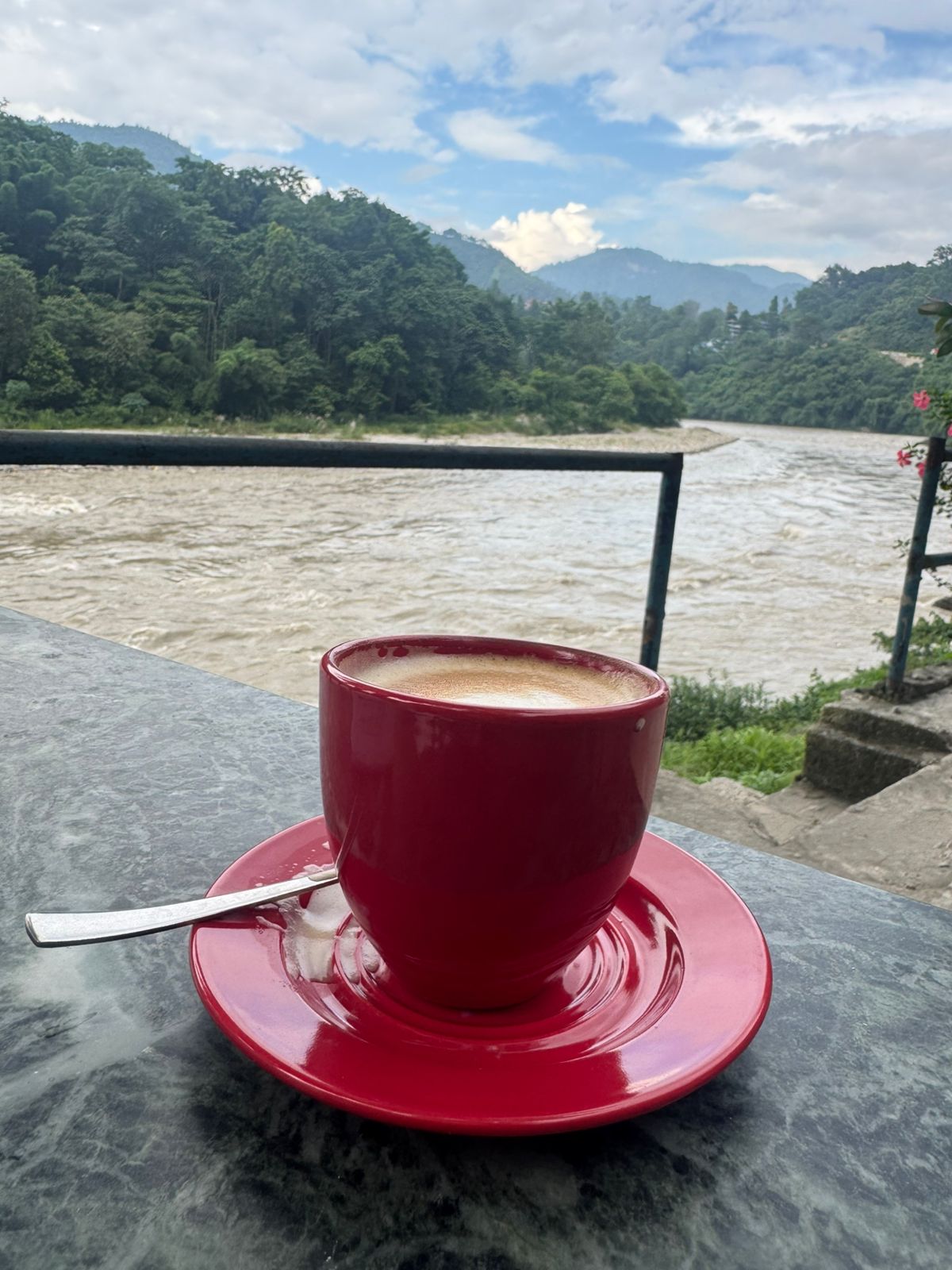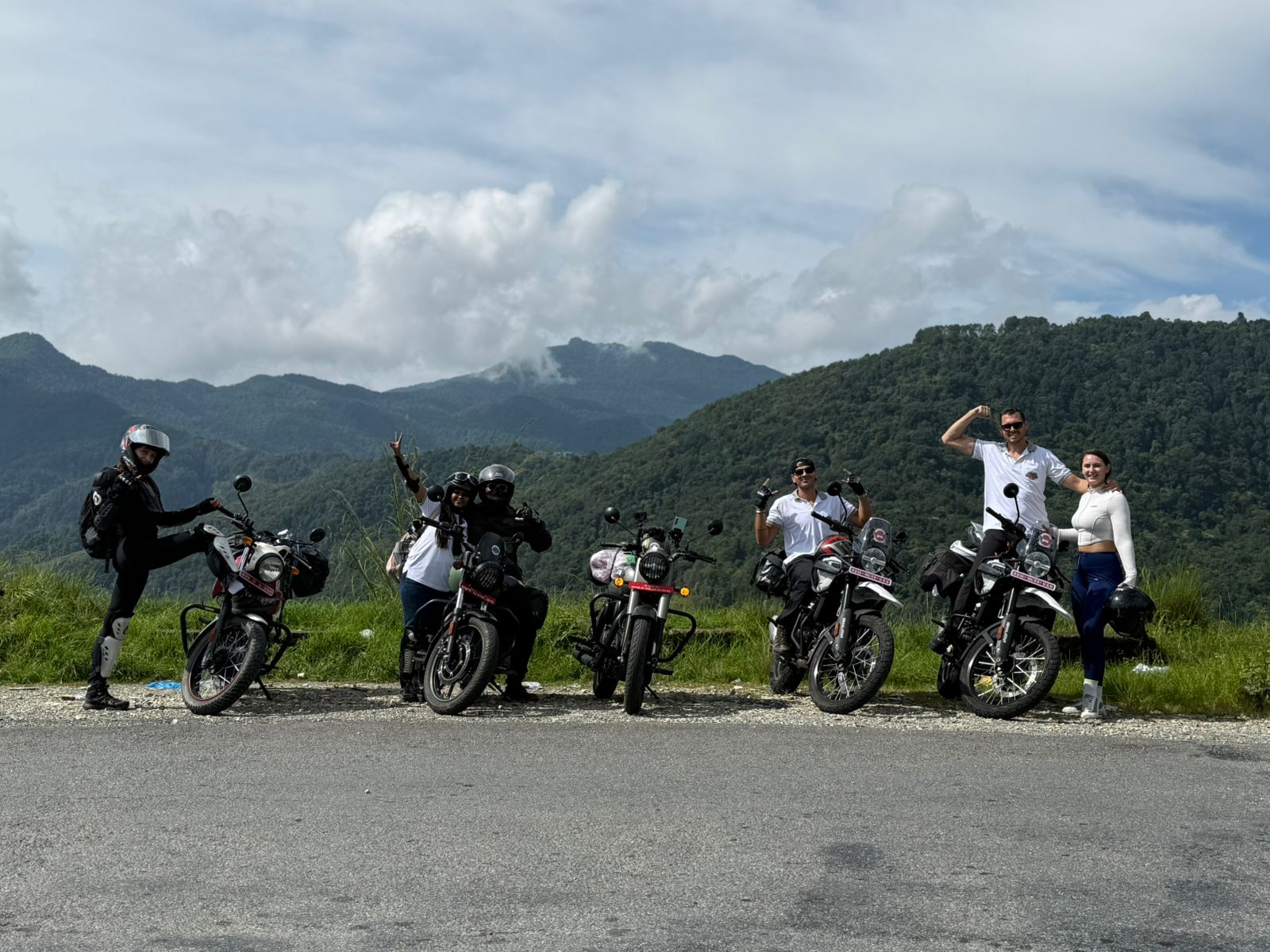
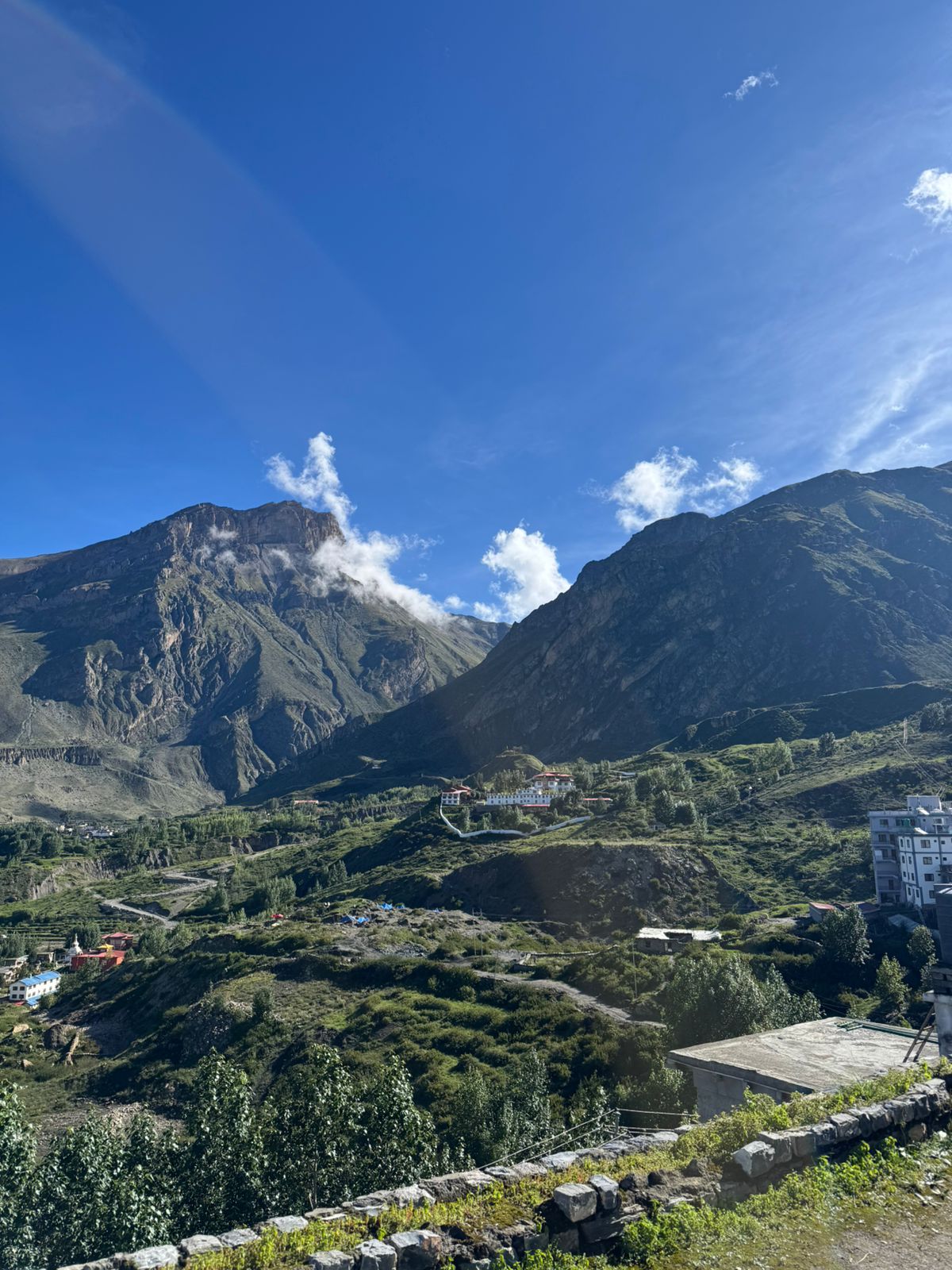
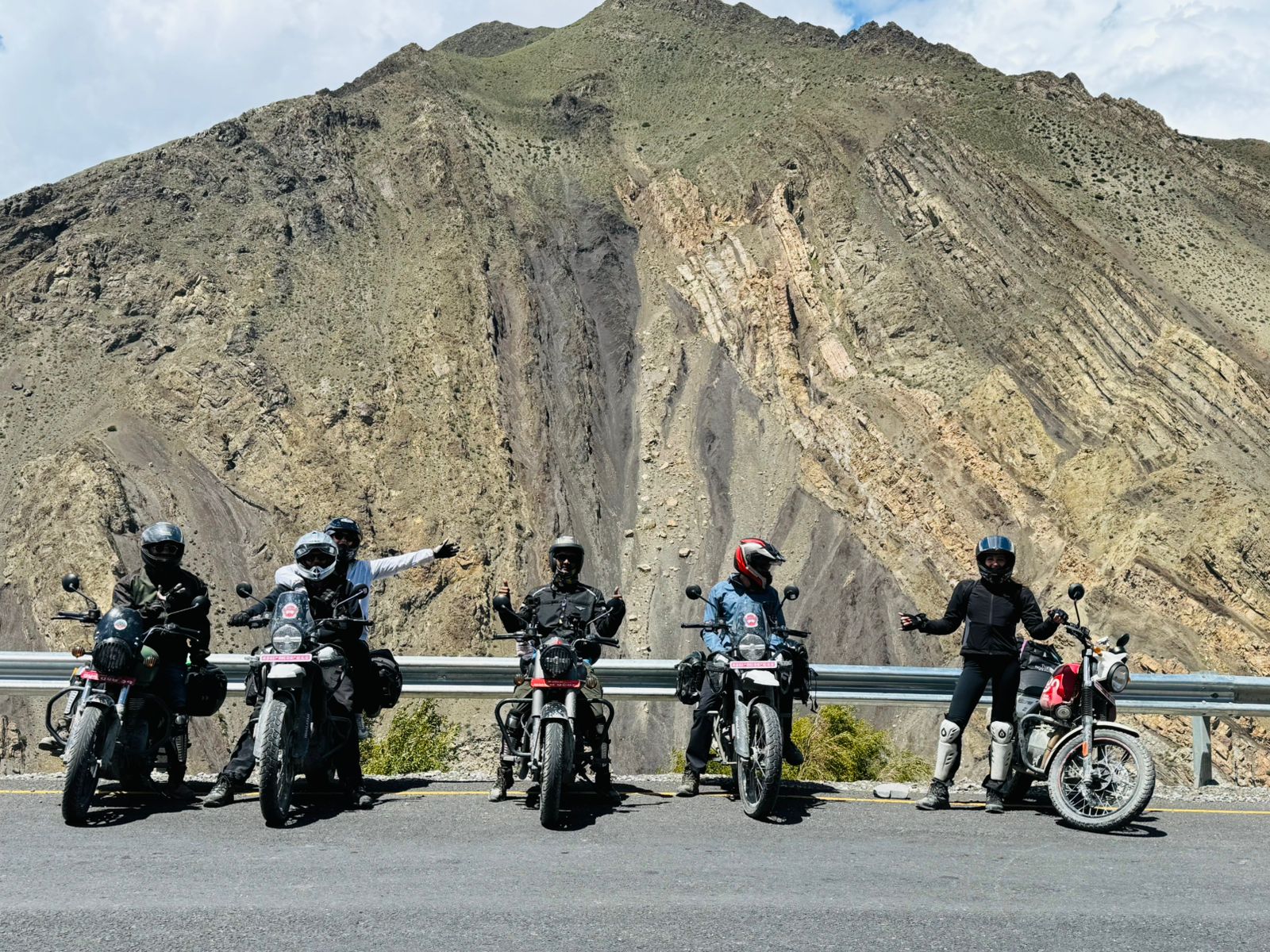
Lower Mustang Motorcycle Tour
If you’ve ever dreamed of riding a motorcycle across rugged Himalayan landscapes, crossing high mountain passes, and discovering centuries-old Tibetan villages, then the Lower Mustang Motorcycle Tour in Nepal is going to be the ultimate adventure for you. This is not just a motorcycle trip, it’s a journey into the spirit of the Himalayas.
Lower Mustang lies in the rain shadow of the Annapurna and Dhaulagiri ranges, making it one of the most accessible Himalayan regions year-round. Unlike Upper Mustang, which requires an expensive restricted-area permit, Lower Mustang is affordable, beginner-friendly, and filled with just as much adventure.
This motorcycle journey takes you along the Kali Gandaki Gorge, the deepest gorge in the world, all the way to Muktinath Temple (3,800m), which is a sacred pilgrimage site for Hindus and Buddhists. Along the way, you’ll ride through apple orchards, Tibetan monasteries, medieval villages, and dramatic desert-like terrain.
Whether you’re a seasoned rider looking for Himalayan thrills or a curious traveler craving authentic culture and epic landscapes, the Lower Mustang motorbike trip offers the perfect blend of adventure, culture, and natural beauty
Highlights of Lower Mustang Motorcycle Tour
- Ride through the world’s deepest gorge – The Kali Gandaki gorge between Annapurna and Dhaulagiri.
- Sacred visit to Muktinath Temple (3,800m) – A holy site for both Hindus and Buddhists.
- Kagbeni village exploration – The medieval gateway to Upper Mustang.
- Epic Himalayan scenery – Annapurna, Nilgiri, Dhaulagiri peaks dominating your horizon.
- Taste Mustang apples & brandy – Famous local produce in Marpha.
- Off-road adventure riding – Gravel tracks, river crossings, rocky trails, and suspension bridges.
- Meet the Thakali and Tibetan people – Experience warm hospitality in tea houses.
- Ride adventure-ready motorcycles – Royal Enfield Himalayans, Classics, and Honda XRs.
- Authentic local stays – Traditional guesthouses and tea houses with hearty Nepali meals.
- Unforgettable photography – From desert cliffs to snowy peaks, every corner is a postcard
Itinerary
Tour Images (4)
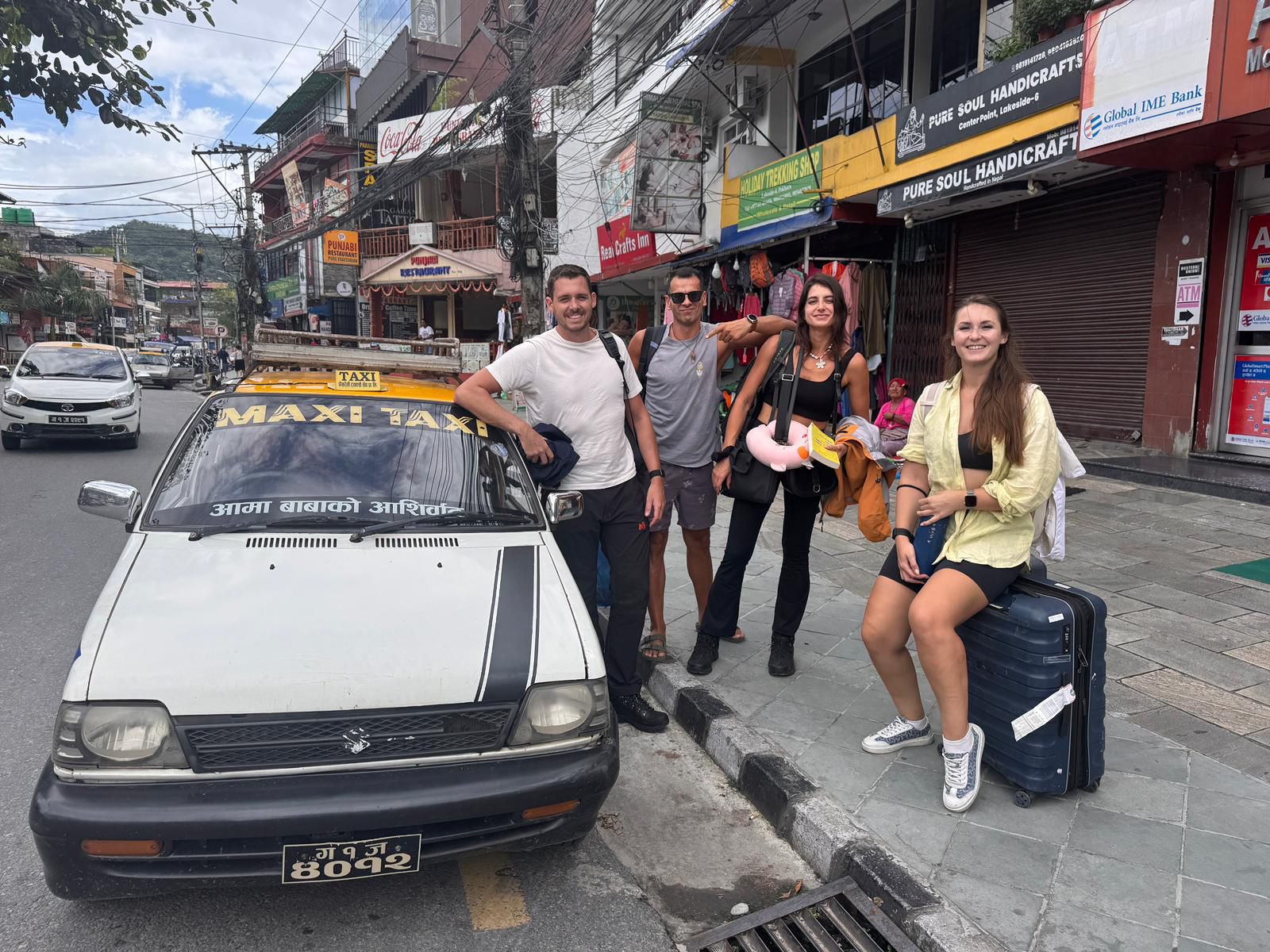
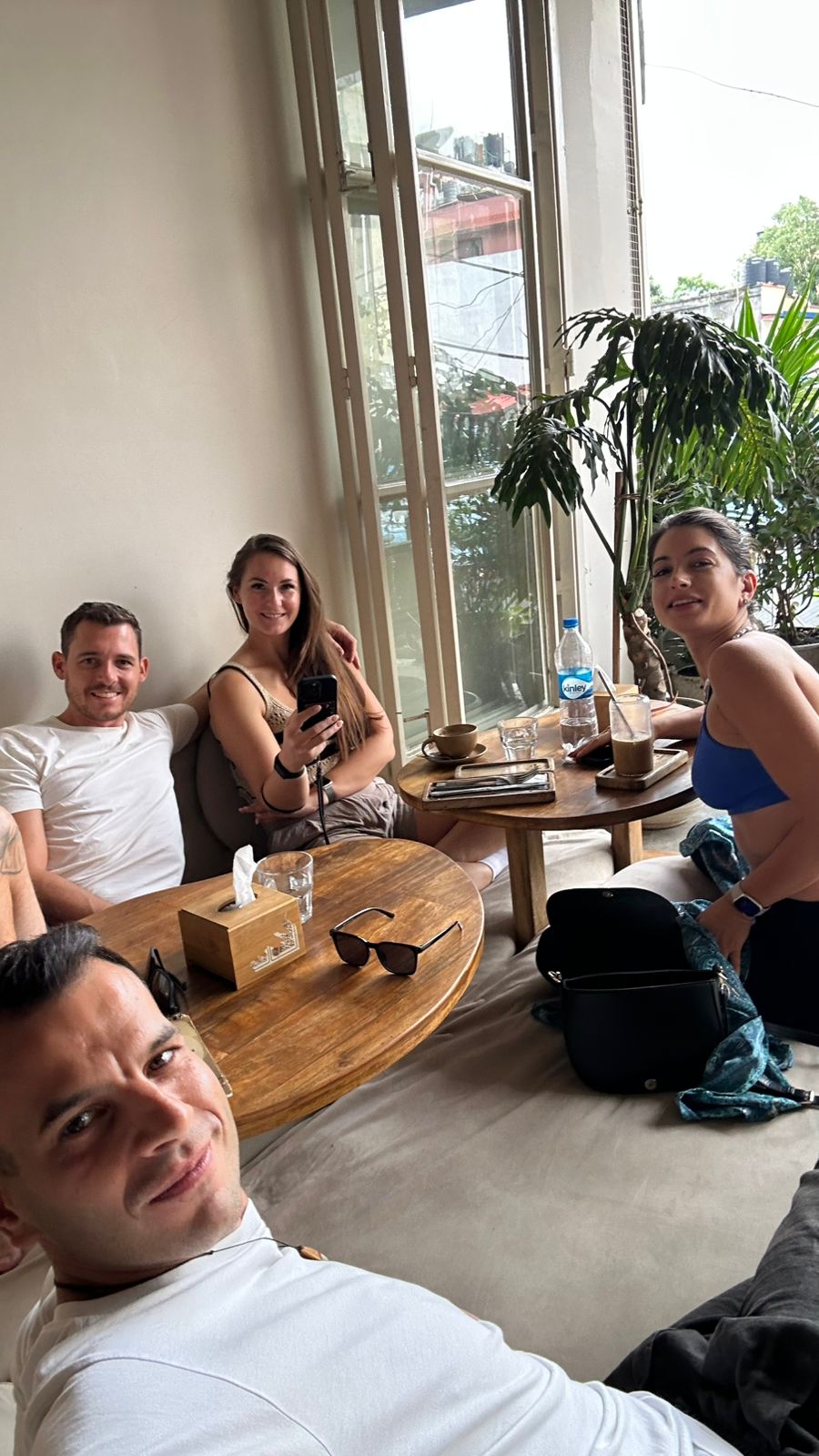
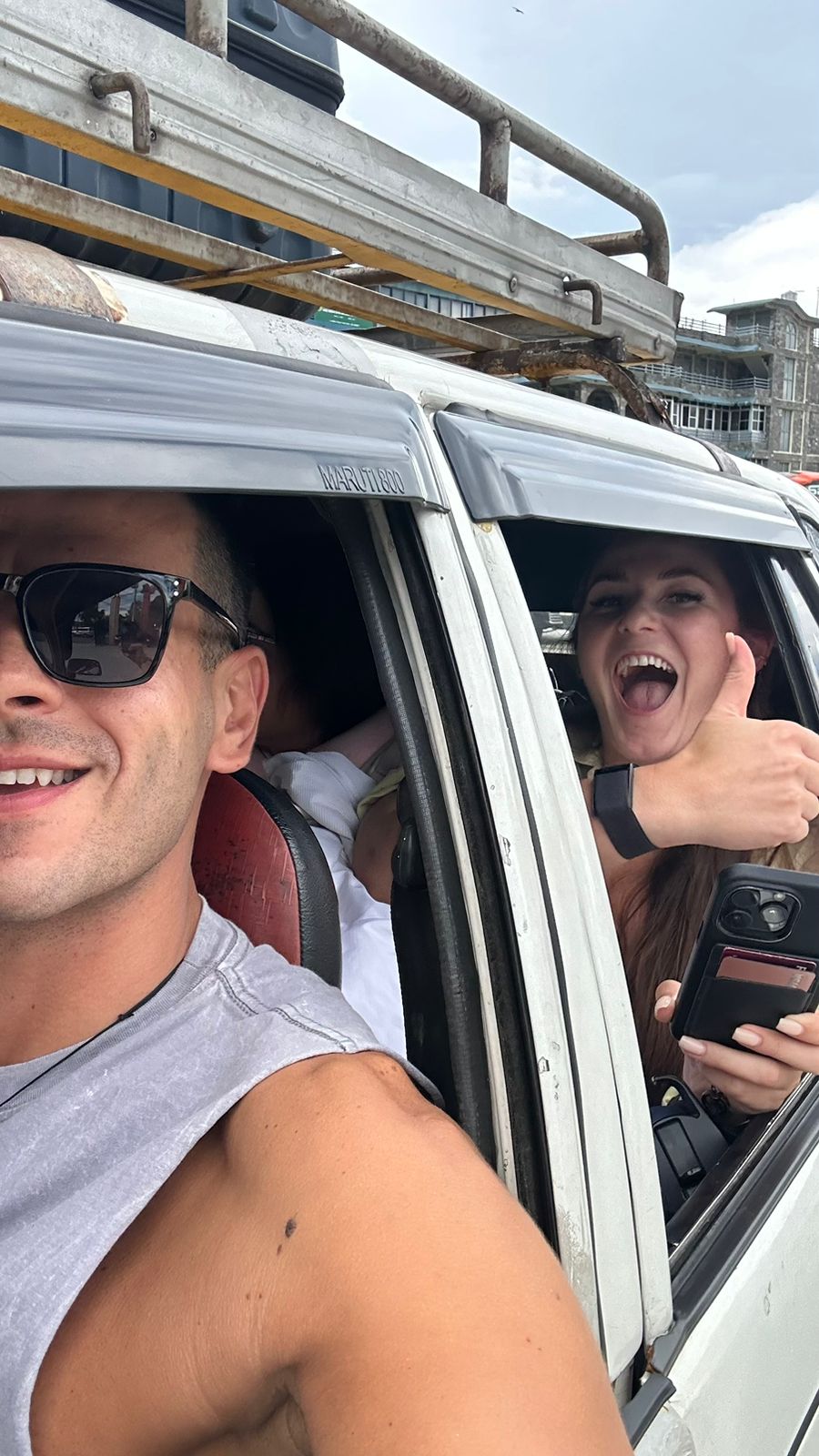
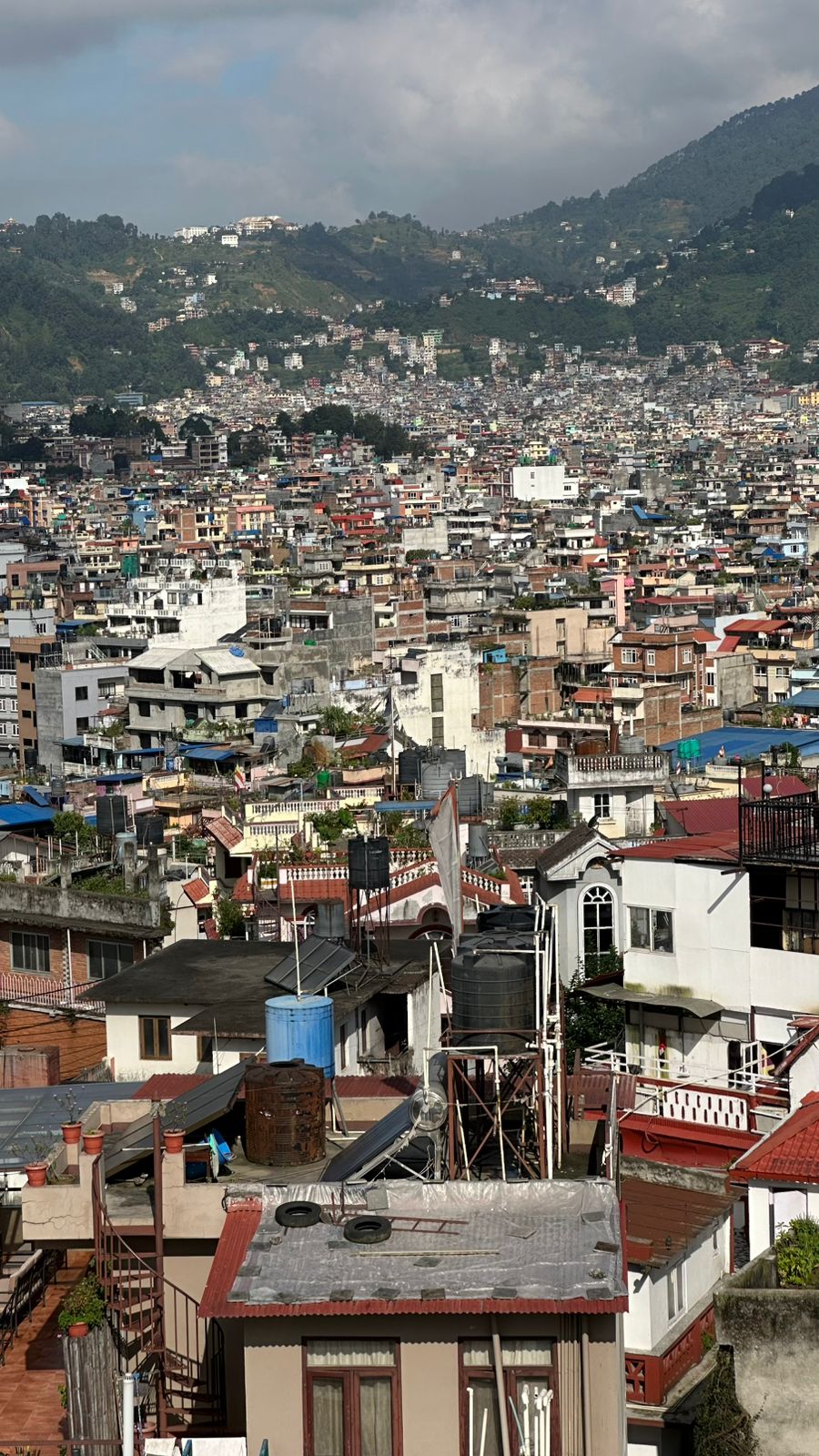
Tour Images (5)
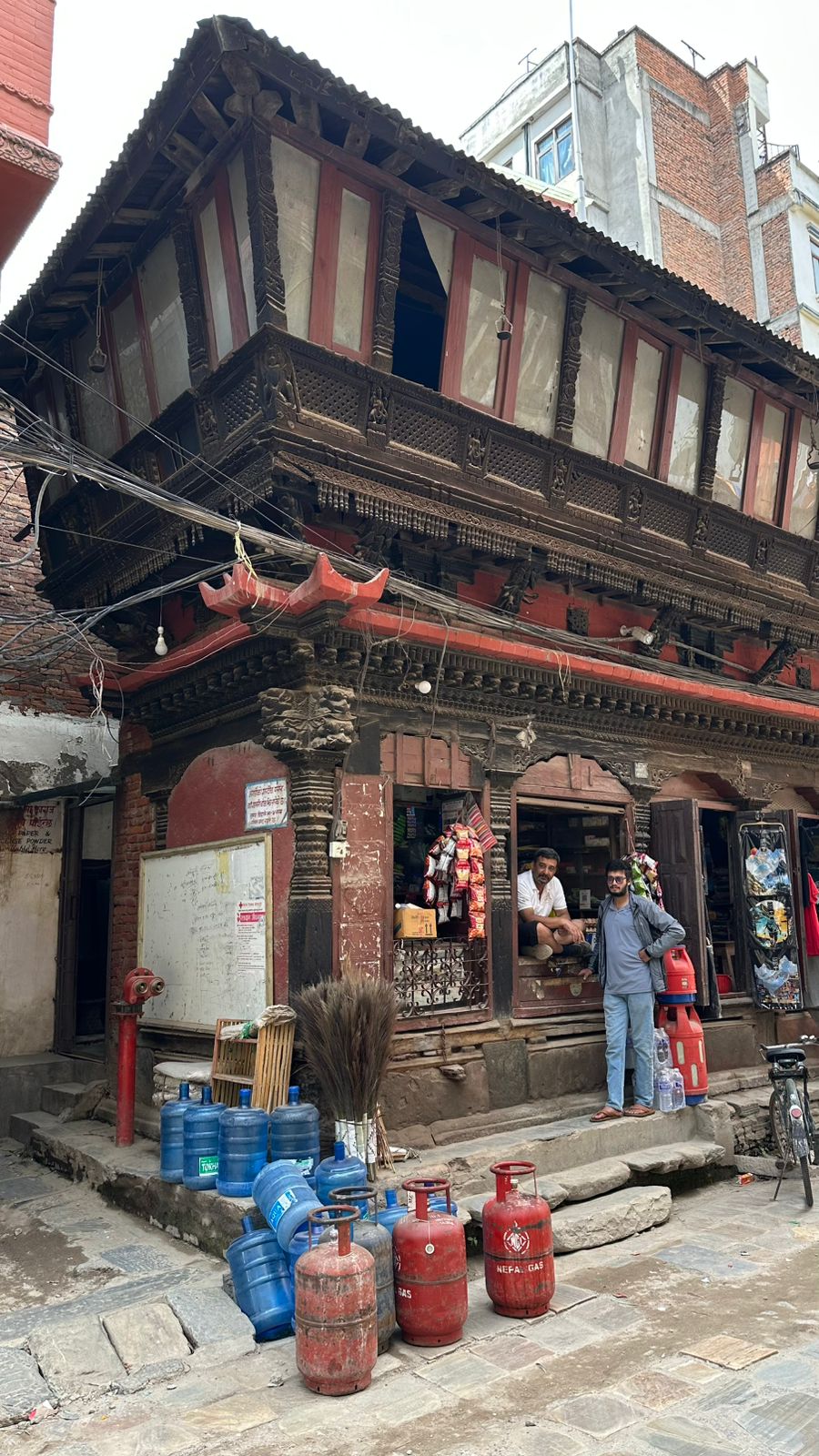
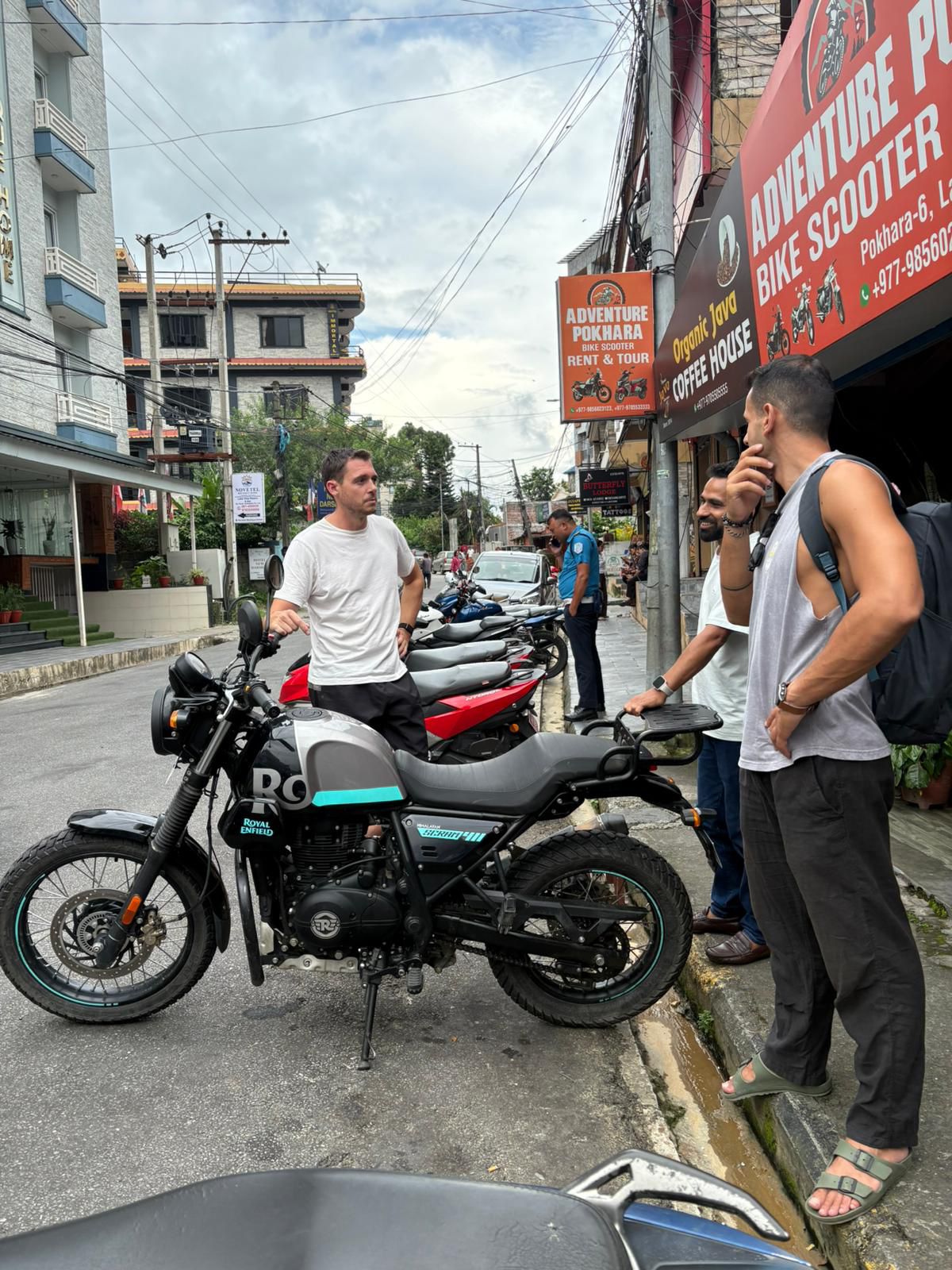
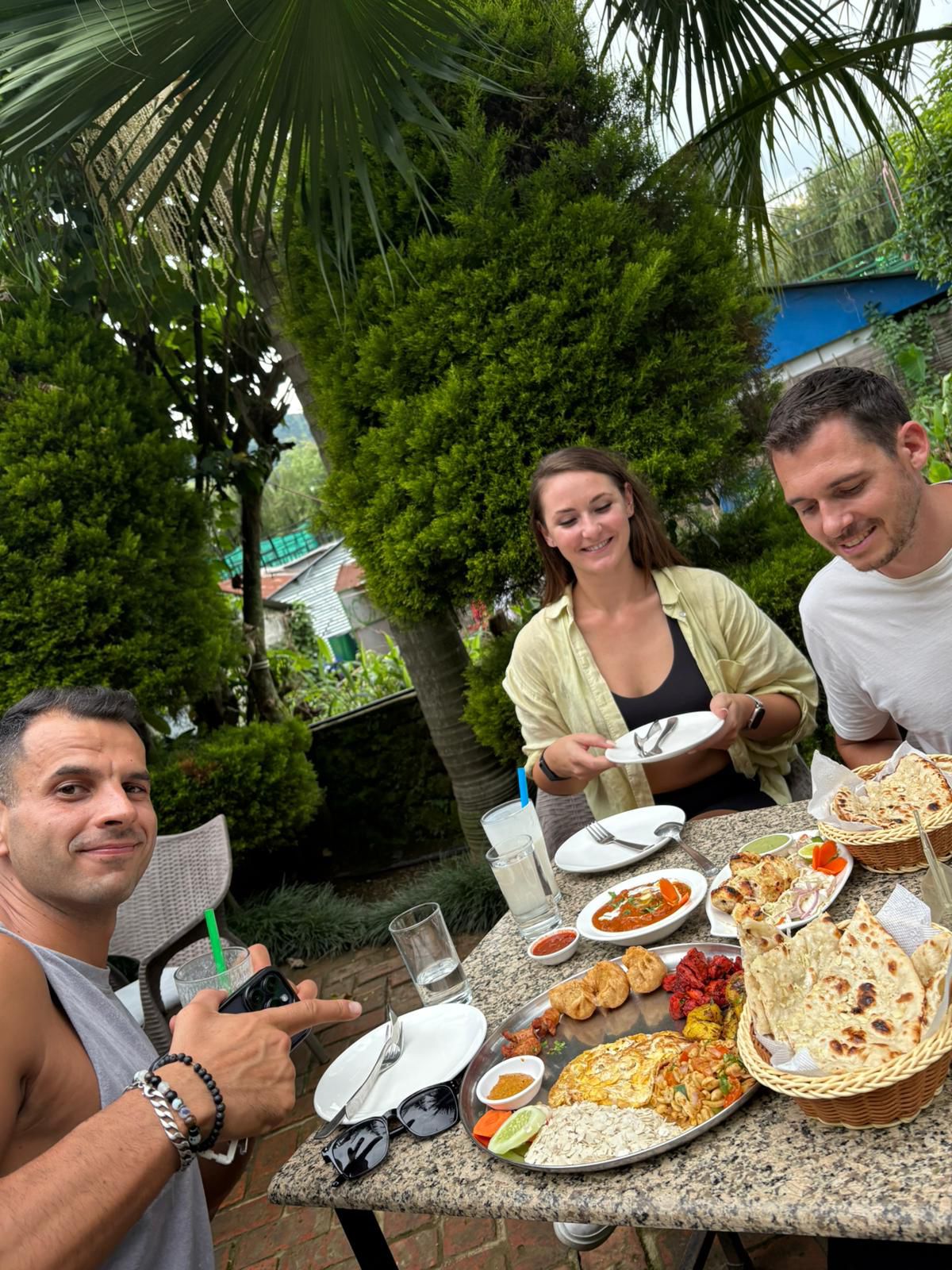
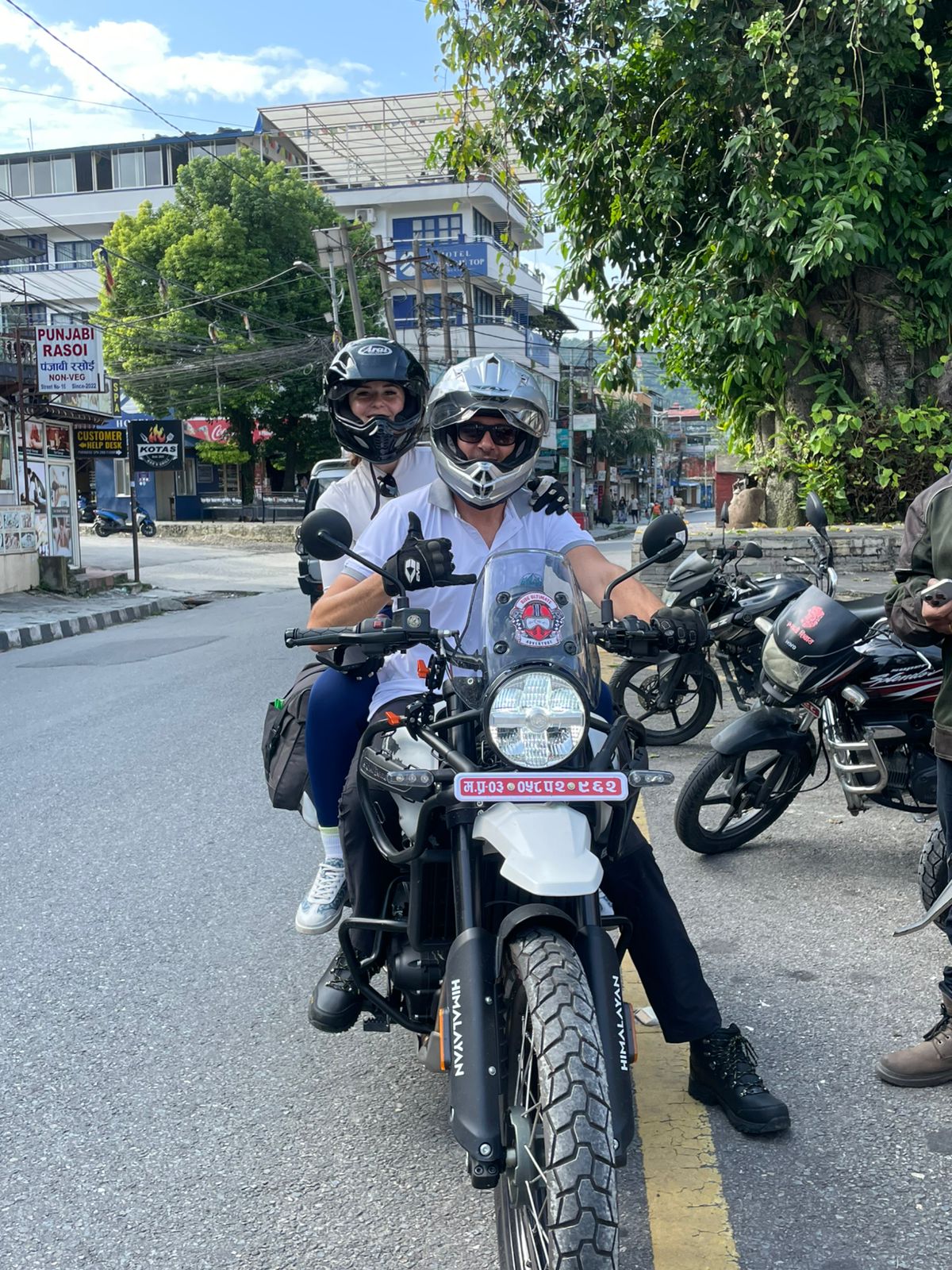
Tour Images (4)
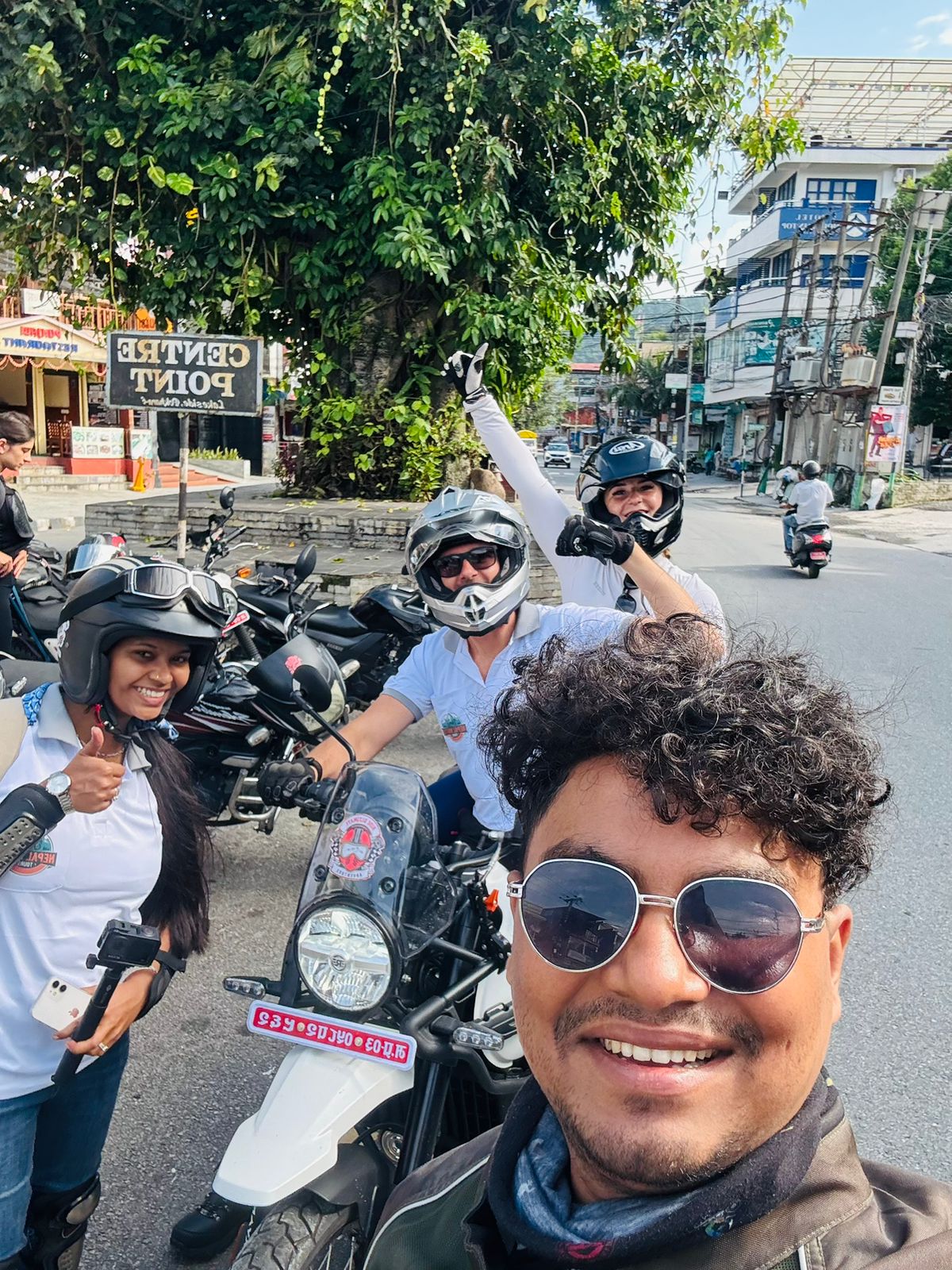
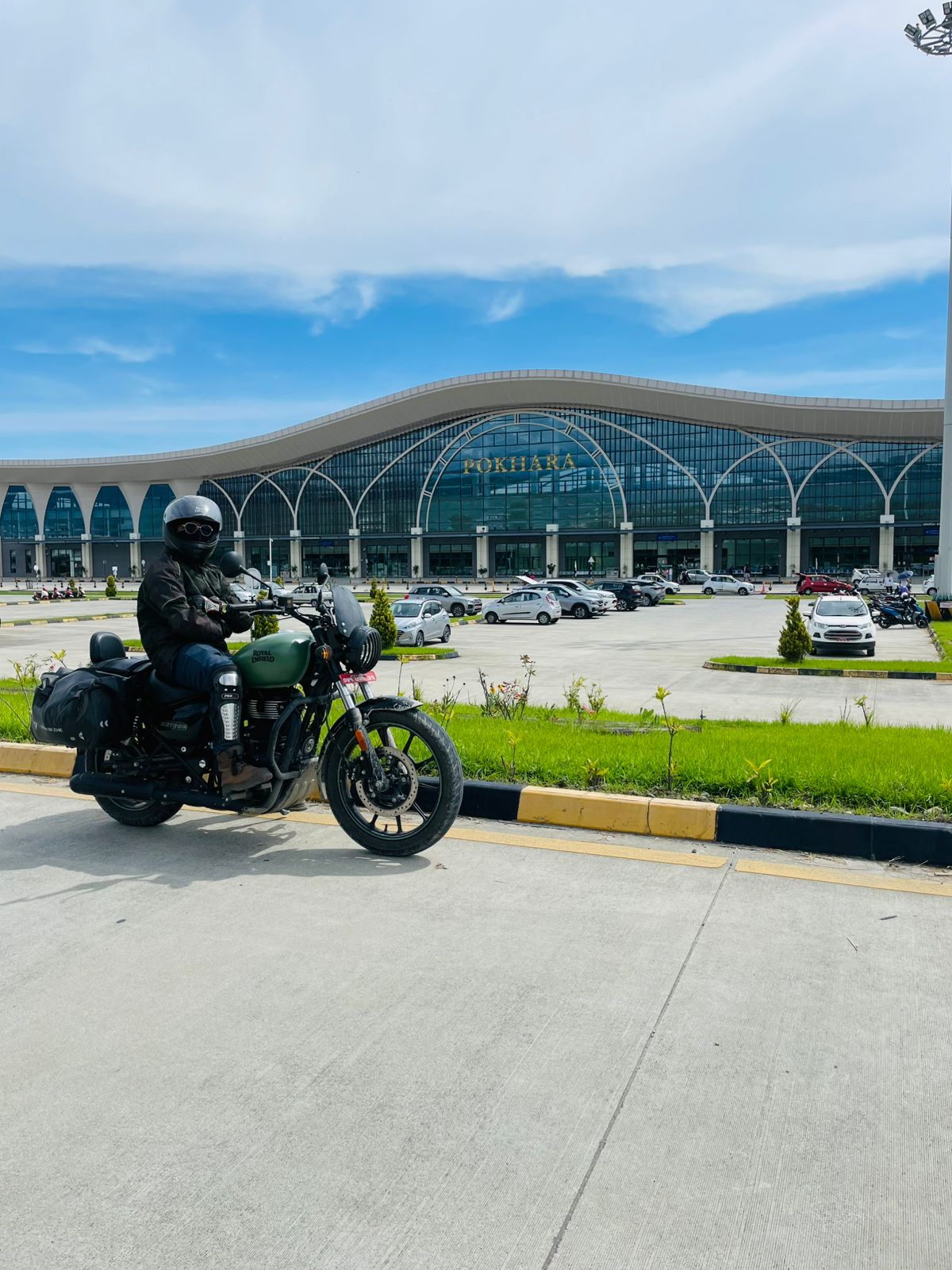
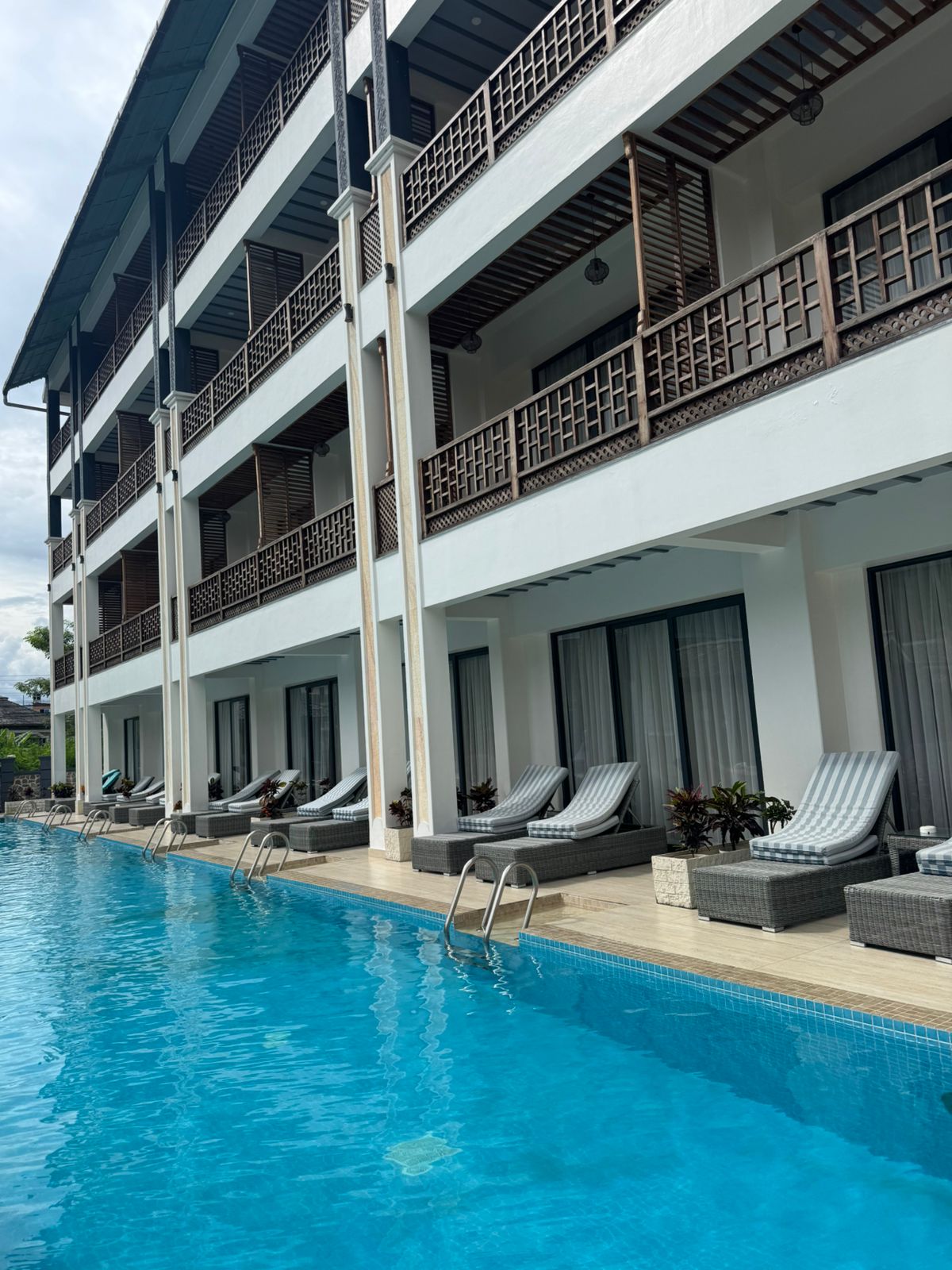
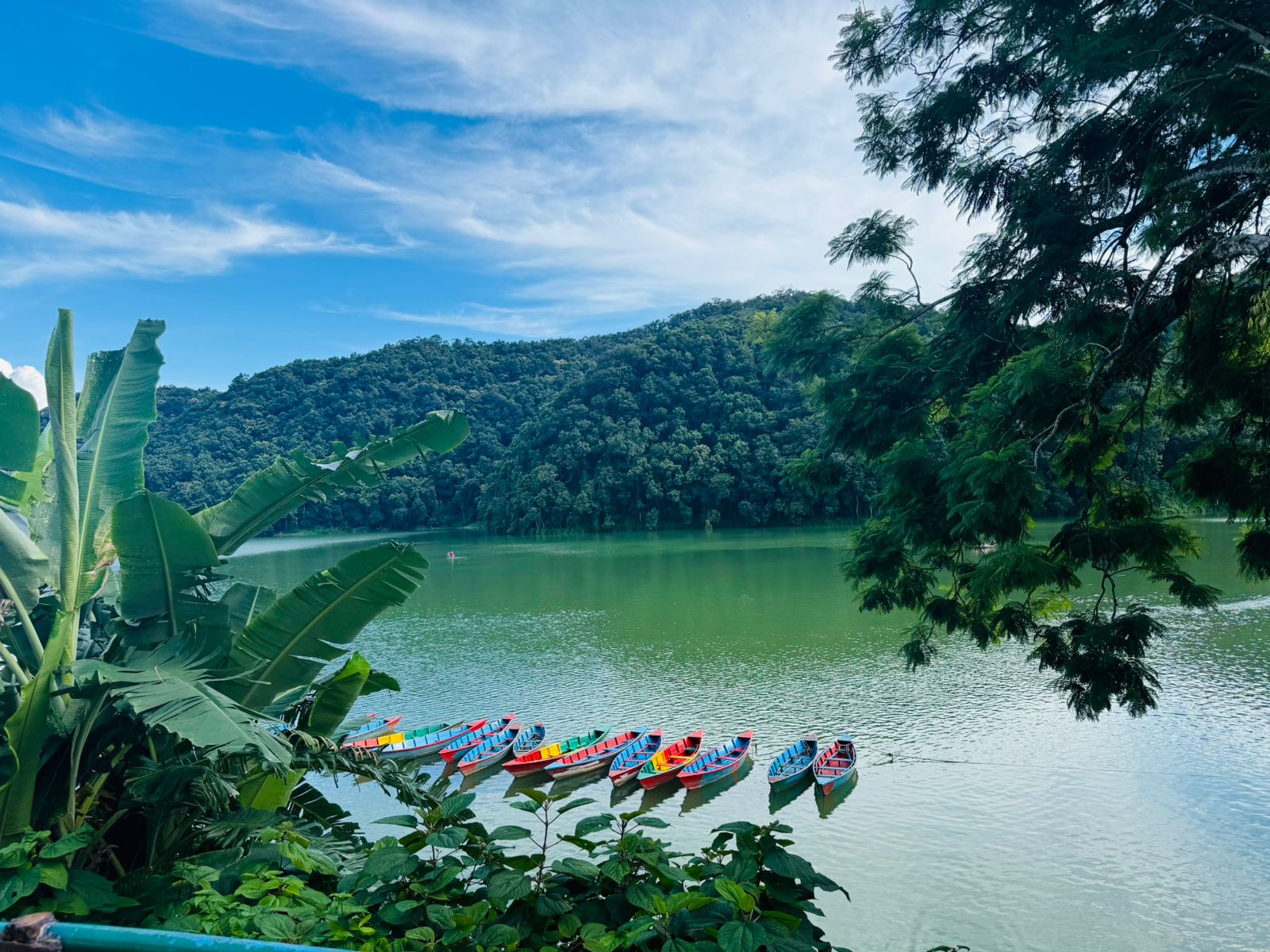
Tour Images (7)
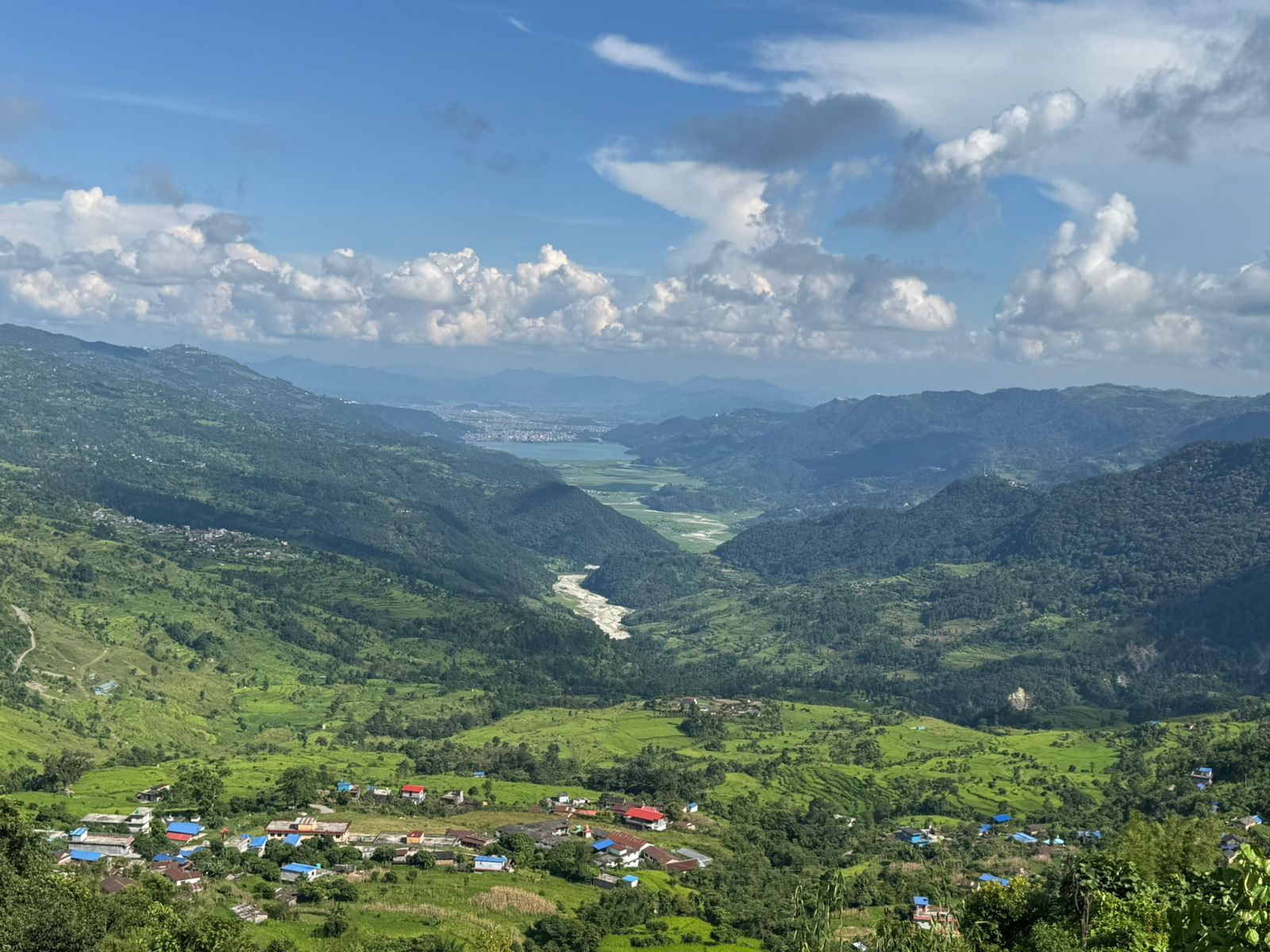
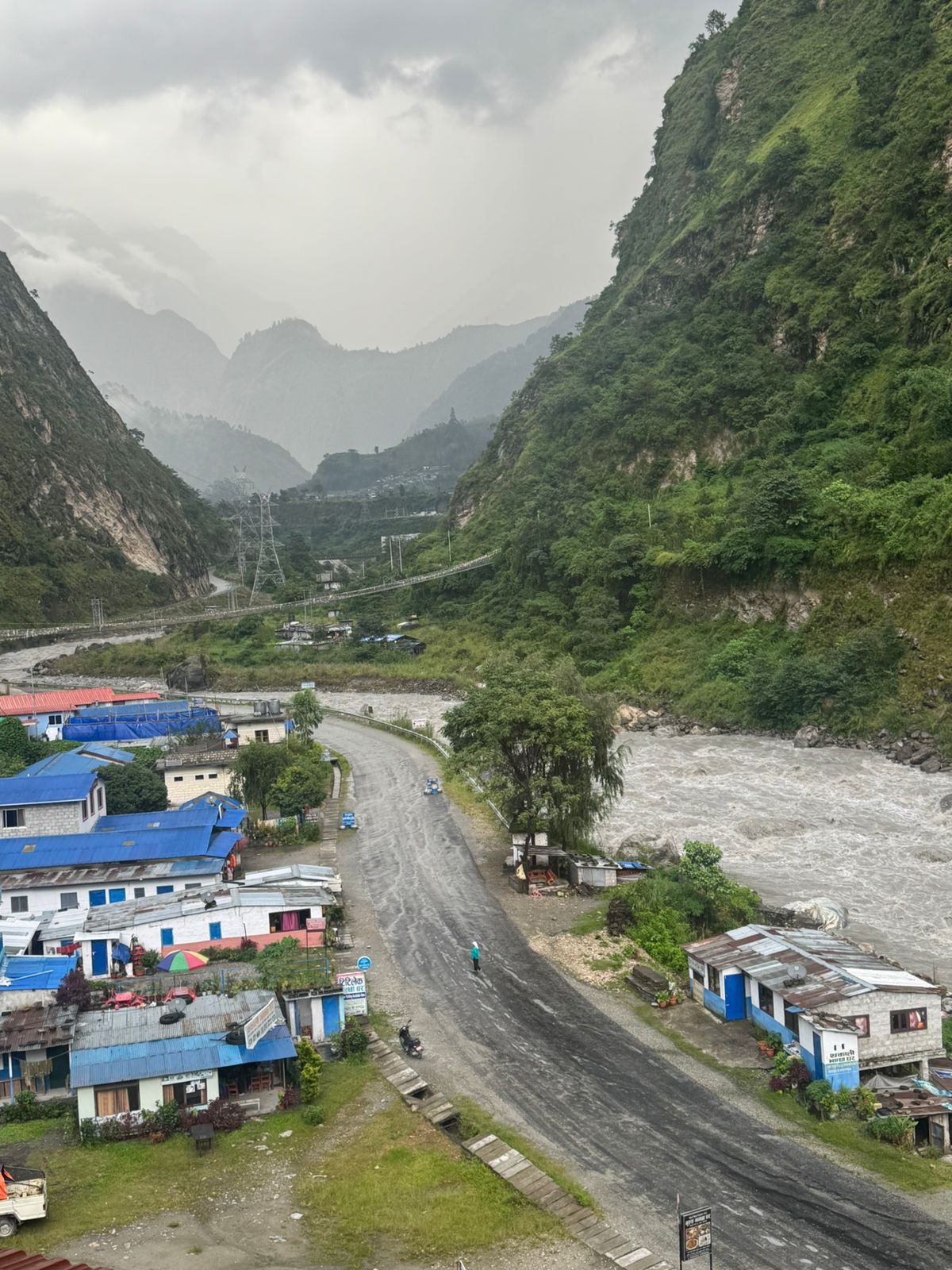
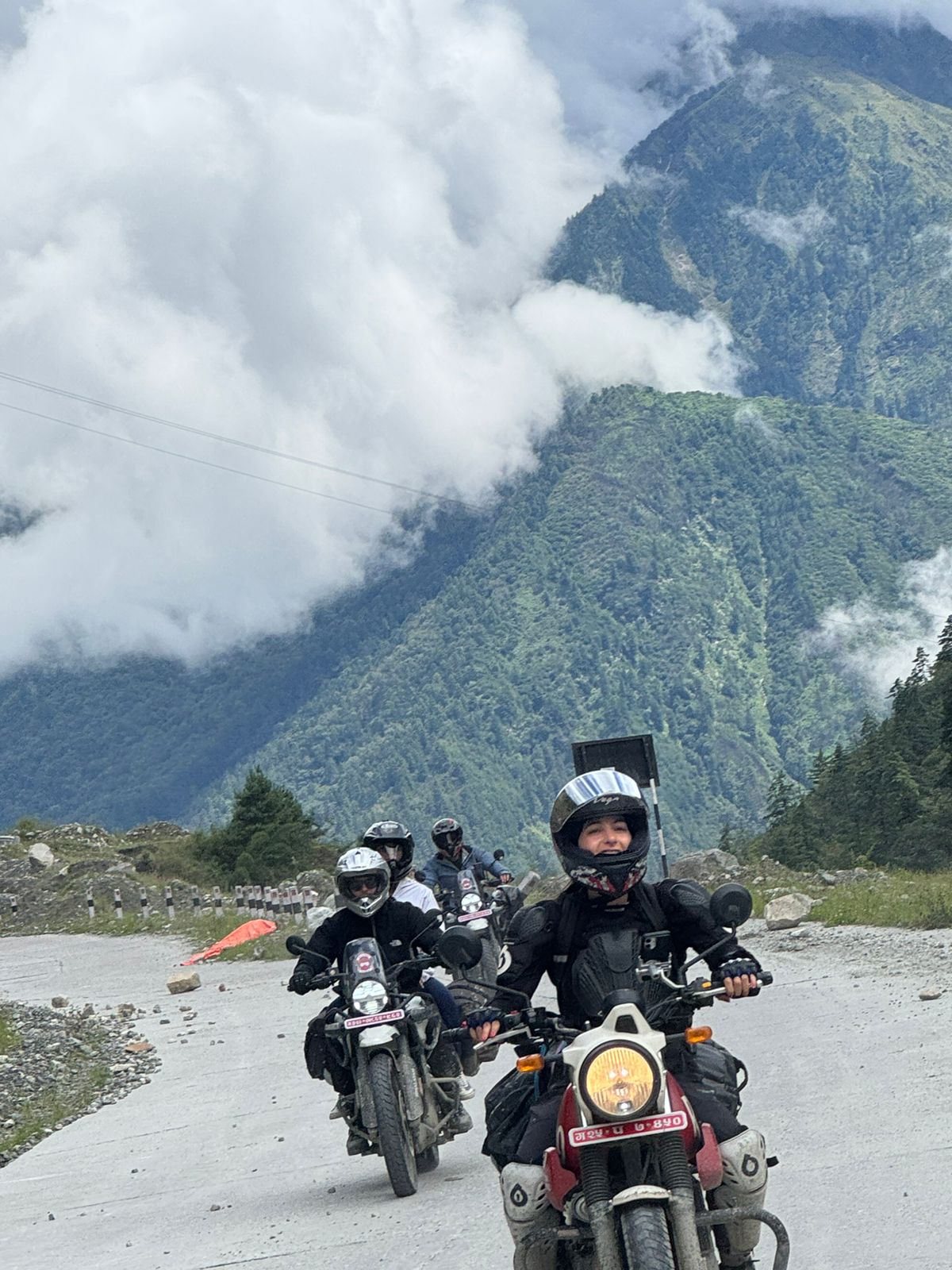
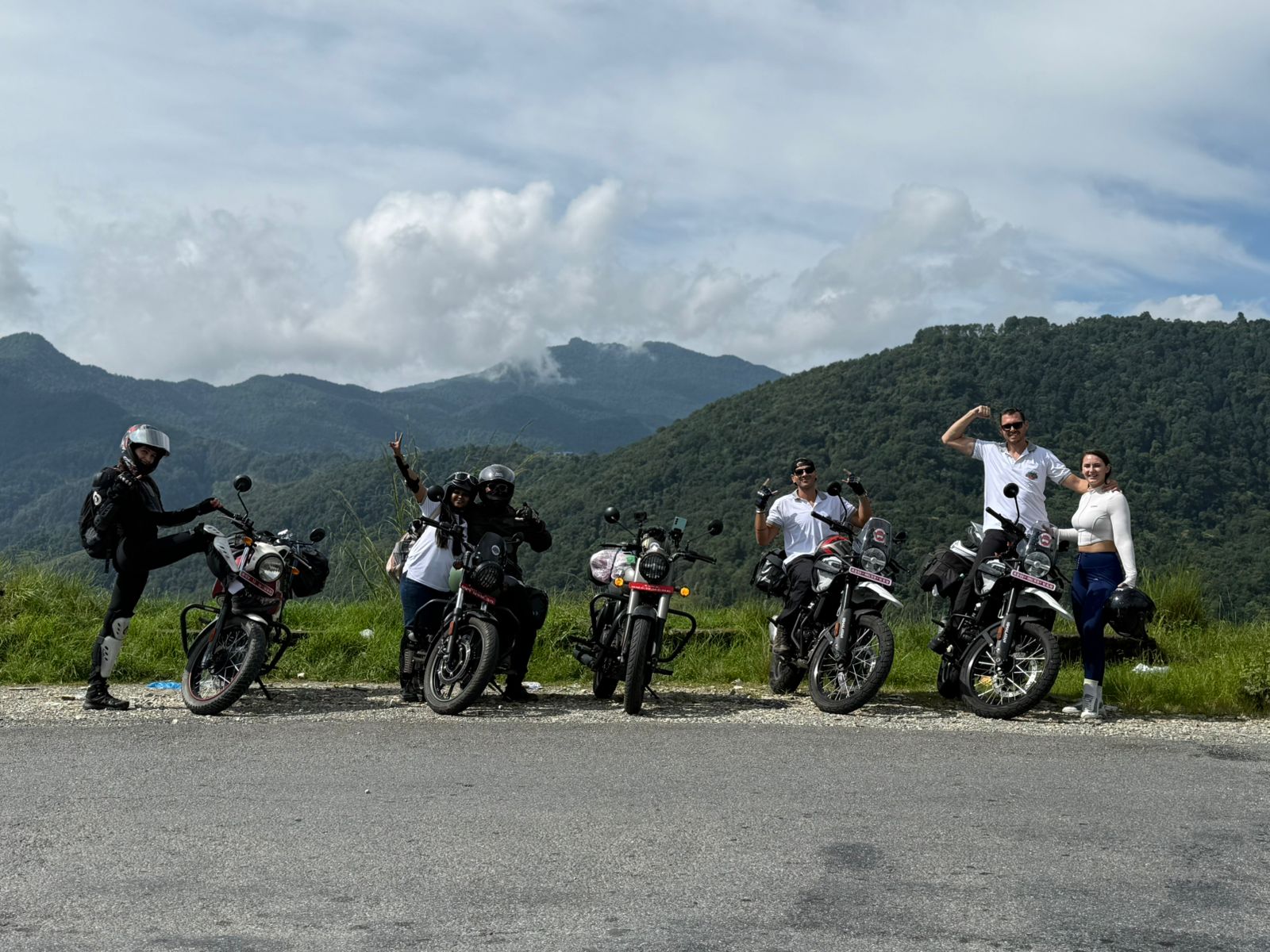
Tour Images (6)
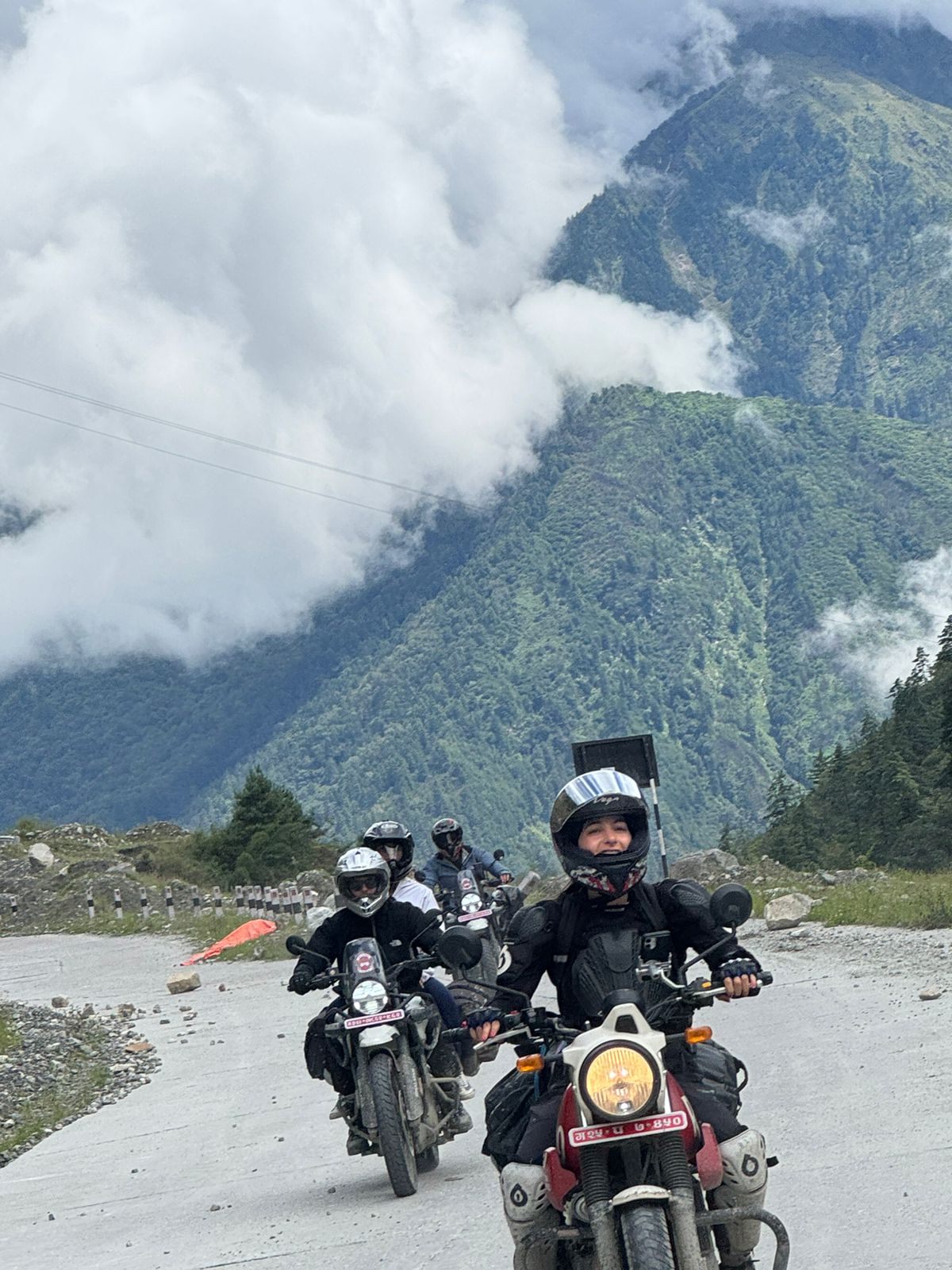
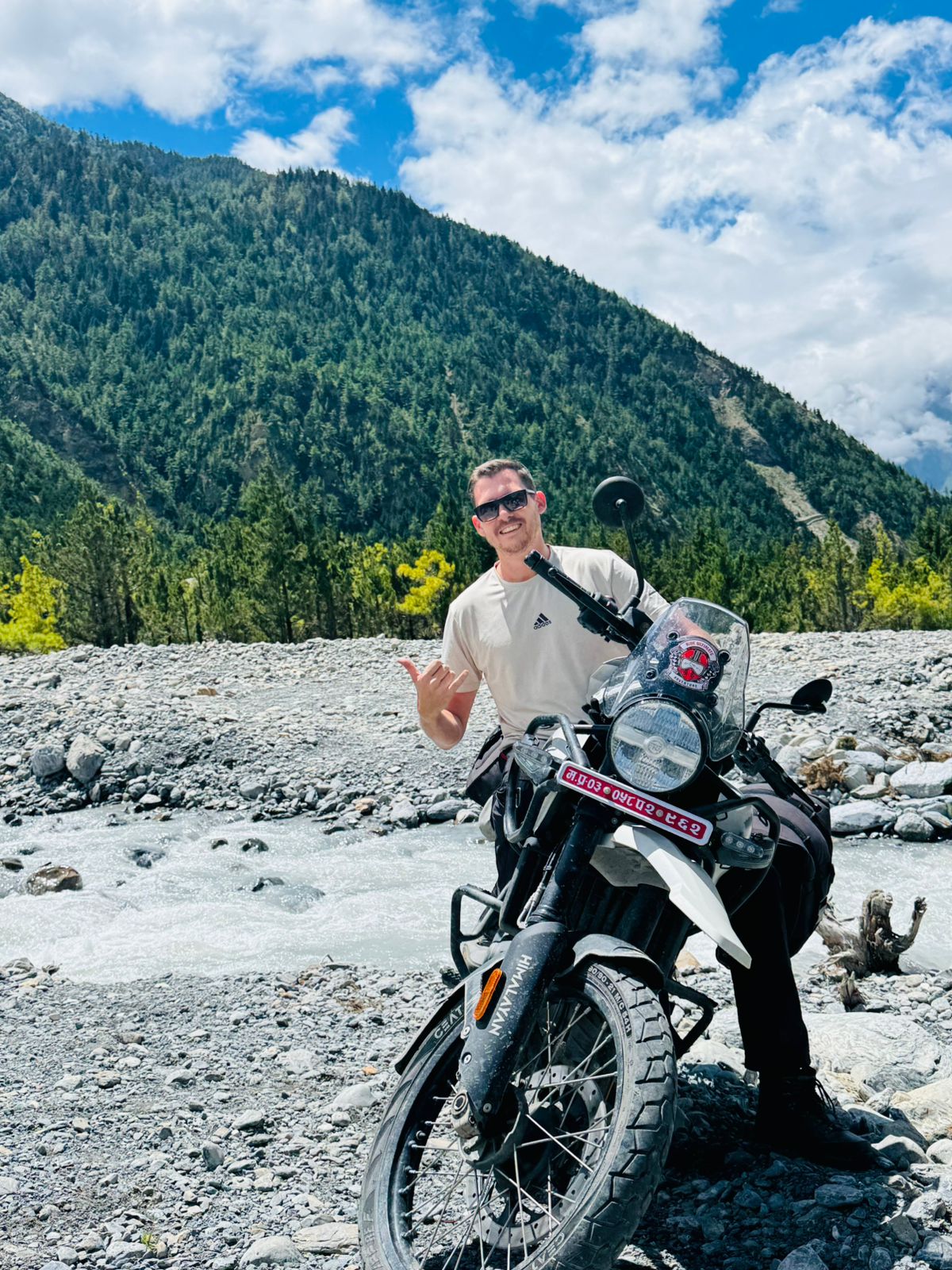
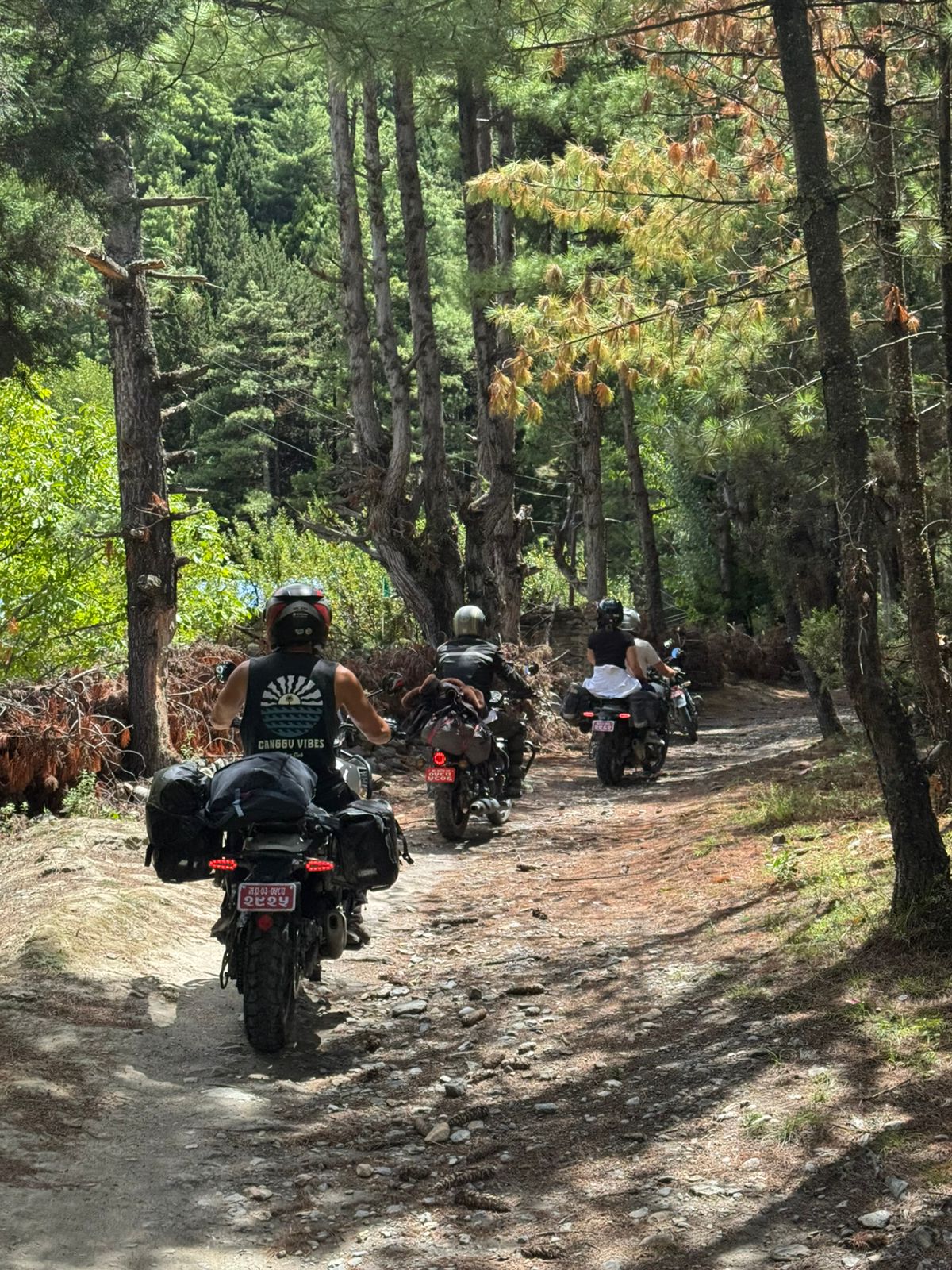
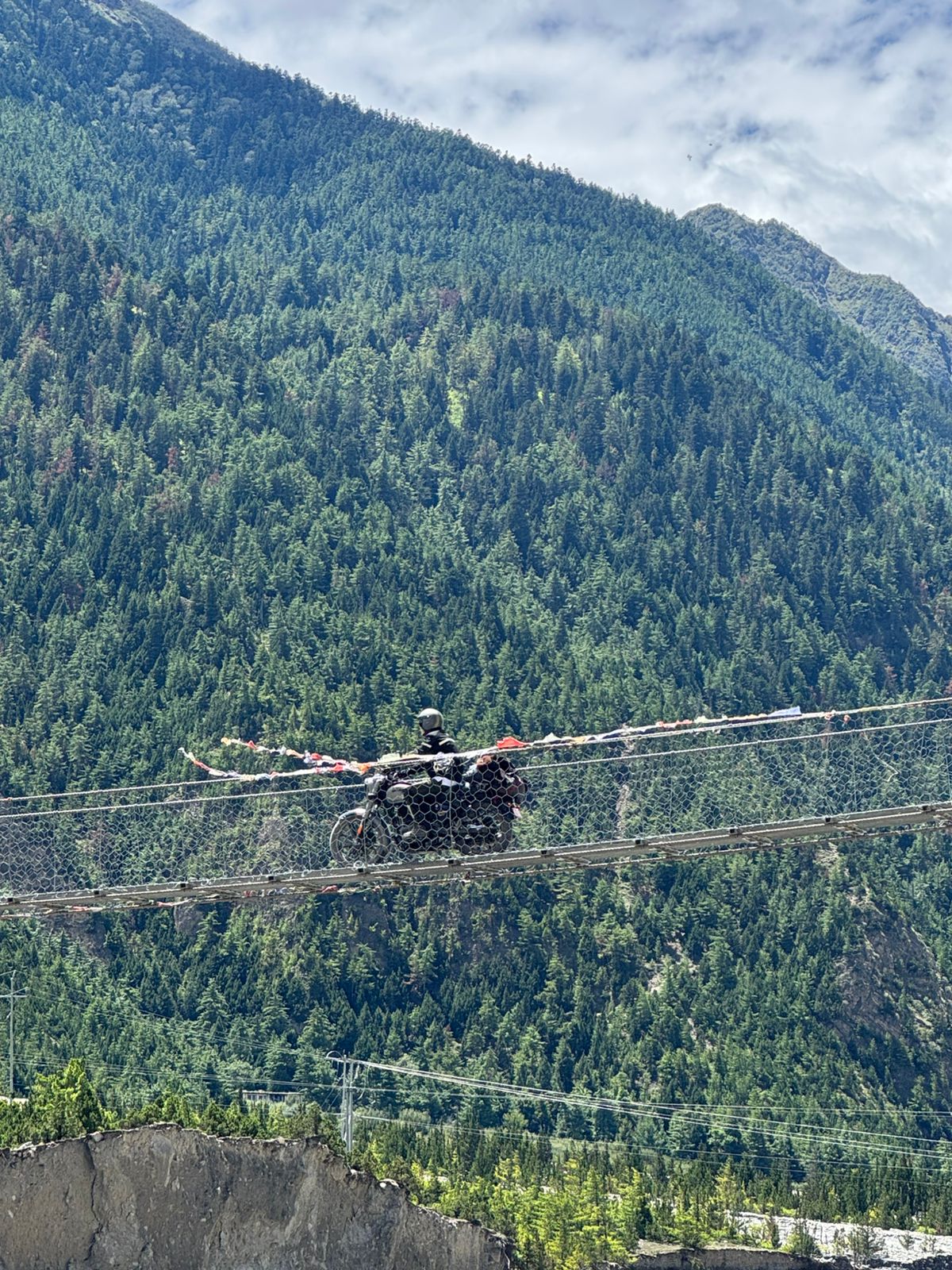
Tour Images (5)
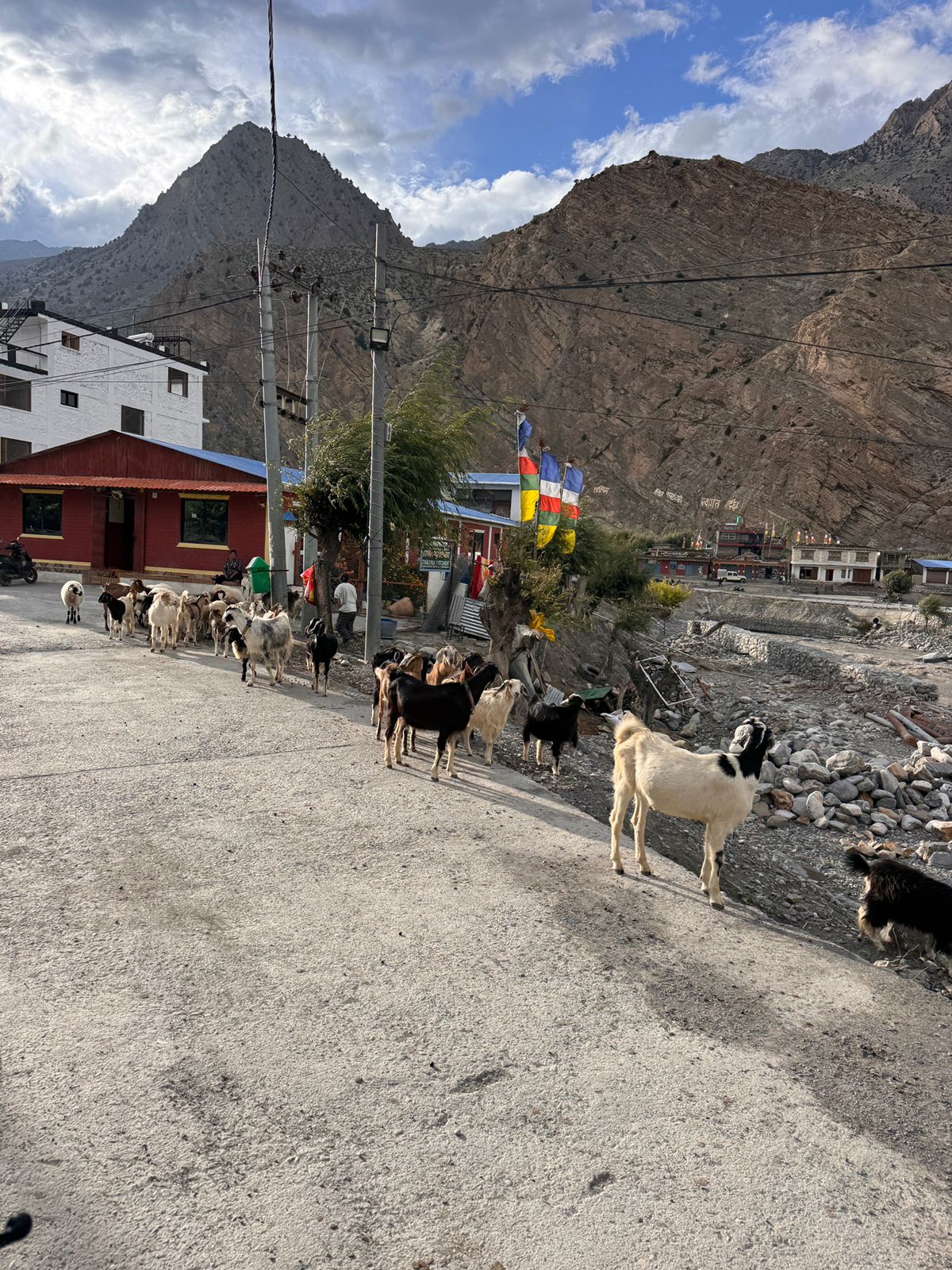
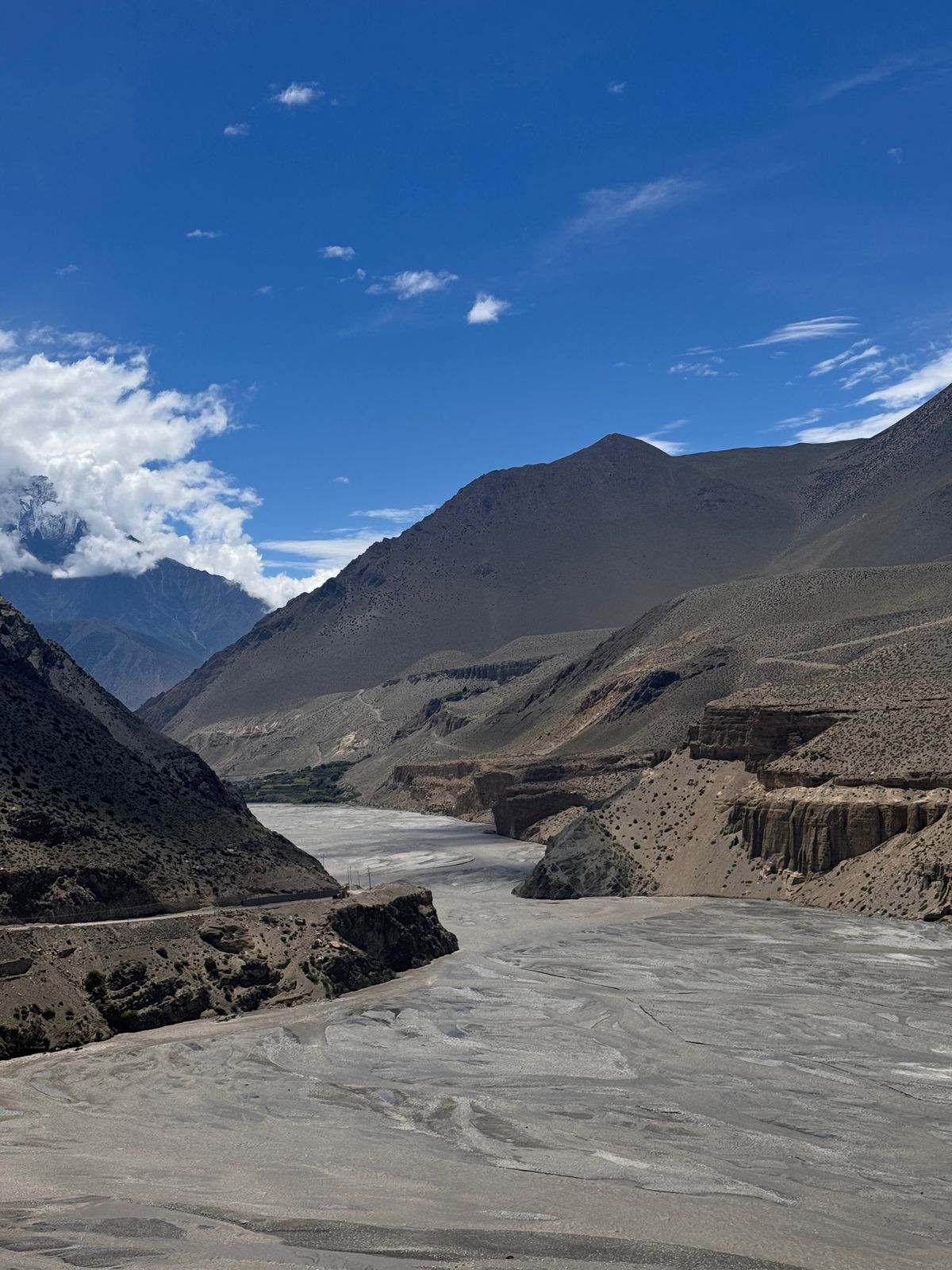
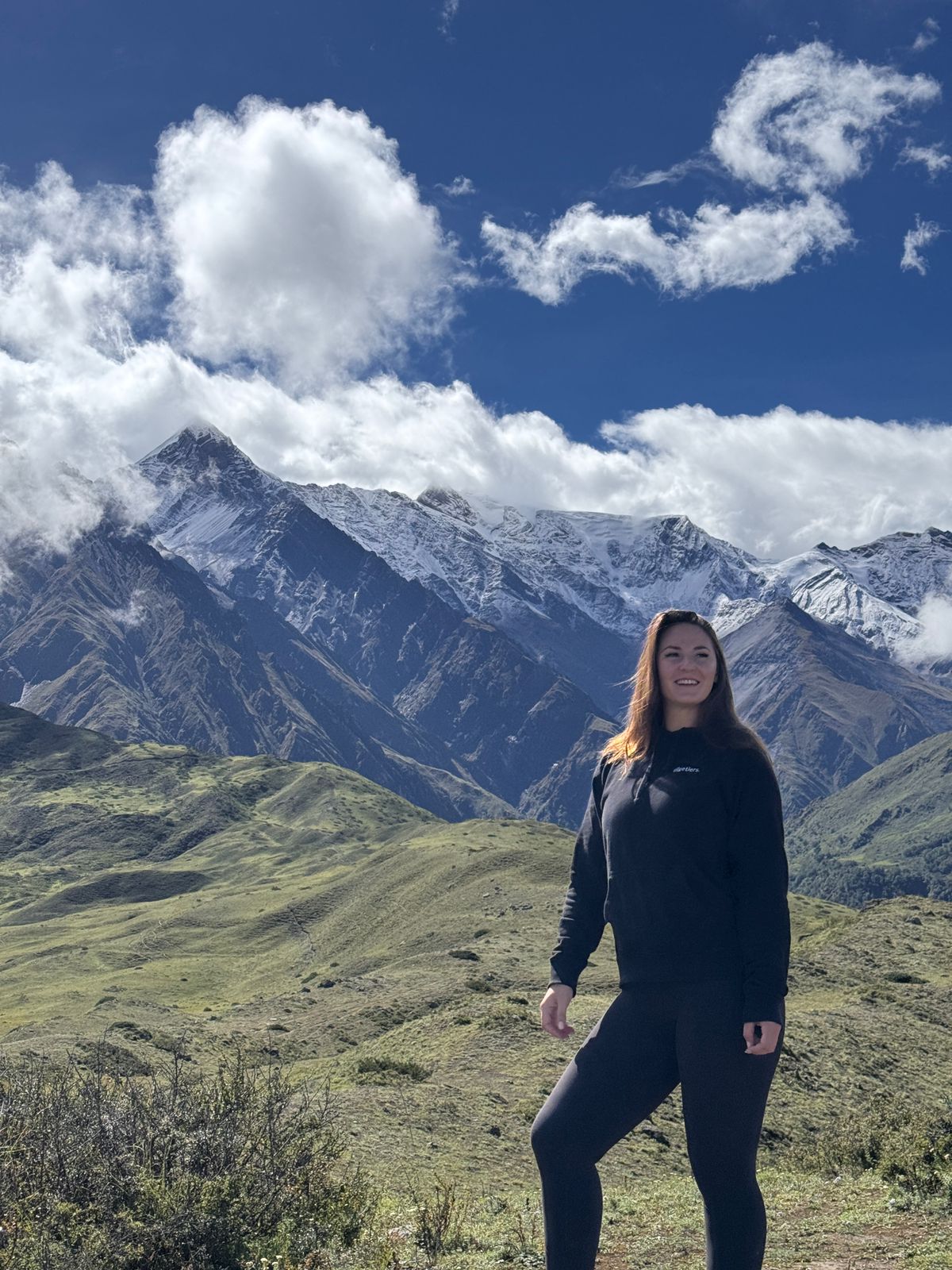
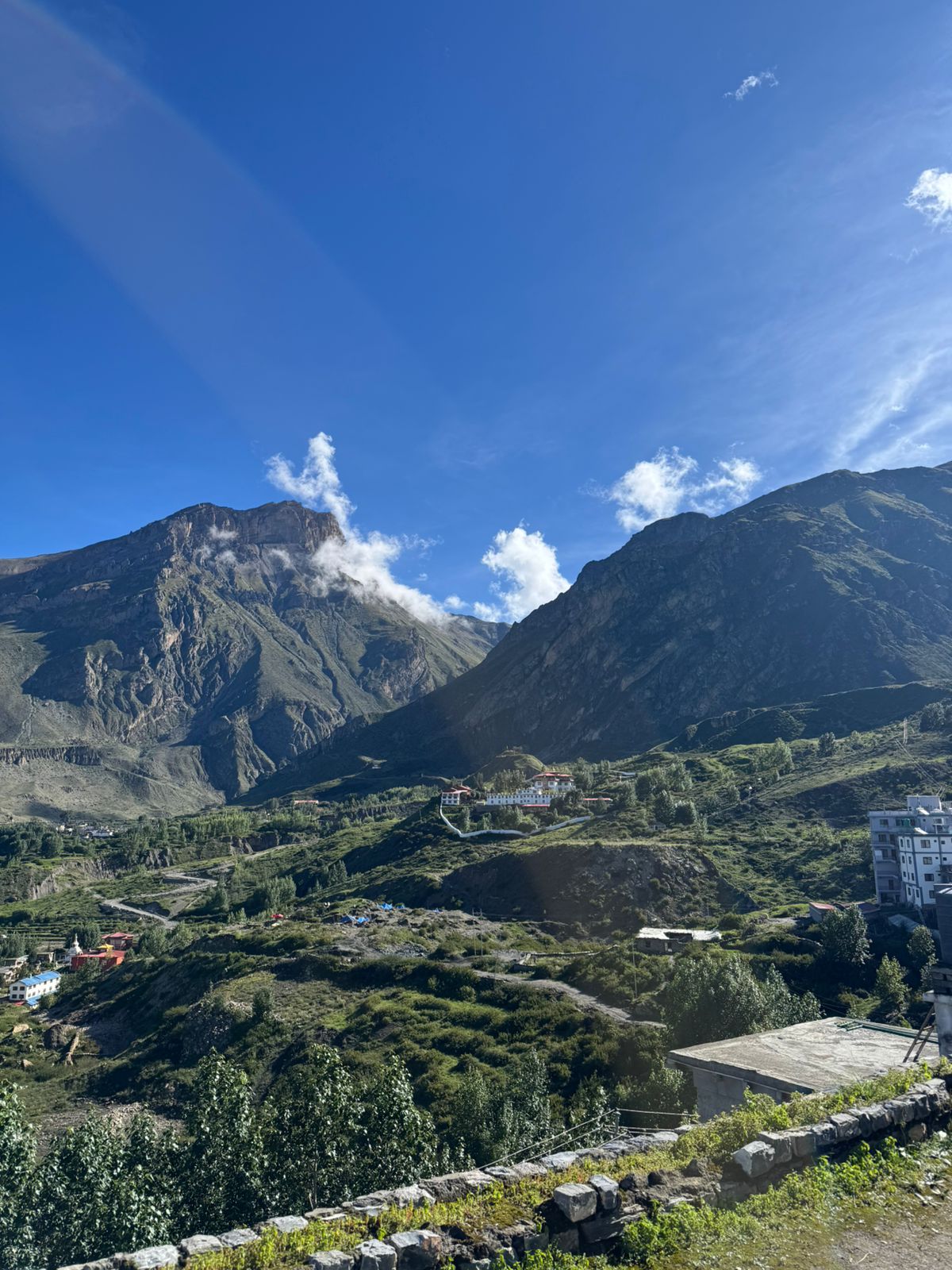
Tour Images (6)
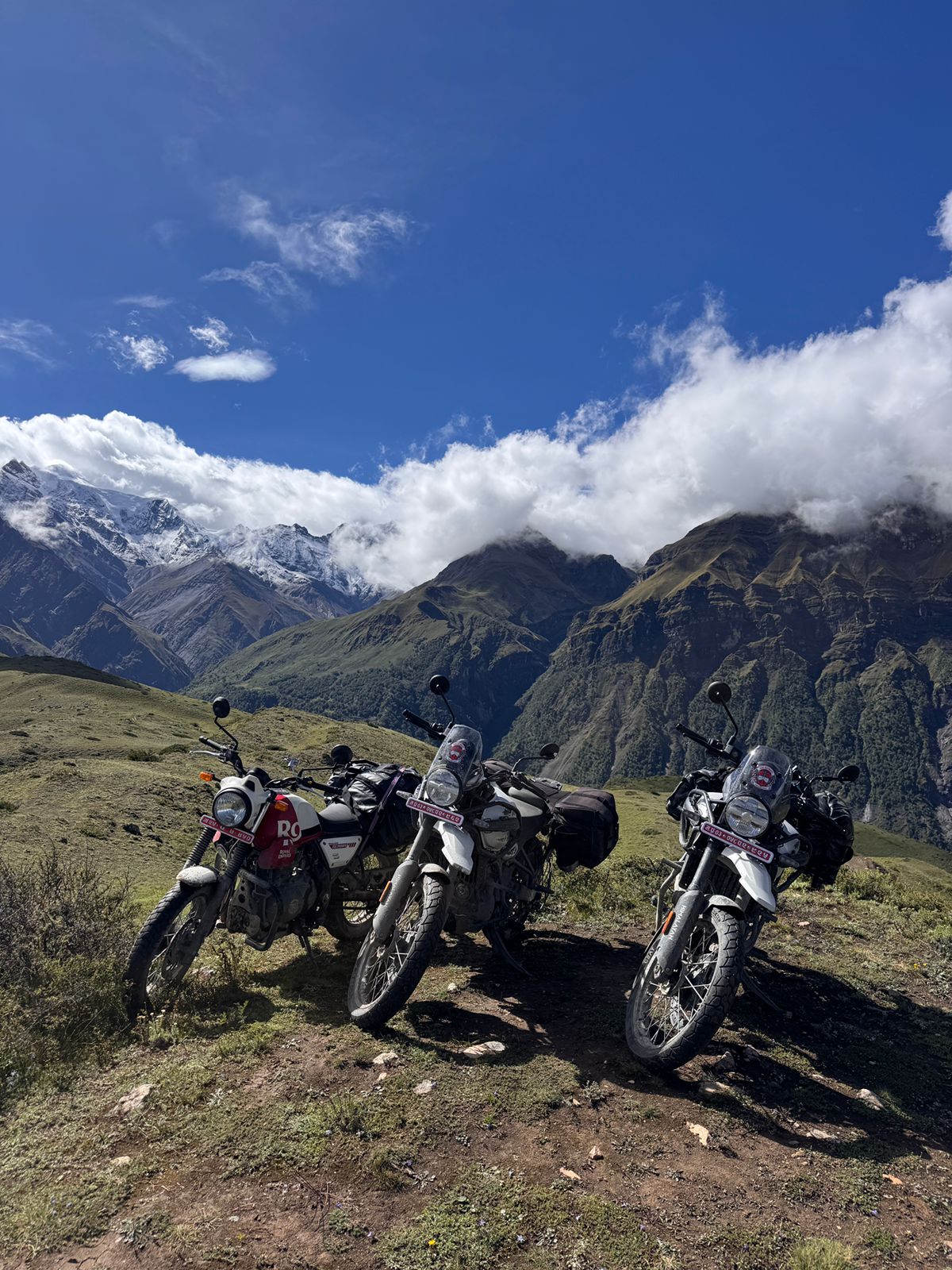
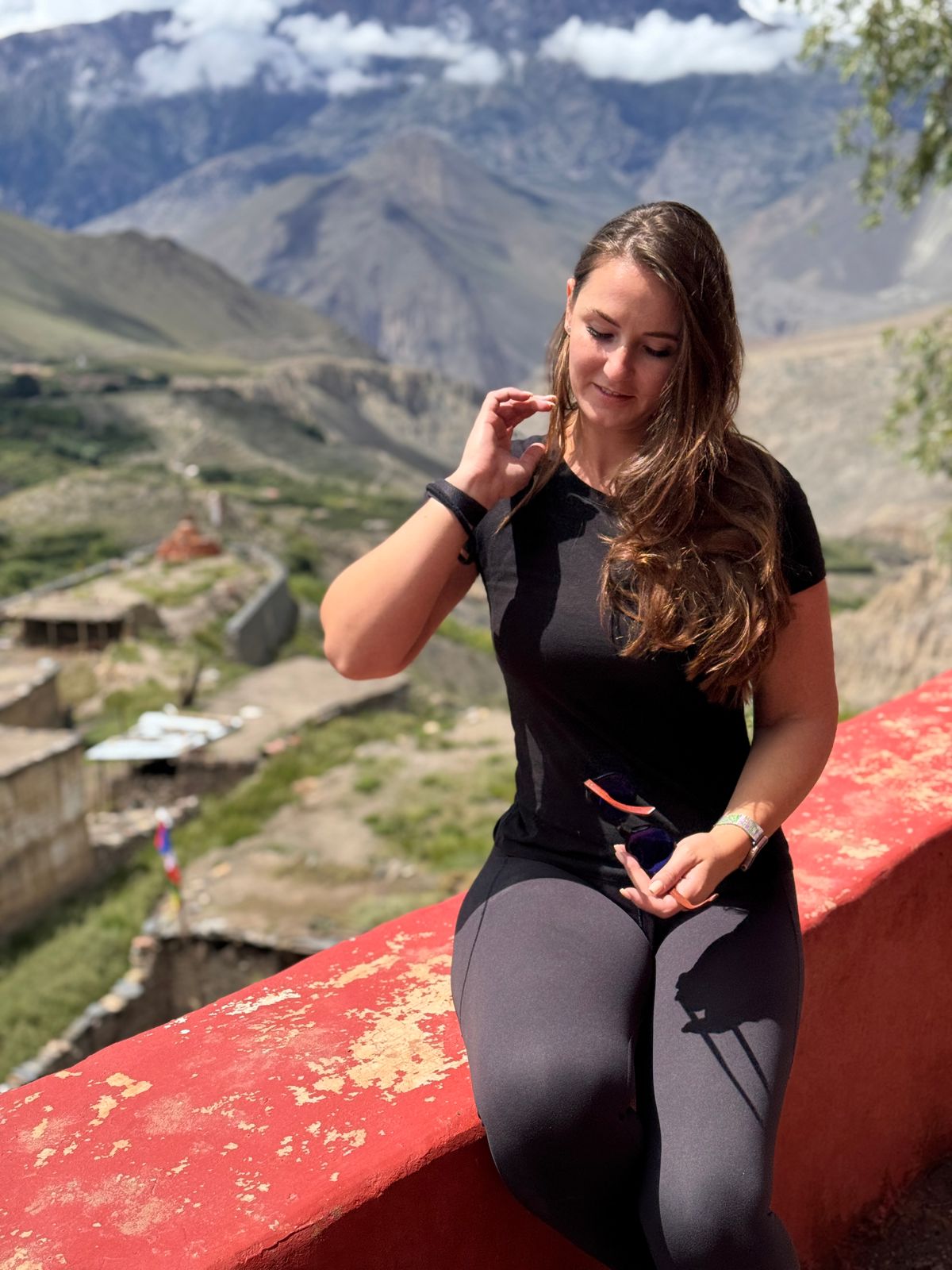
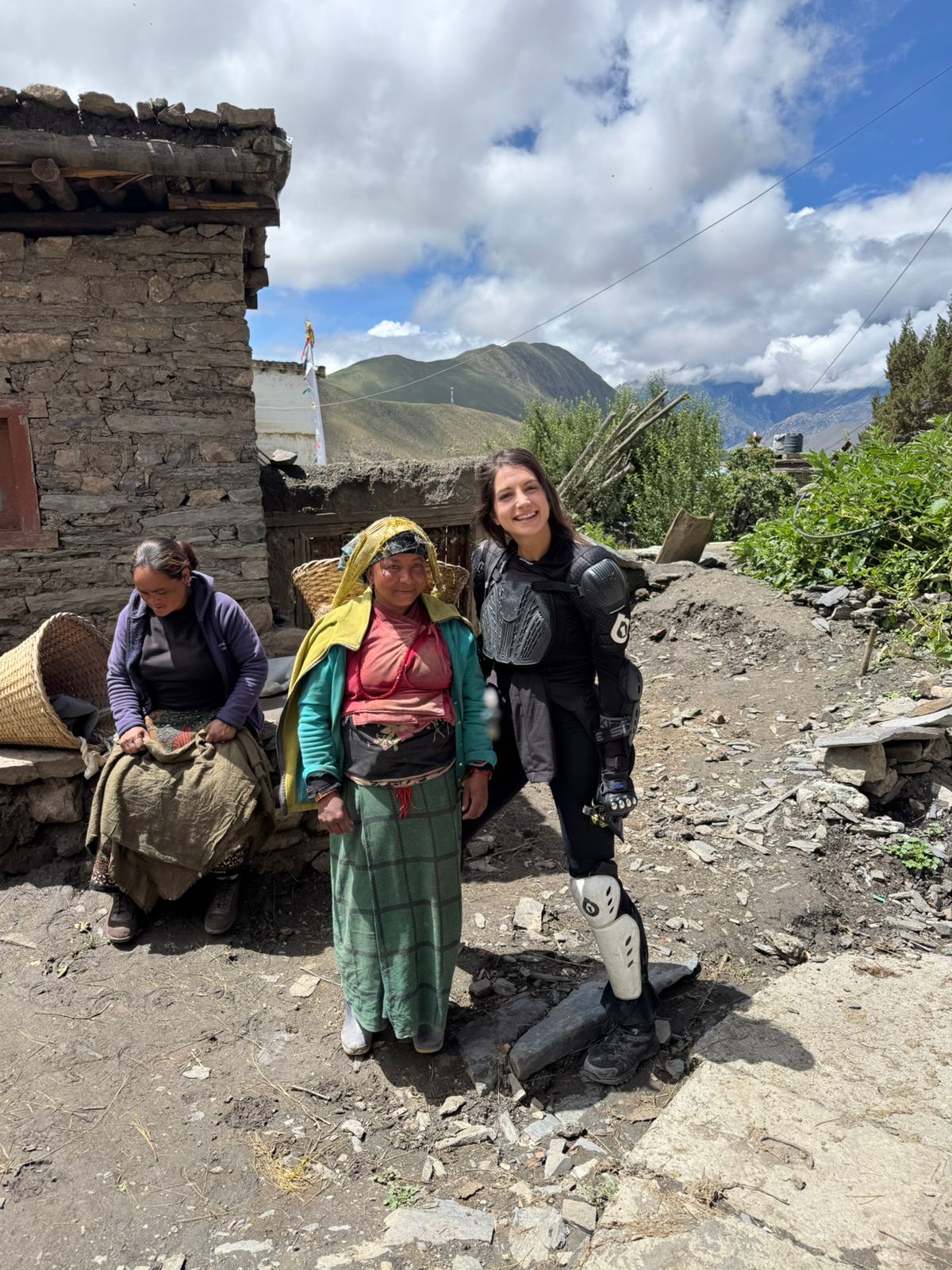
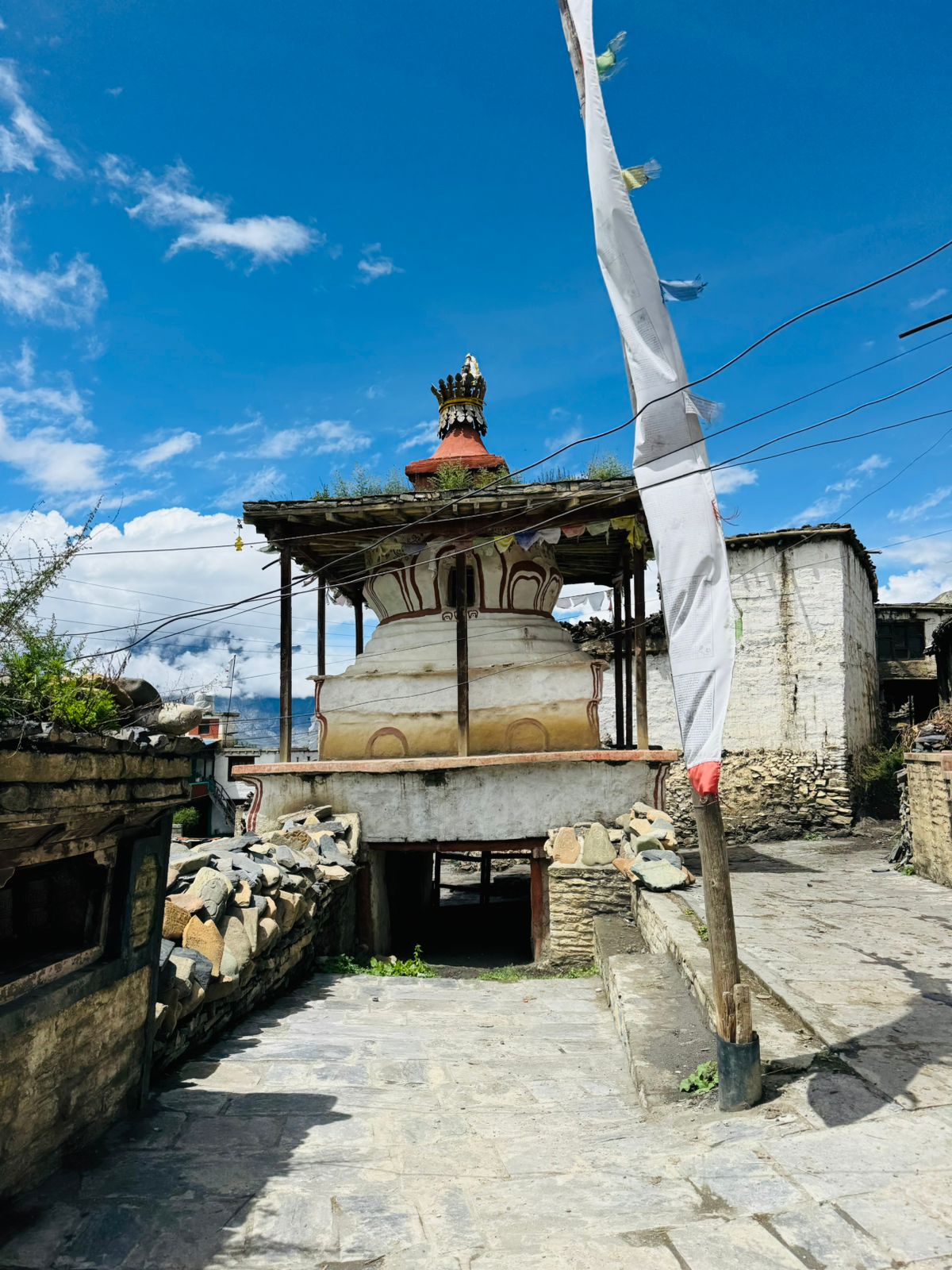
Tour Images (9)
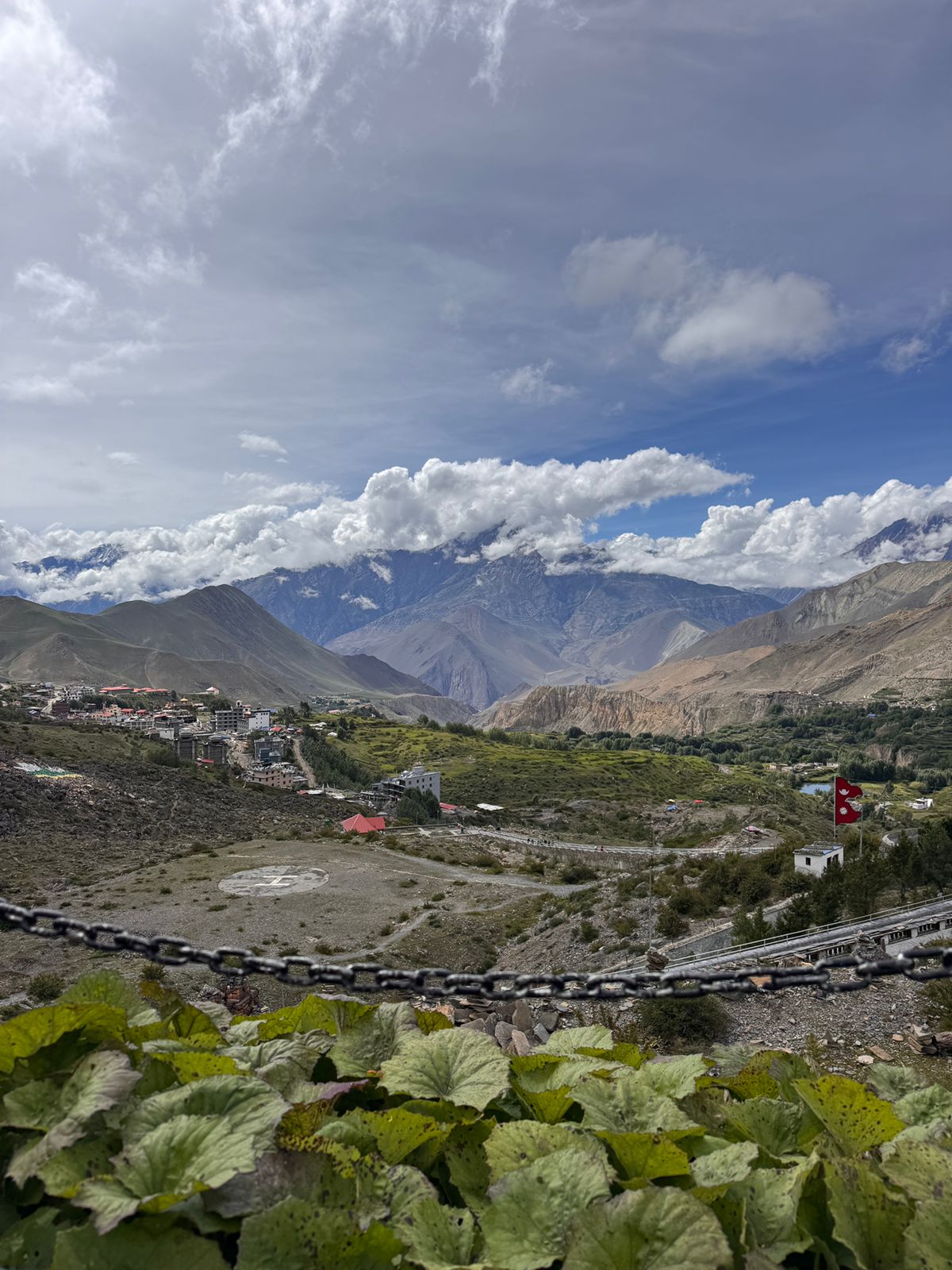
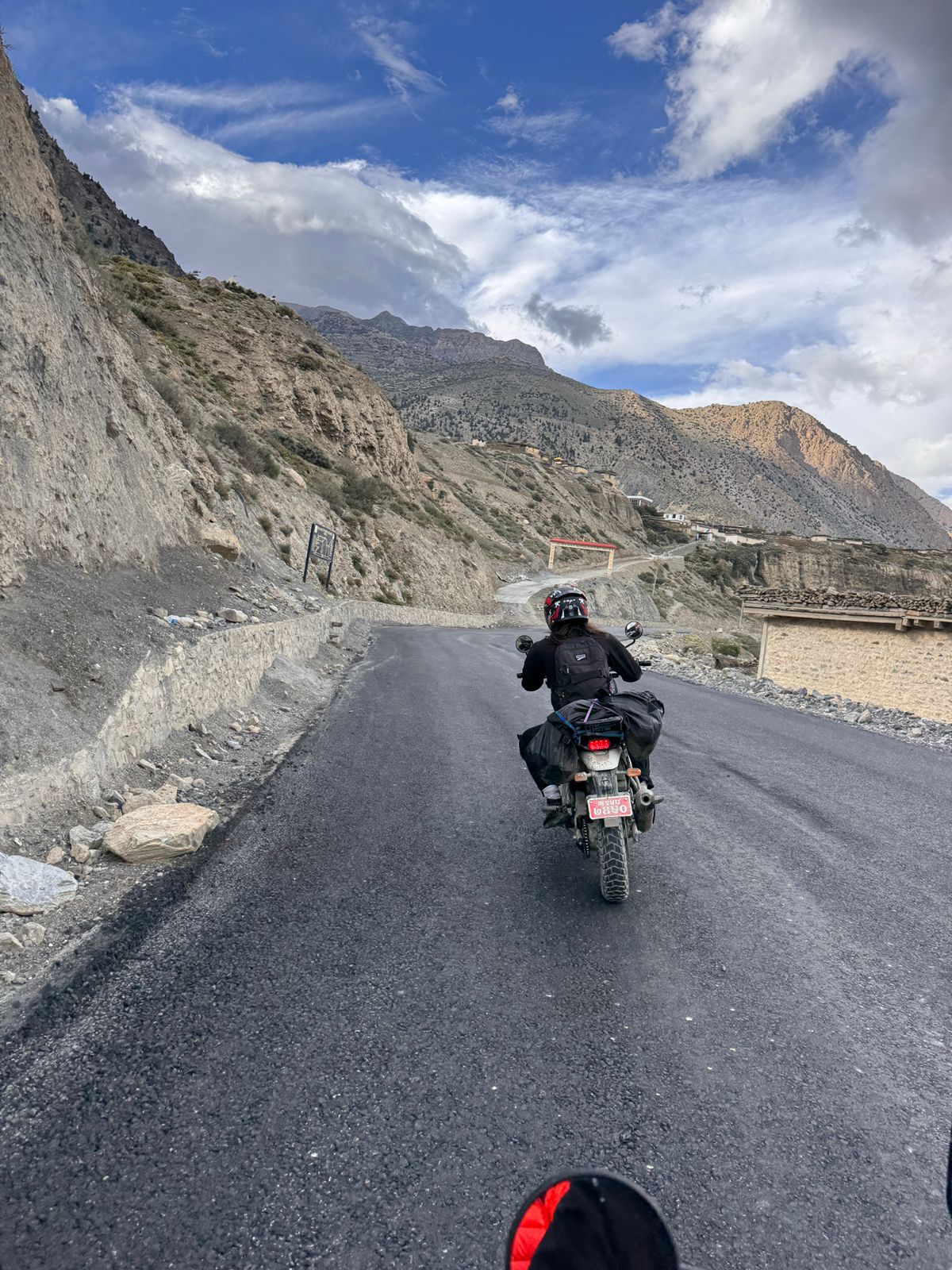
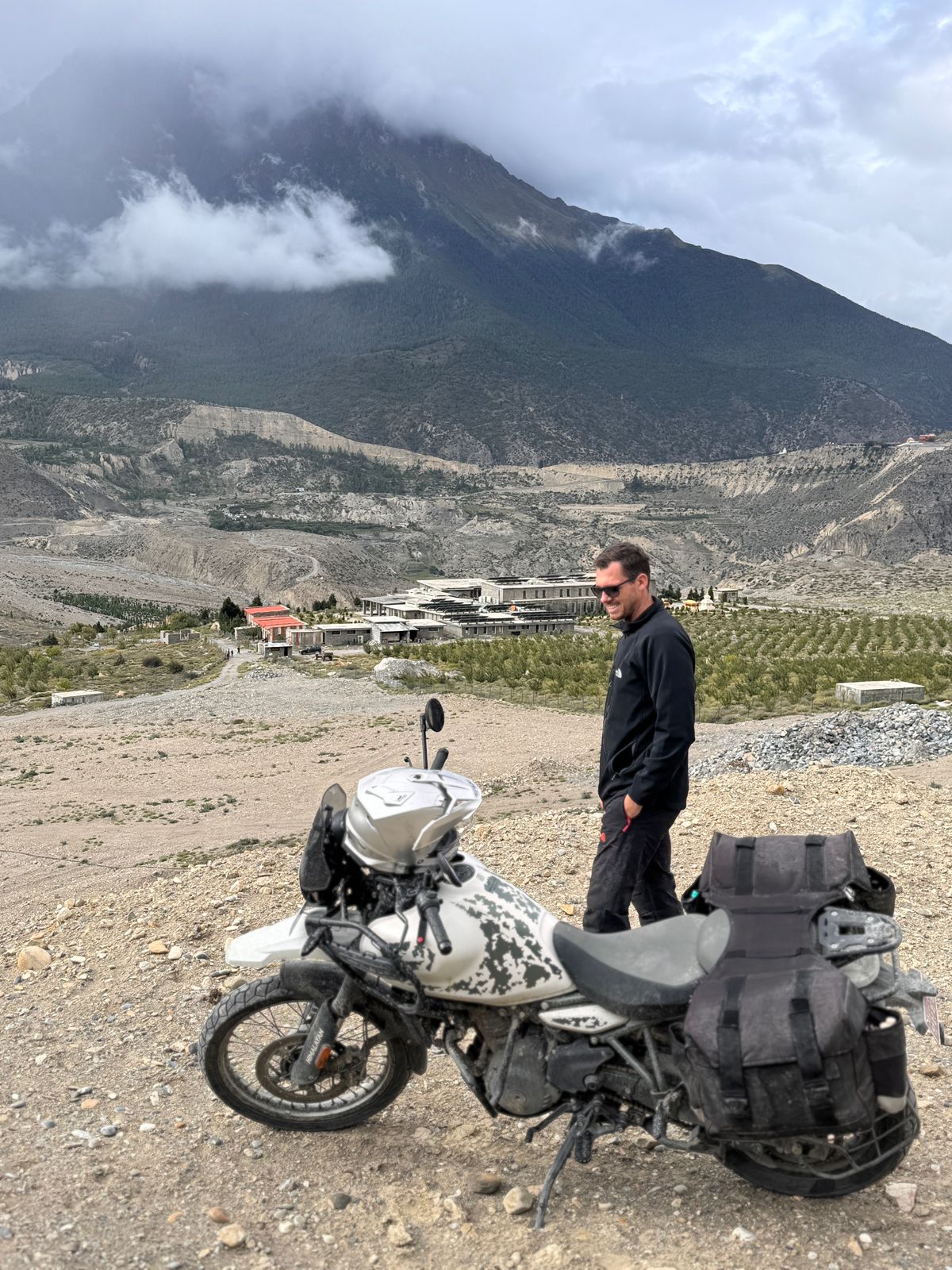
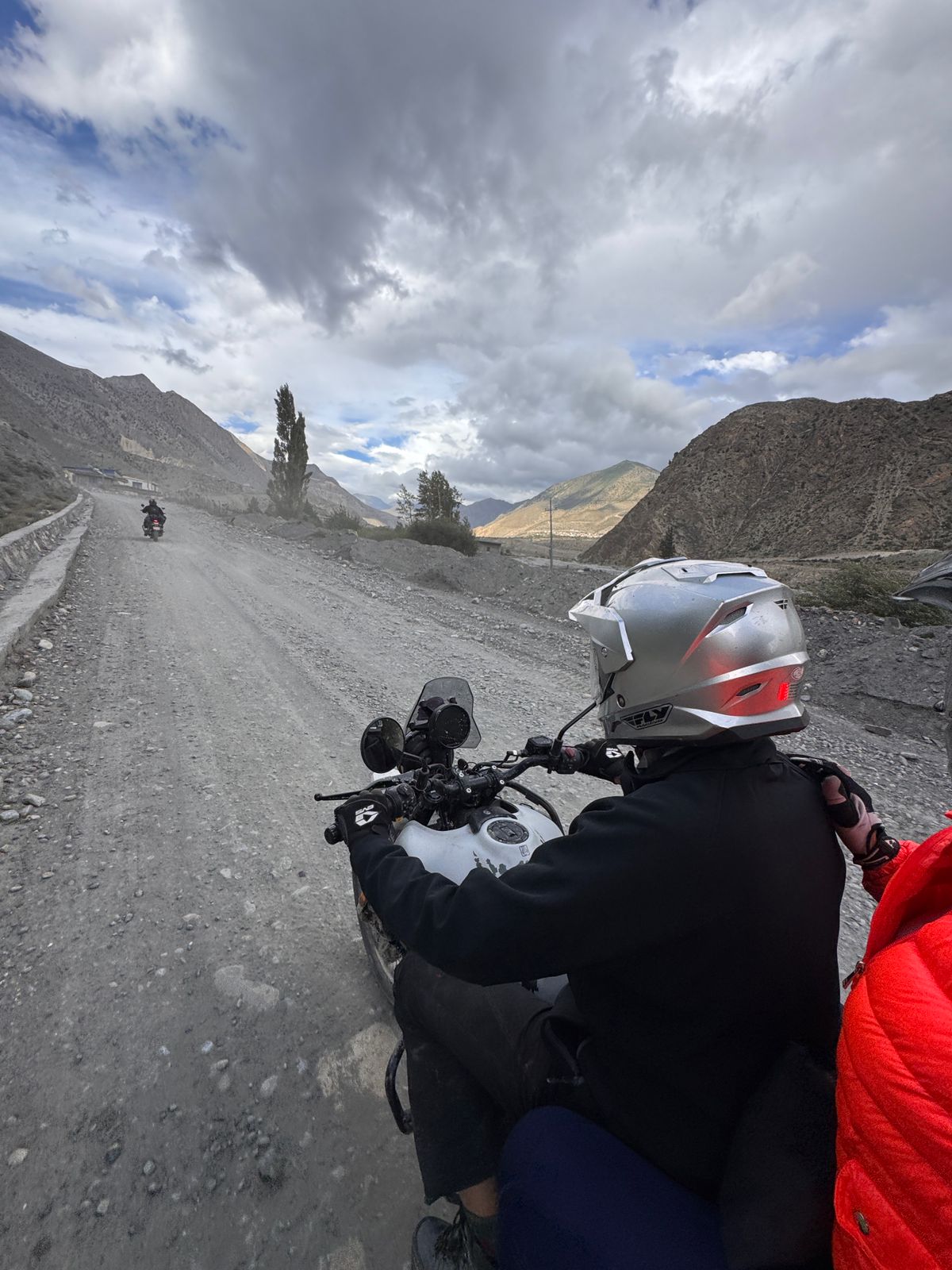
Tour Images (6)
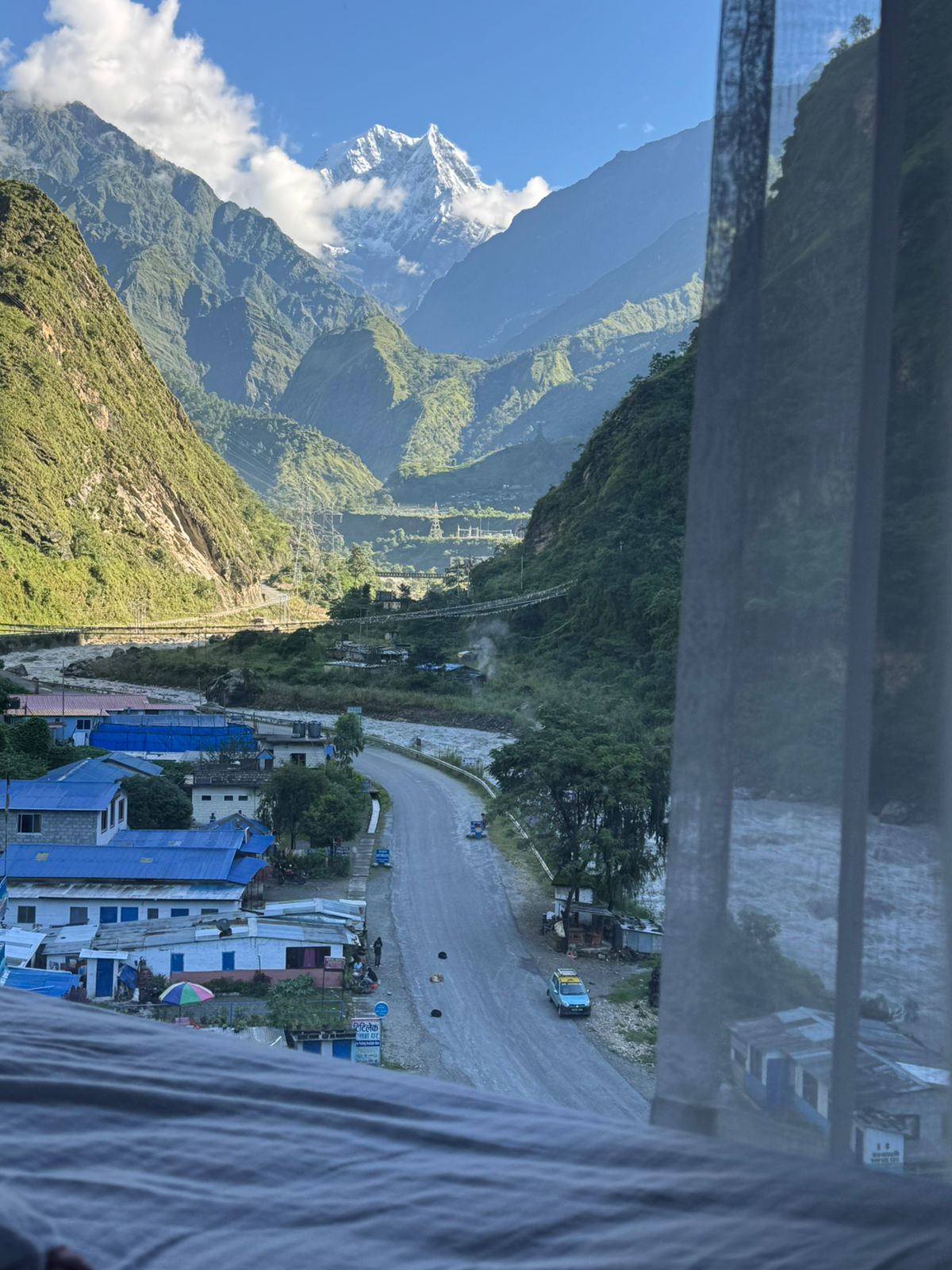
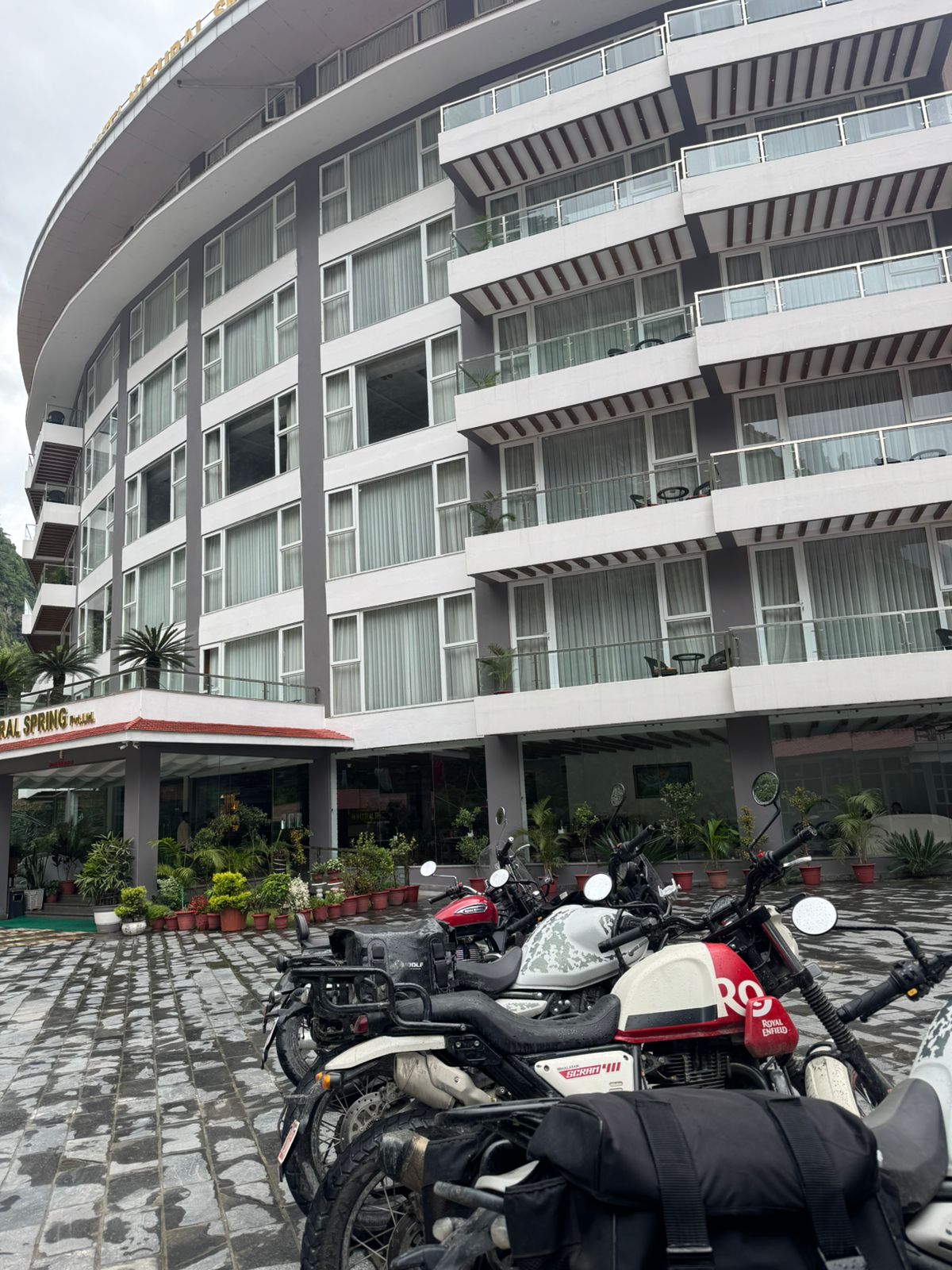
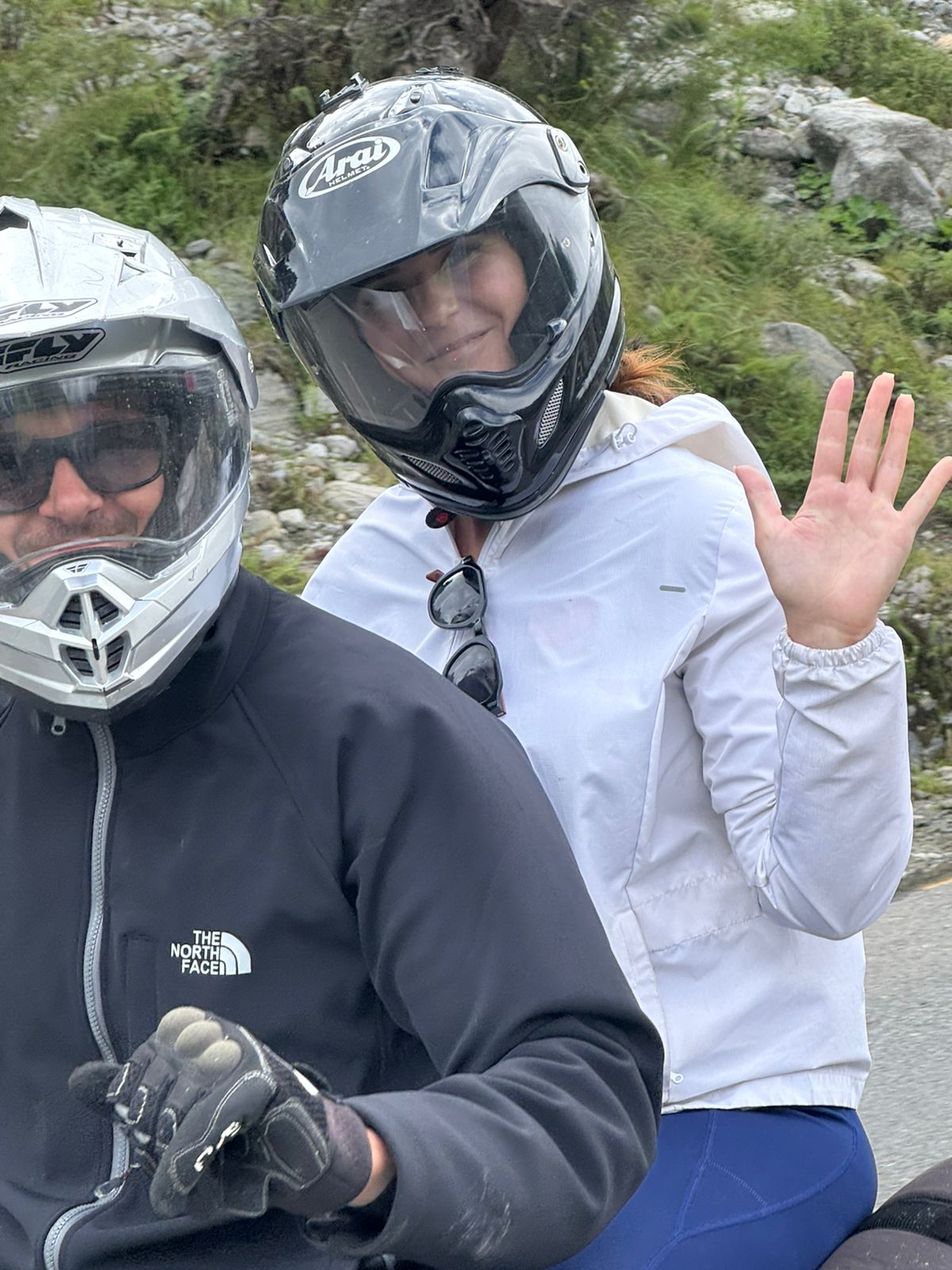
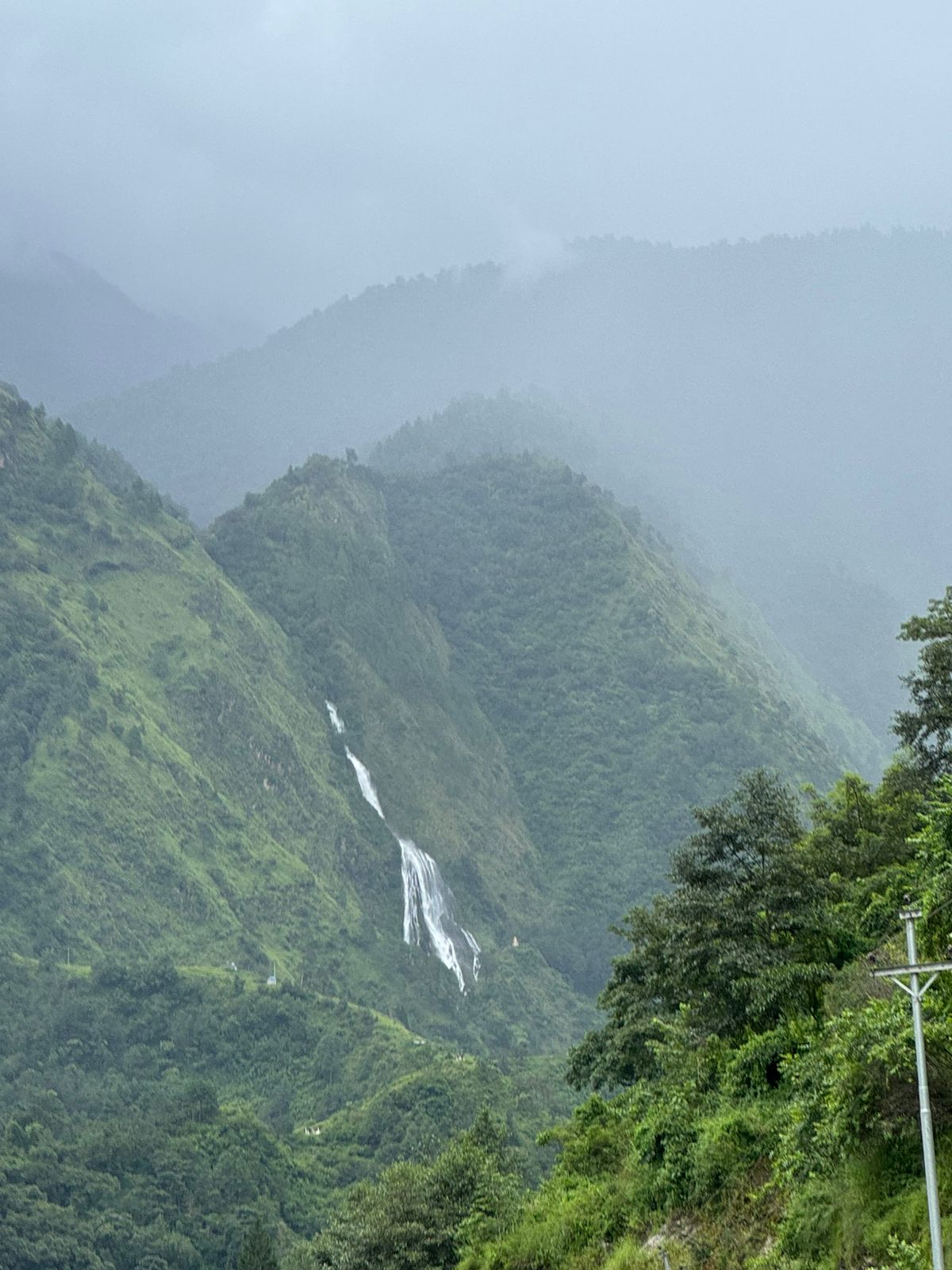
Tour Images (6)
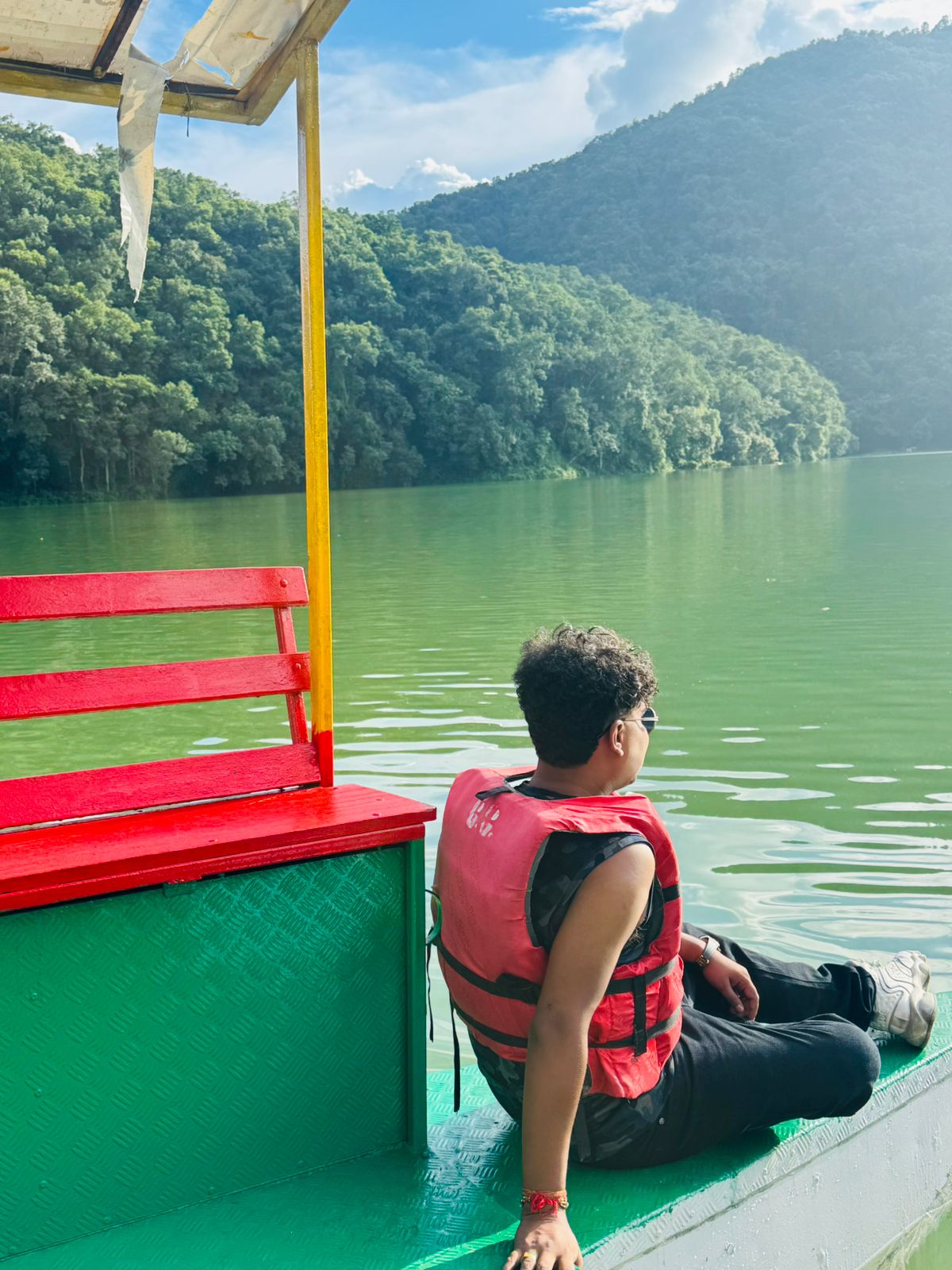
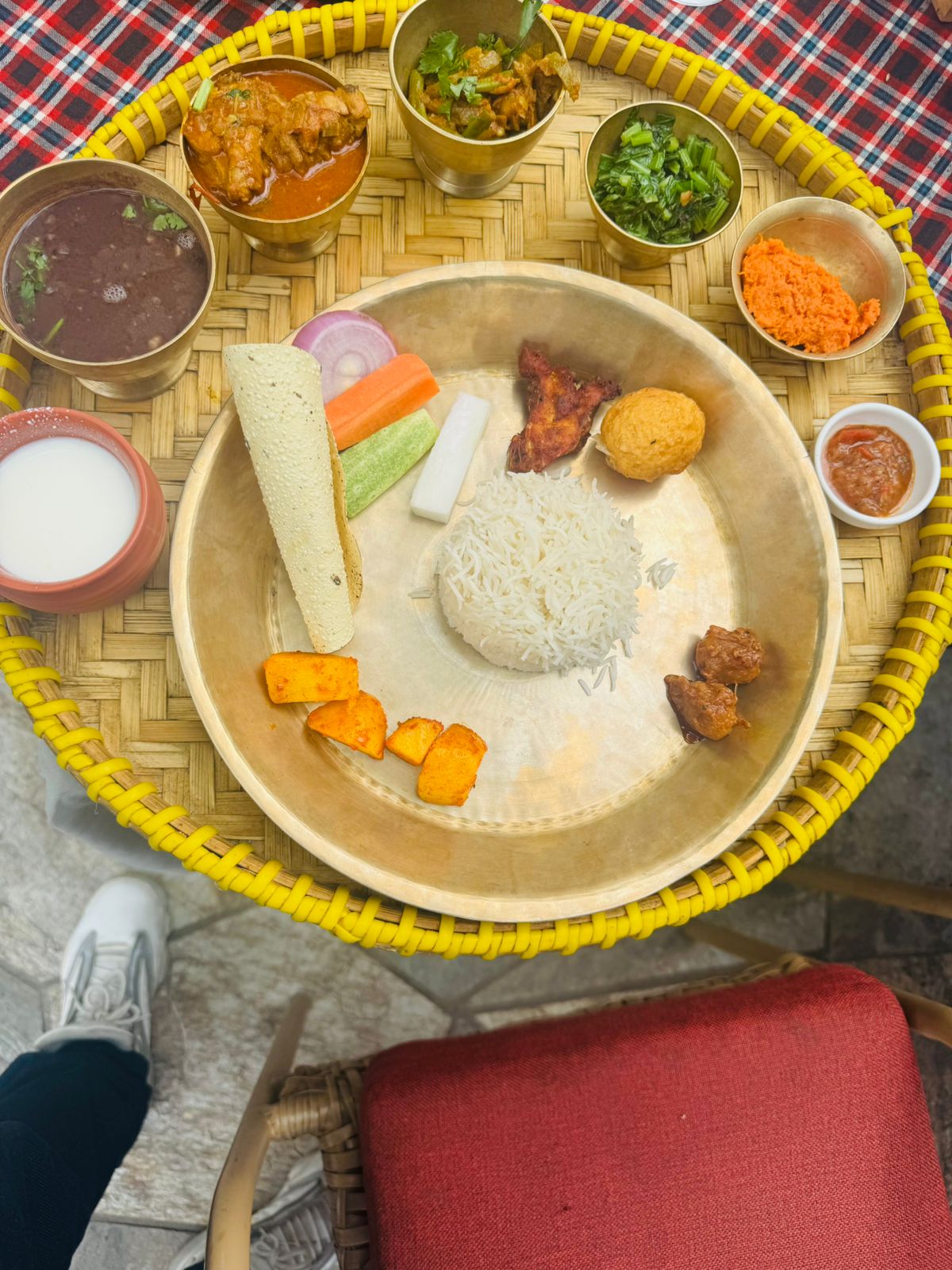
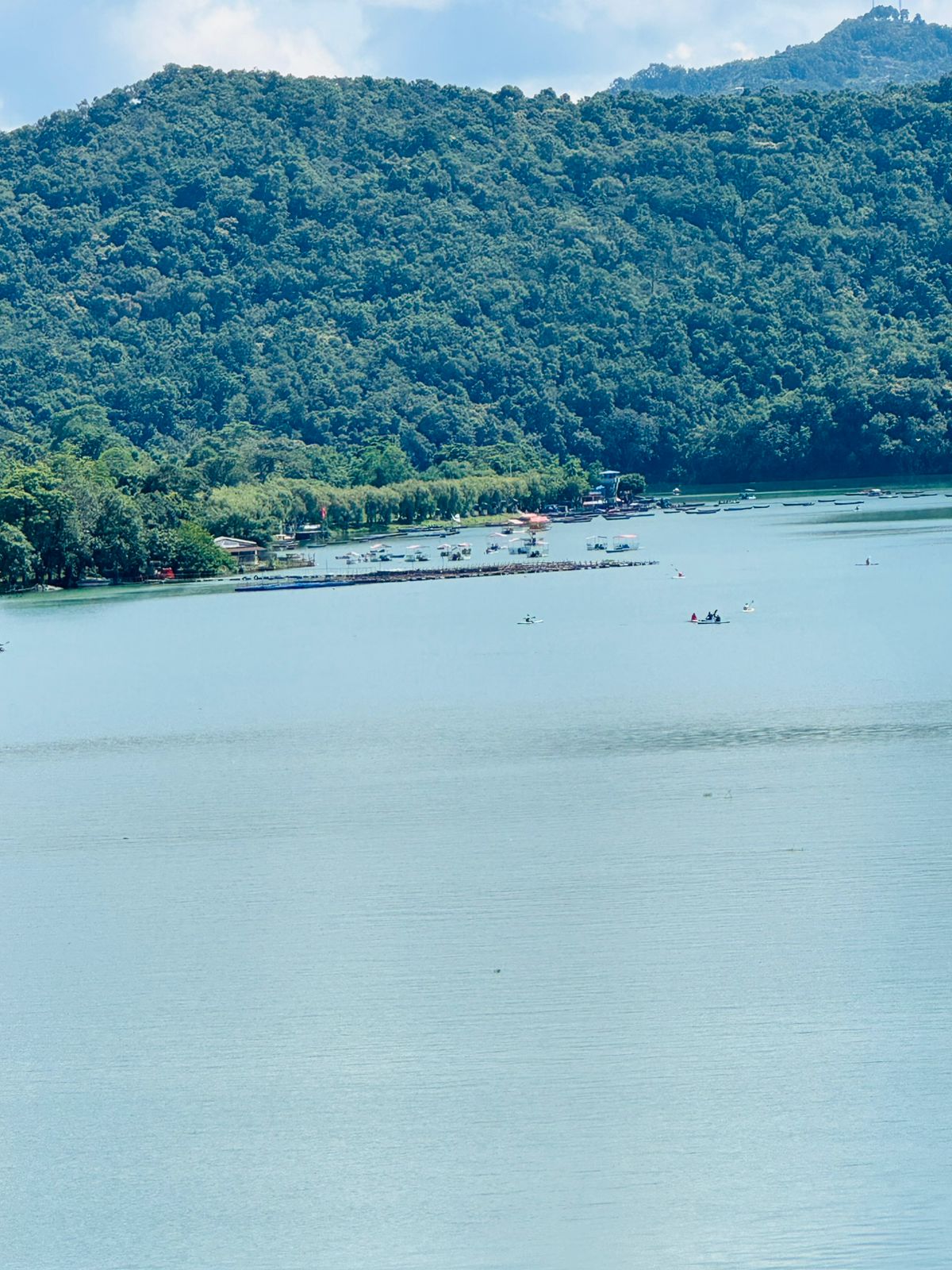
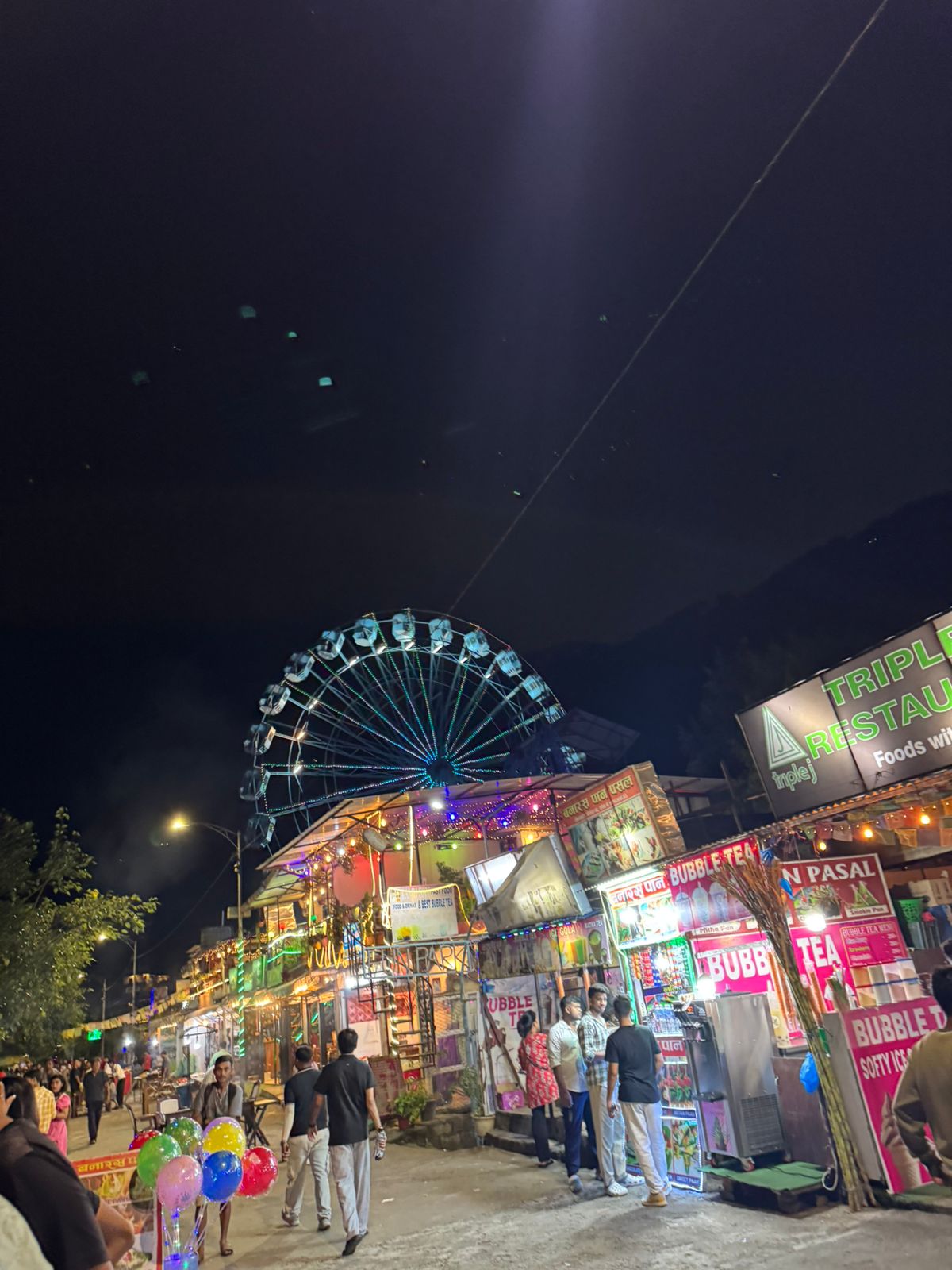
More Information
Difficulty Level – Is the Mustang Ride for You?
The Lower Mustang ride is moderate difficulty:
- Roads: Highways + gravel + rocky tracks.
- Altitude: Max 3,800m (manageable).
- Riding Hours: 5–7 hrs/day.
- Skill: Best for intermediate riders, but beginners can join with guides.
Note: Expect adventure, dirt, and challenges, but also safety, support, and guidance.
Permits & Requirements
- ACAP Permit – $30
- TIMS Card – $20
- Valid Passport & Nepal Visa (on arrival available).
- International Driving Permit (IDP) – recommended.
Note: All permits arranged by us.
Best Time to Ride Lower Mustang
The Lower Mustang region of Nepal can technically be explored year-round, but the best time for a motorbike tour is during the spring (March to May) and autumn (September to November) seasons. These months offer the most rider-friendly conditions, stunning landscapes, and reliable weather.
- Spring (March – May)
Spring brings mild temperatures, crystal-clear skies, and blooming rhododendrons that paint the hillsides in vibrant reds and pinks. The roads are generally dry, making off-road sections easier to navigate. This season is ideal if you want a mix of adventure riding and natural beauty, with plenty of photography opportunities along the way.
- Autumn (September – November)
Autumn is considered the peak season for riding in Mustang. After the summer monsoon, the air is crisp and the skies are at their clearest, offering jaw-dropping Himalayan views of Annapurna, Dhaulagiri, and Nilgiri. Temperatures are stable, the trails are in excellent condition, and local villages are lively with festivals, making it the most popular time for both trekkers and riders.
- While winter (Dec–Feb) brings colder conditions and occasional snow at higher elevations, Lower Mustang remains drier than most Himalayan regions and can still be ridden with proper gear. Similarly, summer (Jun–Aug) is monsoon season, when the roads can get muddy and challenging, but adventurous riders who don’t mind a little rain may still enjoy the lush greenery and fewer crowds.
Culture & Attractions in Lower Mustang
A motorbike journey through Lower Mustang is not just about the roads and mountain views — it’s also an immersion into centuries-old traditions, sacred sites, and unique Himalayan communities. Along the way, riders encounter villages, temples, and landscapes that tell the story of Mustang’s rich cultural heritage.
- Kagbeni – Gateway to Upper Mustang
Riding into Kagbeni feels like stepping back in time. This medieval village, perched at the confluence of the Kali Gandaki and Jhong rivers, is the traditional gateway to Upper Mustang. With its mud-brick houses, narrow alleys, and ancient monasteries, Kagbeni reflects authentic Tibetan-influenced culture. Exploring its streets offers a glimpse of life unchanged for centuries.
- Muktinath Temple – Sacred Hindu-Buddhist Site
A highlight for many riders is reaching Muktinath (3,800m), one of the most important pilgrimage sites in Nepal. Here, Hindu and Buddhist devotees come together to worship at the temple of eternal flame and the 108 sacred water taps. The spiritual energy is palpable, and the panoramic views of the surrounding Mustang landscape make the ride here unforgettable.
- Marpha – The Apple Capital of Nepal
Nestled in the Kali Gandaki Valley, Marpha is famous for its apple orchards and locally made cider, juice, and brandy. After a long day of riding, many travelers enjoy sampling Marpha’s apple products while strolling through its stone-paved alleys and visiting the local monasteries. The village is also home to the Thakali people, known for their warm hospitality and delicious cuisine.
- Jomsom – Windy Town with Himalayan Vistas
The bustling town of Jomsom serves as the administrative center of Mustang and is well-known for its strong afternoon winds. Despite the harsh climate, Jomsom offers spectacular views of Nilgiri and Dhaulagiri peaks, making it an essential stop on the Lower Mustang motorbike circuit.
- Kali Gandaki Gorge – The World’s Deepest Gorge
Cutting through the Himalayas between Annapurna and Dhaulagiri, the Kali Gandaki Gorge is recognized as the deepest gorge in the world. Riding through this dramatic landscape, with sheer cliffs rising thousands of meters on either side, is a once-in-a-lifetime experience that blends geology with adventure.
- Thini Village & the Thakali Community
Close to Jomsom lies Thini Village, one of the oldest settlements in Mustang. It is home to the Thakali people, who are known for their distinctive architecture, cuisine, and cultural traditions. Visiting Thini provides a deeper understanding of Mustang’s living heritage and offers riders the chance to enjoy authentic Thakali meals prepared with local ingredients.
Cost of a Lower Mustang Motorcycle Tour
The cost of riding Lower Mustang depends on whether you join a guided group tour or choose an independent, self-guided rental. Both options are available, catering to different riding styles and budgets.
Guided Group Tour: $1,500 – $2,900 per rider
A guided motorcycle tour in Lower Mustang offers the most hassle-free and immersive experience. Prices typically include your motorcycle, professional guide, support vehicle, accommodation, meals, permits, and fuel. With everything taken care of, you can focus purely on the ride — from tackling the rocky trails of the Kali Gandaki Gorge to soaking in hot springs at Tatopani. This option is perfect for riders who want safety, local expertise, and camaraderie with fellow adventurers.
Independent Rental / Self-Guided: $50 – $90 per day
For experienced riders who prefer flexibility, renting a motorcycle in Nepal for a self-guided Lower Mustang ride is a budget-friendly choice. Daily rental prices range from $50 to $90 depending on the bike model (Royal Enfield Himalayan, Scram, or Honda CRF). You’ll cover your own accommodation, food, fuel, and permits, but the freedom to ride at your own pace is unbeatable. This option suits solo travelers or groups looking for adventure on their own terms.
Transparent Pricing – No Hidden Costs
Whether you choose a guided tour or an independent rental, all our prices are clear and upfront. Bikes are fully maintained, insured, and adventure-ready, so you won’t face unexpected charges during your trip.
Inclusions & Exclusions
When booking a Lower Mustang motorbike tour, it’s important to know exactly what’s included in the package and what you’ll need to arrange on your own. We believe in transparent pricing with no hidden costs.
✅ What’s Included
- Motorbike + Fuel – Adventure-ready motorcycles (Royal Enfield Himalayan, Scram, or Honda CRF) with daily fuel covered.
- Support Vehicle – A backup jeep (terms & conditions apply) for luggage and emergency assistance.
- Professional Guide – Experienced local rider-guide with knowledge of terrain, culture, and safety.
- Mechanical Support – On-tour mechanic to handle breakdowns and adjustments.
- Accommodation – Comfortable stays in local tea houses, guesthouses, and boutique hotels in cities.
- Meals – Daily breakfast, lunch, and dinner included during the tour.
- Permits – All required trekking and restricted area permits for Mustang.
❌ What’s Excluded
- International & domestic flights to/from Kathmandu or Pokhara.
- Nepal visa fees (arranged on arrival at Kathmandu airport).
- Travel insurance (mandatory, must cover motorbiking & high-altitude travel).
- Personal gear & clothing (helmets, boots, riding jackets, gloves, etc.).
Accommodation & Food
During the journey through Lower Mustang, accommodation is simple but cozy. Riders stay in tea houses and guesthouses run by local families, offering warmth, hospitality, and a true cultural experience. Rooms are basic yet comfortable, often with twin sharing beds and thick blankets.
Meals along the way are a highlight of the trip. Expect a mix of Nepali and Tibetan cuisine — hearty dal bhat (rice and lentils), noodles, momos (dumplings), Tibetan bread, soups, and occasional continental options in larger towns. It’s comfort food that keeps you fueled for long days of riding.
Wi-Fi and charging facilities are available in major villages like Jomsom, Kagbeni, and Marpha, but connectivity can be limited in remote areas. Riders are encouraged to carry a power bank or solar charger to stay powered up.
Safety & Support (T&C Apply)
Your safety is our top priority. Every Lower Mustang motorcycle tour includes:
- Support Jeep with Spare Parts – Following the group for logistics and emergencies.
- Mechanic & Experienced Guide – On-hand technical support and local knowledge.
- First Aid & Evacuation Backup – Basic medical kit plus emergency evacuation arrangements.
- Pre-Tour Training & Test Ride – A short practice ride and orientation before departure to ensure you’re confident on the terrain and familiar with your motorbike.
Note: This setup ensures you get the thrill of riding in the Himalayas with the peace of mind that everything essential is already taken care of.
Travel Tips for Riders in Lower Mustang
Riding in Lower Mustang is an unforgettable adventure, but conditions can be challenging. These tips will help you ride safely and enjoyably through Nepal’s Himalayan landscapes:
- Carry Cash – ATMs are rare in the Mustang region, and many tea houses or shops don’t accept cards. Always carry enough Nepali rupees for snacks, small purchases, and emergencies.
- Start Early – The winds in Jomsom and Kagbeni pick up strongly in the afternoons, making riding difficult. Beginning your ride early in the day ensures smoother, safer travel.
- Dress in Layers – Weather can change quickly in the Himalayas, from warm valleys to chilly mountain passes. Layering lets you adapt to temperature shifts without discomfort.
- Stay Hydrated – High altitudes can cause dehydration more quickly than at sea level. Drink plenty of water and carry a reusable bottle or hydration pack.
- Respect Local Culture – Mustang is rich in Buddhist and Hindu traditions. Always ask before photographing people, dress modestly in monasteries, and respect local customs.
Packing List for a Mustang Motorbike Tour
Packing smart is essential for comfort, safety, and peace of mind on your journey. Here’s what every rider should bring:
- Riding Gear – Protective riding jacket, pants, gloves, and boots are crucial for safety and comfort on rough Himalayan trails.
- Helmet – DOT/ECE-certified helmets are provided, but many riders prefer bringing their own for the best fit and comfort.
- Sun Protection – Sunglasses, high-SPF sunscreen, and lip balm with UV protection are must-haves for the strong mountain sun.
- Electronics & Power – A reliable power bank or solar charger helps keep phones, cameras, and GPS devices charged in areas with limited electricity.
- Personal Medications – Carry any prescription medicines, plus basic first aid items such as painkillers, altitude tablets, and rehydration salts.
- Optional Extras – Lightweight down jacket, scarf or buff, and a reusable water bottle can make your ride more comfortable.
Pro Tip: With the right preparation and gear, riders can fully enjoy the breathtaking landscapes, challenging trails, and rich cultural experiences of Lower Mustang without worrying about the basics.
Dos & Don’ts for Riding in Lower Mustang
To ensure a safe, enjoyable, and respectful journey through the Himalayas, here are some important guidelines for riders:
✅ Dos
- Respect Monasteries & Sacred Sites – Mustang is home to centuries-old Buddhist monasteries and Hindu temples. Always remove your shoes before entering, dress modestly, and ask before taking photos.
- Ride Cautiously – Mountain roads can be narrow, dusty, and unpredictable. Ride at a controlled speed, give way to locals and animals, and use your horn sparingly but wisely on blind turns.
❌ Don’ts
- Don’t Litter – The fragile Himalayan ecosystem is highly sensitive. Carry your waste with you or dispose of it properly in villages. Plastic bottles, wrappers, and cigarette butts should never be left on the trails.
- Don’t Drink & Ride – Alcohol and motorbiking never mix, especially on mountain roads where focus and quick reflexes are essential. Save the local apple brandy for the evening after your ride.
Sustainable Travel in Lower Mustang
We believe in responsible and sustainable travel, ensuring that your adventure leaves a positive impact on the local communities and environment. Riders are encouraged to:
- Avoid Single-Use Plastics – Bring a reusable water bottle or hydration pack. Many lodges provide safe refilling stations.
- Stay in Local Tea Houses – Choosing family-run tea houses and guesthouses supports local livelihoods while giving you an authentic Himalayan experience.
- Support Local Products – Whether it’s Marpha’s apple cider, Thakali cuisine, or handmade crafts, buying local helps preserve Mustang’s culture and economy.
- Travel in Small Groups – Smaller groups reduce environmental impact, ease strain on village resources, and allow more meaningful cultural interactions.
Pro tip: By following these dos and don’ts and practicing sustainable travel habits, riders not only enjoy a safer journey but also contribute to protecting the unique landscapes and traditions of Lower Mustang for future generations.
Departures 2025 & 2026
- Spring & Autumn fixed departures.
- Custom dates available.
- Limited seats – book early
Reviews from Past Riders
- “Best ride of my life – Mustang feels like another planet.”
- “Bikes were in excellent condition, guides were amazing.”
- “Unforgettable – culture, adventure, and pure freedom.”
What Makes This Lower Mustang Motorbike Tour Different?
- This Lower Mustang motorbike adventure stands out for its focus on authenticity, safety, and rider support. Unlike large commercial operators, our tours are locally owned and operated, which means you benefit from guides with intimate knowledge of the region, its culture, and the roads.
- We pride ourselves on transparent pricing with no hidden fees, so you know exactly what your tour includes. Riders also enjoy 24/7 support from our team — whether it’s mechanical assistance, navigation help, or medical backup.
- To ensure a rich and personal experience, we keep our tours small-group, allowing for a relaxed pace, meaningful interactions with local communities, and easy access to the region’s most scenic and culturally significant spots. From winding mountain trails to remote villages, this is not just a ride — it’s an immersive Himalayan adventure.
Useful Information for Riders (Quick Facts)
- Maximum Altitude: 3,800 meters at Muktinath, requiring proper acclimatization and riding awareness.
- Must-Visit Spots: Kagbeni, Muktinath Temple, Marpha, and the Kali Gandaki Gorge.
- Internet Connectivity: Limited; available in Jomsom, Kagbeni, and a few main villages. Carry a power bank for backup.
- Trip Extensions: Options to extend your adventure into Upper Mustang, the Annapurna region, or even Tibet for experienced riders.
Insurance: Travel and motorbike insurance are mandatory to ensure peace of mind during high-altitude riding
Available Fleets
Choose from our premium fleet of motorcycles for your adventure
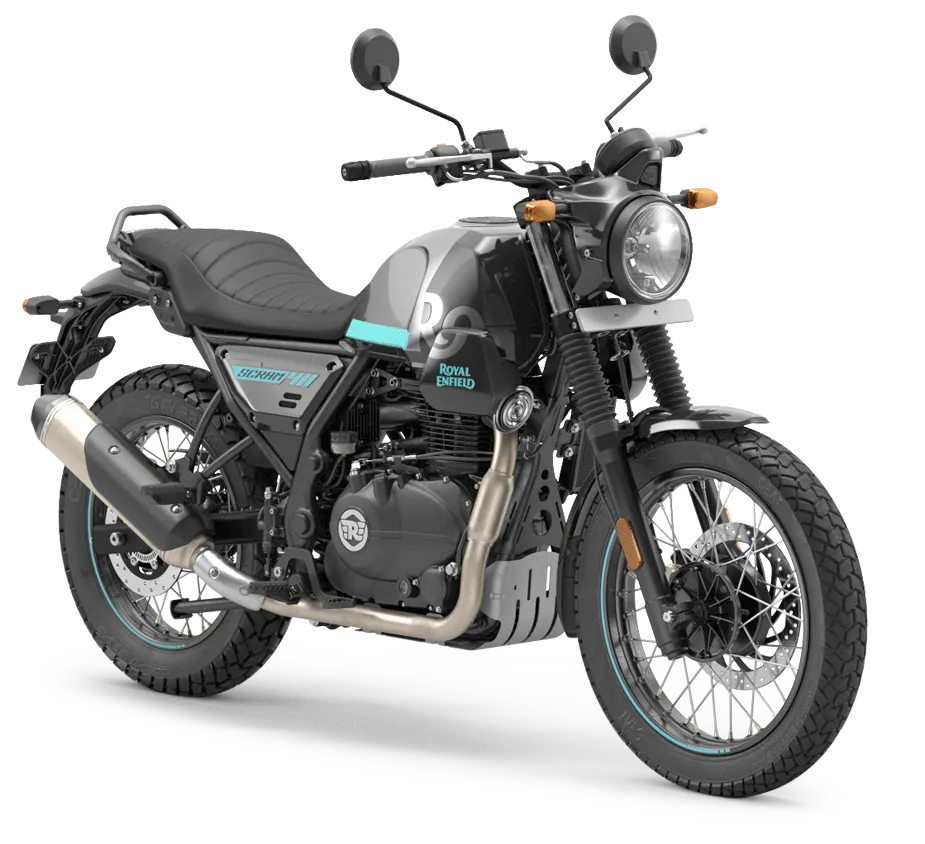
Royal Enfield Himalayan Scram 411 CC
The Royal Enfield Himalayan 411 is a proven classic for Himalayan expeditions. With its long-travel suspension, upright riding position, and torquey single-cylinder engine, it’s designed to handle rocky tracks, river crossings, and steep ascents with confidence. It offers a balance of comfort and capability—perfect for multi-day rides into Mustang’s rugged terrain.
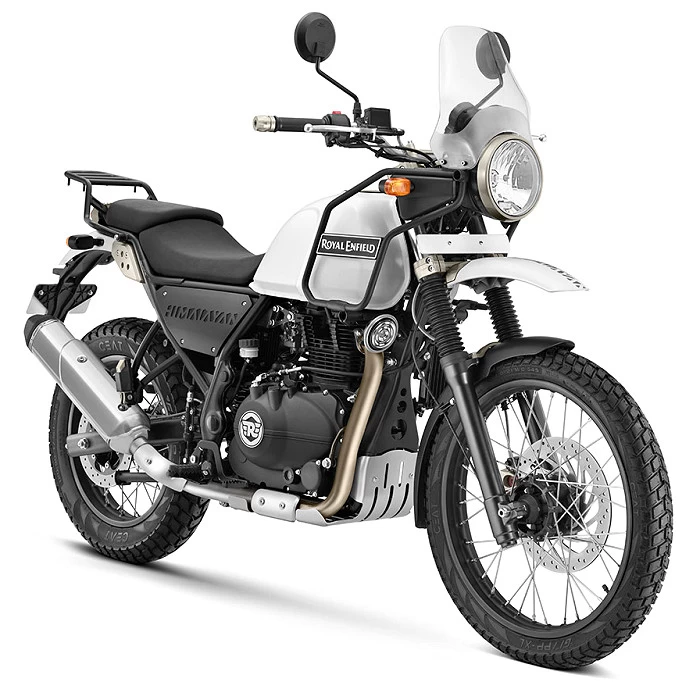
Royal Enfield Himalayan 410 CC
The newest and most advanced in the Himalayan lineup, the Royal Enfield Himalayan 450 brings modern engineering to classic adventure touring. With liquid cooling, more horsepower, and upgraded suspension, it’s built to conquer the toughest off-road sections while delivering smoother performance on long highway stretches. This is the top choice for riders who want maximum comfort and capability in Nepal’s mountains.
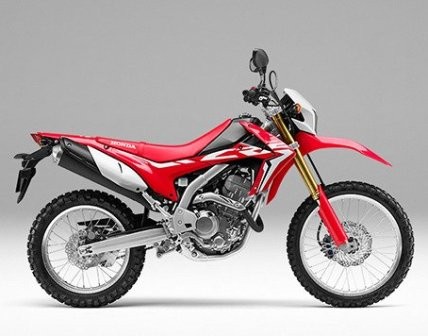
Honda CRF 250L
Lightweight, agile, and responsive, the Honda CRF 250L is the perfect choice for riders who enjoy technical trails and nimble handling. Its off-road pedigree makes it excellent for navigating suspension bridges, narrow ridgelines, and rocky riverbeds. With reliable Honda engineering, it’s especially popular among adventure riders who want a blend of fun and efficiency in Mustang’s diverse terrain. Whether you prefer the raw power of the Himalayan 450, the proven reliability of the Himalayan 411, the nimble agility of the Honda CRF 250L, or the stylish versatility of the Scram 411, we’ve got the right motorcycle for your Lower Mustang journey. All bikes are adventure-prepped, insured, and ready to take you into the heart of the Himalayas.
Frequently Asked Questions
Faqs:
Tour Videos
Share your experience with this tour
Reviews & Ratings
Prabash Thakur
Riding through Lower Mustang with Nepal Moto Tour was truly an adventure of a lifetime – the journey takes you from lush valleys to dramatic, desert-like landscapes with breathtaking views of Annapurna and Dhaulagiri, winding highways, gravel trails, river crossings, and ancient villages that feel frozen in time. Highlights included soaking in the hot springs at Tatopani, riding through the windy Jomsom valley, tasting Marpha’s famous apple brandy, and exploring the mystical village of Kagbeni, all while enjoying the reliability of well-maintained motorbikes and the support of a professional team that ensured both safety and thrill. More than just a ride, the Lower Mustang Motorbike Tour immerses you in local culture, monasteries, and warm Himalayan hospitality – making it the perfect blend of challenge, beauty, and unforgettable experiences on two wheels.
